Qualcomm Snapdragon 660 Vs Qualcomm Snapdragon 845 Comparison: Benchmark, Difference and Performance
Discuss
What is the difference between Qualcomm Snapdragon 660 and Qualcomm Snapdragon 845? Should you buy phone having Qualcomm Snapdragon 660 or should go for Qualcomm Snapdragon 845? Well, you’ll get all your questions cleared here.Compare two chipset models on the basis of their benchmark score (AnTuTu and Geekbench), pros and cons, technical specs categorised into gaming, CPU, GPU, Multimedia, and Connectivity.
Qualcomm Snapdragon 660 has a AnTuTu benchmark score of 156749 and Qualcomm Snapdragon 845 has AnTuTu score of 363186. Qualcomm Snapdragon 660 comes up with 8 cores, 2200 MHz frequency and on the other hand, Qualcomm Snapdragon 845 has 8 cores and 2800 MHz frequency. In terms of Graphics, Qualcomm Snapdragon 660 has Adreno 512 GPU and Adreno 500 architecture and latter Qualcomm Snapdragon 845 comes up with Adreno 630 GPU and Adreno 600 architecture.
Go through detailed comparison below to see the actual difference and similarity between both chipsets.
Snapdragon 660 Vs Snapdragon 845
| Specifications | Snapdragon 660 | Snapdragon 845 |
|---|---|---|
| Total score | 156749 | 363186 |
| Frequency | 2200 MHz | 2800 MHz |
| Max size | 8 GB | 8 GB |
| Max display resolution | 2560 x 1600 | 3840 x 2160 |
+ Read More
Compare Chipsets
Hide Common features
AnTuTu Score |
||
| CPU | 69937 | 101932 |
| GPU | 24360 | 144105 |
| Memory | 32441 | 56515 |
| UX | 27977 | 57020 |
| Total score | 156749 | 363186 |
Chipset Mobile Phones
-
Xiaomi Redmi Note 7
₹ 10,290
-
Realme 2 Pro
₹ 12,900
-
Vivo V11 Pro
₹ 24,999
-
Xiaomi Mi A2
₹ 12,499
-
Xiaomi Redmi Note 7S
₹ 10,999
-
OPPO K1
₹ 13,609
-
Vivo V9 Pro
₹ 14,999
-
Nokia 7.
 2
2₹ 16,500
-
Vivo Z1
₹ 20,099
-
Xiaomi mi Note 3
₹ 9,698
-
POCO F1
₹ 15,999
-
OnePlus 6T
₹ 49,999
-
OnePlus 6
₹ 13,299
-
Google Pixel 3
₹ 21,999
-
Asus ROG Phone
₹ 29,999
-
Black Shark
₹ 31,256
-
Vivo NEX
₹ 23,700
-
LG Velvet
₹ 41,900
-
OPPO Find X
₹ 41,999
-
Samsung Galaxy S9
₹ 34,999
Connectivity Features |
||
| Modem | X12 | X20 LTE |
| 4G support | LTE Cat. 12 | LTE Cat. 18 |
| 5G support | No | No |
| Download speed | Up to 600 Mbps | Up to 1200 Mbps |
| Upload speed | Up to 150 Mbps | Up to 150 Mbps |
| Wi-Fi | 5 | 5 |
| Bluetooth | 5. 0 0 |
5.0 |
Performance |
||
| Processor | 4x 2.2 GHz – Kryo 260 Gold (Cortex-A73)4x 1.84 GHz – Kryo 260 Silver (Cortex-A53) | 4x 2.8 GHz – Kryo 385 Gold (Cortex-A75)4x 1.5 GHz – Kryo 385 Silver (Cortex-A55) |
| Cores | 8 | 8 |
| Frequency | 2200 MHz | 2800 MHz |
| Instruction set | ARMv8-A | ARMv8.2-A |
| L2 cache | 2 MB | 1 MB |
| Process | 14 nanometers | 10 nanometers |
| Transistor count | 1.75 billion | 3 billion |
| TDP | 9 W | 9 W |
Geekbench Score |
||
| Image compression | 88.7 Mpixels/s | 128.5 Mpixels/s |
| Face detection | 12 images/s | 20.4 images/s |
| Speech recognition | 24. 1 words/s 1 words/s |
37.8 words/s |
| Machine learning | 18.3 images/s | 35.8 images/s |
| Camera shooting | 11 images/s | 19.4 images/s |
| HTML 5 | 1.76 Mnodes/s | 2.62 Mnodes/s |
| SQLite | 487.4 Krows/s | 686.3 Krows/s |
Graphics |
||
| GPU name | Adreno 512 | Adreno 630 |
| Architecture | Adreno 500 | Adreno 600 |
| GPU frequency | 850 MHz | 710 MHz |
| Execution units | 1 | 2 |
| Shading units | 128 | 256 |
| FLOPS | 217 Gigaflops | 727 Gigaflops |
| Vulkan version | 1.0 | 1.0 |
| OpenCL version | 2.0 | 2.0 |
| DirectX version | 12 | 12 |
Memory Info |
||
| Memory type | LPDDR4X | LPDDR4X |
| Memory frequency | 1866 MHz | 1866 MHz |
| Bus | 2x 32 Bit | 4x 16 Bit |
| Max bandwidth | 29. 8 Gbit/s 8 Gbit/s |
29.8 Gbit/s |
| Max size | 8 GB | 8 GB |
Multimedia |
||
| Neural processor (NPU) | Hexagon 680 | Hexagon 685 |
| Storage type | UFS 2.1 | UFS 2.1 |
| Max display resolution | 2560 x 1600 | 3840 x 2160 |
| Max camera resolution | 1x 48MP, 2x 16MP | 1x 32MP, 2x 16MP |
| Video capture | 4K at 30FPS | 4K at 60FPS |
| Video playback | 4K at 30FPS | 4K at 120FPS |
| Video codecs | H.264, H.265, VP8, VP9 | H.264, H.265, VP9 |
| Audio codecs | AAC LC, MP3, HE-AACv1, HE-AACv2, FLAC | DSD 32-???/384 ??? |
Browse Chipset By
Which Chipset would you prefer?
Snapdragon 845Infinity
%
Snapdragon 660Infinity
%
Total:0
Similar Comparison
Popular Mobiles
-
Xiaomi Redmi 9
₹ 9,499
-
Realme C11
₹ 7,835
-
OPPO A15s
₹ 9,990
-
Xiaomi Redmi 10A
₹ 8,499
-
Realme C31
₹ 9,299
-
Realme C3 (Triple Cameras)
₹ 8,999
-
POCO C31
₹ 7,880
-
Infinix Hot 10
₹ 9,499
-
Xiaomi Redmi 9i
₹ 8,799
-
OPPO A15
₹ 8,989
-
Realme 9 Pro
₹ 19,972
-
Xiaomi Redmi Note 10 Pro
₹ 15,999
-
Oppo F21
₹ 16,785
-
Xiaomi Redmi Note 11 Pro
₹ 17,999
-
Vivo S1
₹ 17,200
-
Oppo F17 Pro
₹ 19,999
-
Vivo T1 5G
₹ 15,990
-
OPPO K10 5G
₹ 18,399
-
OPPO F19
₹ 19,990
-
Vivo Y73
₹ 17,990
-
Nothing Phone 1
₹ 31,999
-
Apple iPhone XR
₹ 37,999
-
iQOO
₹ 32,159
-
Apple iPhone 7 Plus
₹ 35,999
-
OnePlus 7 Pro
₹ 39,800
-
OnePlus 9
₹ 37,999
-
OPPO Reno
₹ 34,989
-
OnePlus ACE
₹ 35,000
-
Realme 10 Pro
₹ 36,290
-
Vivo V25 Pro 5G
₹ 35,999
-
Realme GT 2 Pro
₹ 52,185
-
OnePlus 10T
₹ 49,999
-
Oppo Reno 8 Pro
₹ 45,999
-
Iqoo 9T
₹ 49,999
-
OnePlus 9 Pro
₹ 49,999
-
Apple iPhone 12 Mini
₹ 54,490
-
Vivo X80
₹ 59,999
-
Xiaomi 12 Pro
₹ 54,999
-
Vivo X80 Pro
₹ 57,992
-
Apple iPhone XS Max
₹ 55,994
Detailed Comparison of Snapdragon 660 vs Snapdragon 845
Qualcomm Snapdragon 660 has been announced on May 2017 whereas Qualcomm Snapdragon 845 has been announced on December 2017.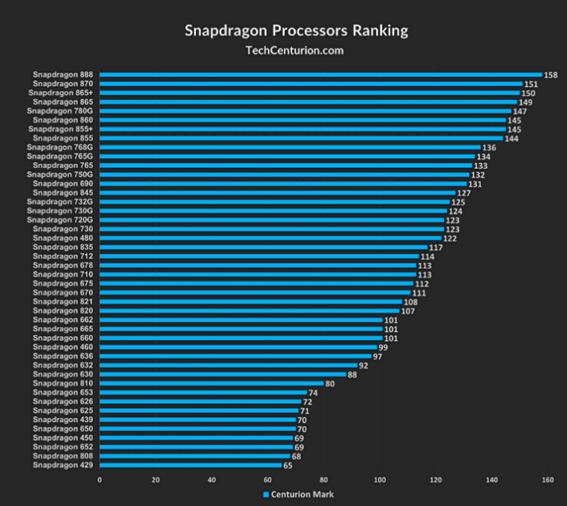 Check out detailed comparison with key specs below:
Check out detailed comparison with key specs below:
Benchmark Comparison: Snapdragon 660 vs Snapdragon 845
Benchmark measures the performance of the CPU. Geekbench is a benchmark that measures a processor’s single core performance and AnTuTu score is the most popular and trustable benchmarking score which evaluates multi core performance. Snapdragon 660 has an AnTuTu benchmark score of 156749 points with CPU, GPU, Memory, UX score 69937, 24360, 32441, 27977 respectively.
CPU Comparison: Snapdragon 660 vs Snapdragon 845
CPU speed shows how many processing cycles per second can be executed by a CPU. Snapdragon 660 comes up with the architecture of Adreno 500 and Snapdragon 845 comes up with architecture of Adreno 600. Former one has 8 core and 2200 MHz frequency and latter has 8 cores and 2800 MHz frequency. A larger cache time leads to faster performance.
Graphics Comparison: Snapdragon 660 vs Snapdragon 845
Qualcomm Snapdragon 660 has Adreno 512 GPU with GPU Frequency as 850 MHz. Dynamic frequency allows the processor to conserve power and reduce noise when it is under a light load. Qualcomm Snapdragon 845 has Adreno 630 GPU with GPU Frequency as 710 MHz.
Dynamic frequency allows the processor to conserve power and reduce noise when it is under a light load. Qualcomm Snapdragon 845 has Adreno 630 GPU with GPU Frequency as 710 MHz.
Memory Comparison: Snapdragon 660 vs Snapdragon 845
First chipset has max size of 8 GB and Qualcomm Snapdragon 845 has max size of 8 GB. It shows the maximum amount of memory supported by a chipset.
Multimedia and Connectivity Comparison: Snapdragon 660 vs Snapdragon 845
In terms of multimedia, Snapdragon 660 has Hexagon 680 NPU with storage type as UFS 2.1 and Snapdragon 845 has Hexagon 685 NPU and UFS 2.1 storage type.
User Reviews
NA out of 5
0 Ratings & 0 Review
V,G
Veermala Grewal
Posted on : 5th July 2021
features
Excellent features, high battery backup and awesome perfoemance.
X,C
Xavier Clinton
Posted on : 3rd July 2021
Best phone
Best phone in terms of price,features, looks and battery life
Z
Zehan
Posted on : 1st July 2021
Excellent
Flawless performance, advance camera, great battery backup.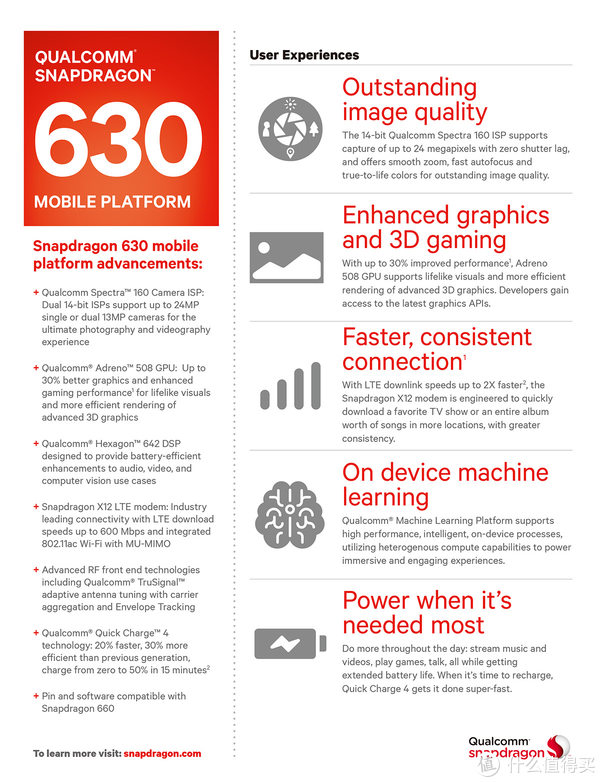 Excellent handset.
Excellent handset.
R,D
Rohini Das
Posted on : 29th June 2021
Perfect product!
Best value for money phone,excellent features like stereo speaker. only reason because of average battery life bit upset.
T,G
Telurama Gopala
Posted on : 22nd June 2021
Performance
Faster and smoother performance, water and dust resistant amazing phone with no issues. I am happy with the experience so far.
A
Abhinash
Posted on : 20th June 2021
Battery
it comes with 4000mah battery and also support fast charging
P
Prateek
Posted on : 17th June 2021
Camera
Fine camera , good in starting days but after few months, you will feel it has nothing great .
V
Virat
Posted on : 2nd June 2021
Great
Best phone I have used till date, amazing features, great camera quality, enough battery life.
D
Dheeraj
Posted on : 26th May 2021
Performance
Overall performance of this phone is fine, battery and other features are also good
R
Rahul
Posted on : 17th May 2021
Worth
The phone was great. Working perfectly. Smooth, the camera is great, the display too. Worth
Working perfectly. Smooth, the camera is great, the display too. Worth
B,J
Bisweshwar Jaigopala
Posted on : 9th May 2021
Display
Camera quality is good, battery life is fine, dual messenger feature is also there
N
Nitin
Posted on : 23rd April 2021
design
premium looks, great display and good color combinations and camera quality is decent.
FAQs
Q. Which model has better AnTuTu score — Snapdragon 660 or Snapdragon 845?
Snapdragon 845 has higher AnTuTu score at 363186 compare to Snapdragon 660 with total AnTuTu score at 156749 only.
Q. Which model has higher base frequency among Snapdragon 660 and Snapdragon 845?
Snapdragon 845 has a higher base frequency of 2800 MHz compared to Snapdragon 660 with 2200 MHz base frequency.
Q. Snapdragon 660 vs Snapdragon 845, which model has higher bandwidth?
Both Snapdragon 845 and Snapdragon 660 have same max bandwidth of 29.8 Gbit/s.
Q. Which model has higher number of cores — Snapdragon 660 or Snapdragon 845?
Both Snapdragon 845 and Snapdragon 660 have same cores value of 8 cores.
Q. What are some of the best phones having — Snapdragon 845 in the market?
Best phones having Snapdragon 845 are POCO F1, OnePlus 6T, OnePlus 6.
Qualcomm Snapdragon 660 vs Qualcomm Snapdragon 845: What is the difference?
68points
Qualcomm Snapdragon 660
67points
Qualcomm Snapdragon 845
vs
61 facts in comparison
Qualcomm Snapdragon 660
Qualcomm Snapdragon 845
Why is Qualcomm Snapdragon 660 better than Qualcomm Snapdragon 845?
Why is Qualcomm Snapdragon 845 better than Qualcomm Snapdragon 660?
- 13.12% faster CPU speed?
4 x 2.8GHz & 4 x 1.77GHzvs4 x 2.2GHz & 4 x 1.84GHz - 4nm smaller semiconductor size?
10nmvs14nm - 60MHz faster GPU clock speed?
710MHzvs650MHz - 2x faster downloads?
1200MBits/svs600MBits/s - 15GB/s more memory bandwidth?
29. 9GB/svs14.9GB/s
9GB/svs14.9GB/s - 2 more memory channels?
4vs2 - 110MHz faster GPU turbo speed?
710MHzvs600MHz - 0.6 higher version of eMMC?
5.1vs4.5
Which are the most popular comparisons?
Qualcomm Snapdragon 660
vs
MediaTek Helio P35
Qualcomm Snapdragon 845
vs
MediaTek Helio G90T
Qualcomm Snapdragon 660
vs
MediaTek Helio P60
Qualcomm Snapdragon 845
vs
MediaTek Dimensity 8100
Qualcomm Snapdragon 660
vs
MediaTek Helio G25
Qualcomm Snapdragon 845
vs
Mediatek Helio G95
Qualcomm Snapdragon 660
vs
HiSilicon Kirin 710
Qualcomm Snapdragon 845
vs
Qualcomm Snapdragon 778G 5G
Qualcomm Snapdragon 660
vs
Qualcomm Snapdragon 665
Qualcomm Snapdragon 845
vs
Samsung Exynos 9810
Qualcomm Snapdragon 660
vs
MediaTek Helio G37
Qualcomm Snapdragon 845
vs
Unisoc T606
Qualcomm Snapdragon 660
vs
Samsung Exynos 7885
Qualcomm Snapdragon 845
vs
MediaTek Dimensity 810
Qualcomm Snapdragon 660
vs
Qualcomm Snapdragon 460
Qualcomm Snapdragon 845
vs
Huawei Kirin 980
Qualcomm Snapdragon 660
vs
Samsung Exynos 7904
Qualcomm Snapdragon 845
vs
MediaTek Dimensity 1200
Qualcomm Snapdragon 660
vs
MediaTek Helio G80
Qualcomm Snapdragon 845
vs
Qualcomm Snapdragon 732G
Price comparison
User reviews
Overall Rating
Qualcomm Snapdragon 660
5 User reviews
Qualcomm Snapdragon 660
9. 6/10
6/10
5 User reviews
Qualcomm Snapdragon 845
11 User reviews
Qualcomm Snapdragon 845
9.6/10
11 User reviews
Features
Gaming
8.6/10
5 votes
9.5/10
11 votes
Performance
9.2/10
5 votes
9.5/10
11 votes
Performance
1.CPU speed
4 x 2.2GHz & 4 x 1.84GHz
4 x 2.8GHz & 4 x 1.77GHz
The CPU speed indicates how many processing cycles per second can be executed by a CPU, considering all of its cores (processing units). It is calculated by adding the clock rates of each core or, in the case of multi-core processors employing different microarchitectures, of each group of cores.
2.CPU threads
More threads result in faster performance and better multitasking.
3.Uses big.LITTLE technology
✔Qualcomm Snapdragon 660
✔Qualcomm Snapdragon 845
Using big. LITTLE technology, a chip can switch between two sets of processor cores to maximize performance and battery life. For example, when playing a game the more powerful cores will be used to increase performance, whereas checking email will use the less powerful cores to maximize battery life.
LITTLE technology, a chip can switch between two sets of processor cores to maximize performance and battery life. For example, when playing a game the more powerful cores will be used to increase performance, whereas checking email will use the less powerful cores to maximize battery life.
4.Uses HMP
✔Qualcomm Snapdragon 660
✔Qualcomm Snapdragon 845
Heterogeneous Multi-Processing (HMP) is a more advanced version of big.LITTLE technology. In this setup, a processor can utilize all cores at the same time, or just a single core for low-intensity tasks. This can provide powerful performance or increased battery life respectively.
5.turbo clock speed
Unknown. Help us by suggesting a value. (Qualcomm Snapdragon 660)
Unknown. Help us by suggesting a value. (Qualcomm Snapdragon 845)
When the CPU is running below its limitations, it can boost to a higher clock speed in order to give increased performance.
6.L2 cache
Unknown. Help us by suggesting a value. (Qualcomm Snapdragon 660)
A larger L2 cache results in faster CPU and system-wide performance.
7.L1 cache
Unknown. Help us by suggesting a value. (Qualcomm Snapdragon 660)
A larger L1 cache results in faster CPU and system-wide performance.
8.clock multiplier
Unknown. Help us by suggesting a value. (Qualcomm Snapdragon 660)
Unknown. Help us by suggesting a value. (Qualcomm Snapdragon 845)
The clock multiplier controls the speed of the CPU.
9.L3 cache
Unknown. Help us by suggesting a value. (Qualcomm Snapdragon 660)
A larger L3 cache results in faster CPU and system-wide performance.
Memory
1.RAM speed
1866MHz
1866MHz
It can support faster memory, which will give quicker system performance.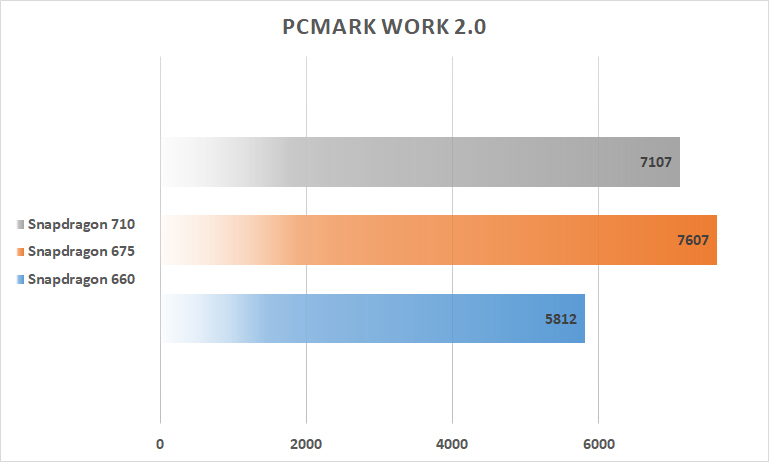
2.DDR memory version
Unknown. Help us by suggesting a value. (Qualcomm Snapdragon 660)
DDR (Double Data Rate) memory is the most common type of RAM. Newer versions of DDR memory support higher maximum speeds and are more energy-efficient.
3.maximum memory amount
The maximum amount of memory (RAM) supported.
4.maximum memory bandwidth
14.9GB/s
29.9GB/s
This is the maximum rate that data can be read from or stored into memory.
5.memory channels
More memory channels increases the speed of data transfer between the memory and the CPU.
6.eMMC version
A higher version of eMMC allows faster memory interfaces, having a positive effect on the performance of a device. For example, when transferring files from your computer to the internal storage over USB.
7. Supports ECC memory
Supports ECC memory
✖Qualcomm Snapdragon 660
✖Qualcomm Snapdragon 845
Error-correcting code memory can detect and correct data corruption. It is used when is it essential to avoid corruption, such as scientific computing or when running a server.
Features
1.Has integrated LTE
✔Qualcomm Snapdragon 660
✔Qualcomm Snapdragon 845
The system on a chip (SoC) has an integrated LTE cellular chip. LTE is capable of downloading at faster speeds than older, 3G technology.
2.download speed
600MBits/s
1200MBits/s
The download speed is a measurement of the internet connection bandwidth, representing the maximum data transfer rate at which a device can access online content.
3.upload speed
150MBits/s
150MBits/s
The upload speed is a measurement of the internet connection bandwidth, representing the maximum data transfer rate at which a device can send information to a server or another device.
4.Has TrustZone
✔Qualcomm Snapdragon 660 (ARM Cortex-A53)
✔Qualcomm Snapdragon 845 (Qualcomm Kryo)
A technology integrated into the processor to secure the device for use with features such as mobile payments and streaming video using digital rights management (DRM).
5.uses multithreading
✖Qualcomm Snapdragon 660
✖Qualcomm Snapdragon 845
Multithreading technology (such as Intel’s Hyperthreading or AMD’s Simultaneous Multithreading) provides increased performance by splitting each of the processor’s physical cores into virtual cores, also known as threads. This way, each core can run two instruction streams at once.
6.Has NX bit
✔Qualcomm Snapdragon 660 (ARM Cortex-A53)
✔Qualcomm Snapdragon 845 (Qualcomm Kryo)
NX bit helps protect the computer from malicious attacks.
7.bits executed at a time
128 (ARM Cortex-A53)
128 (Qualcomm Kryo)
NEON provides acceleration for media processing, such as listening to MP3s.
8.Has AES
✔Qualcomm Snapdragon 660 (ARM Cortex-A53)
✔Qualcomm Snapdragon 845 (Qualcomm Kryo)
AES is used to speed up encryption and decryption.
9.VFP version
4 (ARM Cortex-A53)
4 (Qualcomm Kryo)
Vector Floating-Point (VFP) is used by the processor to deliver increased performance in areas such as digital imaging.
Benchmarks
1.Geekbench 5 result (single)
Unknown. Help us by suggesting a value. (Qualcomm Snapdragon 660)
Geekbench 5 is a cross-platform benchmark that measures a processor’s single-core performance. (Source: Primate Labs, 2022)
2.Geekbench 5 result (multi)
Unknown. Help us by suggesting a value. (Qualcomm Snapdragon 660)
Geekbench 5 is a cross-platform benchmark that measures a processor’s multi-core performance. (Source: Primate Labs, 2022)
3. PassMark result
PassMark result
Unknown. Help us by suggesting a value. (Qualcomm Snapdragon 660)
Unknown. Help us by suggesting a value. (Qualcomm Snapdragon 845)
This benchmark measures the performance of the CPU using multiple threads.
4.PassMark result (single)
Unknown. Help us by suggesting a value. (Qualcomm Snapdragon 660)
Unknown. Help us by suggesting a value. (Qualcomm Snapdragon 845)
This benchmark measures the performance of the CPU using a single thread.
5.PassMark result (overclocked)
Unknown. Help us by suggesting a value. (Qualcomm Snapdragon 660)
Unknown. Help us by suggesting a value. (Qualcomm Snapdragon 845)
This benchmark measures the performance of the CPU when it is overclocked.
Miscellaneous
1.Bluetooth version
Unknown. Help us by suggesting a value.
Bluetooth is a wireless technology standard that allows data transfers between devices placed in close proximity, using short-wavelength, ultra-high frequency radio waves. Newer versions provide faster data transfers.
Newer versions provide faster data transfers.
Price comparison
Cancel
Which are the best mobile chipsets?
Snapdragon 845 vs Snapdragon 660: tests and benchmarks
VS
Snapdragon 845
Snapdragon 660
We compared two 8-core processors: Qualcomm Snapdragon 845 (with Adreno 630 graphics) and Snapdragon 660 (Adreno 512). Here you will find the pros and cons of each chip, technical specs, and comprehensive tests in benchmarks, like AnTuTu and Geekbench.
- Review
- Differences
- Benchmarks
- AnTuTu v9
- GeekBench 5
- Gaming
- Specs
- Comments
Review
General comparison of performance, power consumption, and other indicators
CPU Performance
Single and multi-core processor tests
Snapdragon 845
47
Snapdragon 660
27
Gaming Performance
GPU performance in games and OpenCL/Vulcan
Snapdragon 845
47
Snapdragon 660
15
Battery life
Efficiency of battery consumption
Snapdragon 845
62
Snapdragon 660
52
NanoReview Score
Overall chip score
Snapdragon 845
52
Snapdragon 660
30
Key Differences
Main differences and advantages of each chip
Pros of Qualcomm Snapdragon 845
- Performs 3.
 4x better in floating-point computations
4x better in floating-point computations - Supports 114% higher memory bandwidth (29.8 against 13.9 GB/s)
- Shows significantly better (up to 2x) AnTuTu 9 score – 408K vs 209K
- Has a smaller size transistor (10 versus 14 nm)
- 27% higher CPU clock speed (2800 vs 2200 MHz)
- Announced 7-months later
- Better instruction set architecture
Pros of Qualcomm Snapdragon 660
- Higher GPU frequency (~20%)
Benchmarks
Performance tests in popular benchmarks
SoC:
Snapdragon 845
vs
Snapdragon 660
AnTuTu 9
The AnTuTu Benchmark measures CPU, GPU, RAM, and I/O performance in different scenarios
Snapdragon 845
+95%
408507
Snapdragon 660
209331
| CPU | 102046 | 72014 |
| GPU | 154472 | 35497 |
| Memory | 63407 | 41094 |
| UX | 87601 | 59683 |
| Total score | 408507 | 209331 |
▶️ Submit your AnTuTu result
GeekBench 5
The GeekBench test shows raw single-threaded and multithreaded CPU performance
Single-Core Score
Snapdragon 845
+51%
509
Snapdragon 660
337
Multi-Core Score
Snapdragon 845
+67%
2216
Snapdragon 660
1327
| Image compression | 128. 5 Mpixels/s 5 Mpixels/s |
88.7 Mpixels/s |
| Face detection | 20.4 images/s | 12 images/s |
| Speech recognition | 37.8 words/s | 24.1 words/s |
| Machine learning | 35.8 images/s | 18.3 images/s |
| Camera shooting | 19.4 images/s | 11 images/s |
| HTML 5 | 2.62 Mnodes/s | 1.76 Mnodes/s |
| SQLite | 686.3 Krows/s | 487.4 Krows/s |
3DMark
A cross-platform benchmark that assesses graphics performance in Vulkan (Metal)
3DMark Wild Life Performance
Snapdragon 845
+284%
1436
Snapdragon 660
374
| Stability | 80% | 96% |
| Graphics test | 8 FPS | 2 FPS |
| Score | 1436 | 374 |
Gaming
Table of average FPS and graphics settings in mobile games
| PUBG Mobile | 53 FPS [Ultra] |
— |
| Call of Duty: Mobile | 55 FPS [High] |
— |
| Fortnite | 28 FPS [Ultra] |
— |
| Shadowgun Legends | 48 FPS [High] |
— |
| World of Tanks Blitz | 60 FPS [Ultra] |
— |
| Mobile Legends: Bang Bang | 56 FPS [Ultra] |
— |
| Device | Xiaomi Pocophone F1 1080 x 2246 |
— |
We provide average results. FPS may differ, depending on game version, OS and other factors.
FPS may differ, depending on game version, OS and other factors.
Specifications
Full list of technical specifications of Snapdragon 845 and Snapdragon 660
| Architecture | 4x 2.8 GHz – Kryo 385 Gold (Cortex-A75) 4x 1.5 GHz – Kryo 385 Silver (Cortex-A55) |
4x 2.2 GHz – Kryo 260 Gold (Cortex-A73) 4x 1.84 GHz – Kryo 260 Silver (Cortex-A53) |
| Cores | 8 | 8 |
| Frequency | 2800 MHz | 2200 MHz |
| Instruction set | ARMv8.2-A | ARMv8-A |
| L1 cache | 256 KB | — |
| L2 cache | 1.5 MB | 2 MB |
| L3 cache | 2 MB | — |
| Process | 10 nanometers | 14 nanometers |
| Transistor count | 3 billion | 1. 75 billion 75 billion |
| TDP | 9 W | 9 W |
Graphics
| GPU name | Adreno 630 | Adreno 512 |
| Architecture | Adreno 600 | Adreno 500 |
| GPU frequency | 710 MHz | 850 MHz |
| Execution units | 2 | 1 |
| Shading units | 256 | 128 |
| FLOPS | 727 Gigaflops | 217 Gigaflops |
| Vulkan version | 1.0 | 1.1 |
| OpenCL version | 2.0 | 2.0 |
| DirectX version | 12 | 12 |
Memory
| Memory type | LPDDR4X | LPDDR4X |
| Memory frequency | 1866 MHz | 1866 MHz |
| Bus | 2x 32 Bit | 2x 16 Bit |
| Max bandwidth | 29.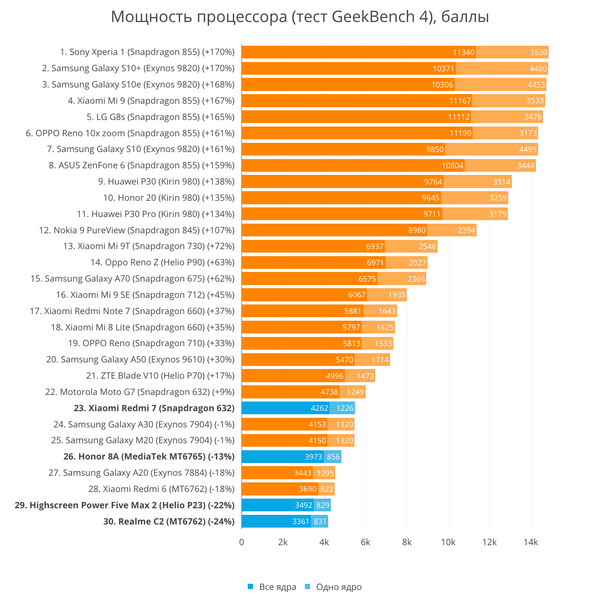 8 Gbit/s 8 Gbit/s |
13.9 Gbit/s |
| Max size | 8 GB | 8 GB |
Multimedia (ISP)
| Neural processor (NPU) | Hexagon 685 | Hexagon 680 |
| Storage type | UFS 2.1 | eMMC 5.1, UFS 2.1 |
| Max display resolution | 3840 x 2160 | 2560 x 1600 |
| Max camera resolution | 1x 32MP, 2x 16MP | 1x 48MP, 2x 16MP |
| Video capture | 4K at 60FPS | 4K at 30FPS |
| Video playback | 4K at 120FPS | 4K at 30FPS |
| Video codecs | H.264, H.265, VP9 | H.264, H.265, VP8, VP9 |
| Audio codecs | AAC, AIFF, CAF, MP3, MP4, WAV | AAC LC, MP3, HE-AACv1, HE-AACv2, FLAC |
Connectivity
| Modem | X20 LTE | X12 |
| 4G support | LTE Cat. 18 18 |
LTE Cat. 12 |
| 5G support | No | No |
| Download speed | Up to 1200 Mbps | Up to 600 Mbps |
| Upload speed | Up to 150 Mbps | Up to 150 Mbps |
| Wi-Fi | 5 | 5 |
| Bluetooth | 5.0 | 5.0 |
| Navigation | GPS, GLONASS, Beidou, Galileo, QZSS, SBAS | GPS, GLONASS, Beidou, Galileo, QZSS, SBAS, NAVIC |
| Announced | December 2017 | May 2017 |
| Class | Flagship | Mid range |
| Model number | SDM845 | SM6115 |
| Official page | Qualcomm Snapdragon 845 official site | Qualcomm Snapdragon 660 official site |
Cast your vote
So, which SoC would you choose?
Snapdragon 845
121 (89%)
Snapdragon 660
15 (11%)
Total votes: 136
Related Comparisons
1.
Snapdragon 778G or Snapdragon 845
2.
Snapdragon 750G or Snapdragon 845
3.
Google Tensor or Snapdragon 845
4.
Exynos 1280 or Snapdragon 845
5.
Snapdragon 480 or Snapdragon 660
6.
Exynos 850 or Snapdragon 660
▶️ Compare other chipsets
Qualcomm Snapdragon 660 vs Qualcomm Snapdragon 845 vs Qualcomm Snapdragon 636
Performance Rating — Geekbench 5.1, PCM Work, Sling Shot Physics, Antutu v8 CPU — SD 845
log 30. 20:54:21
#0 checking url part for id 9944 +0s … 0s
#1 checking url part for id 9958 +0s … 0s
#2 checking url part for id 9956 +0s … 0s
#3 not redirecting to Ajax server +0s … 0s
#4 did not recreate cache, as it is less than 5 days old! Created at Fri, 30 Sep 2022 13:14:19 +0200 +0s . .. 0.001s
.. 0.001s
#5 linkCache_getLink no uid found +0.007s … 0.007s
#6 linkCache_getLink no uid found +0.003s … 0.01s
#7 linkCache_getLink no uid found +0.002s … 0.012s
#8 linkCache_getLink using $NBC_LINKCACHE +0s … 0.012s
#9 linkCache_getLink using $NBC_LINKCACHE +0s … 0.012s
#10 composed specs +0s … 0.013s
#11 did output specs +0s … 0.013s
#12 linkCache_getLink using $NBC_LINKCACHE +0.002s … 0.015s
#13 linkCache_getLink using $NBC_LINKCACHE +0s … 0.015s
#14 getting avg benchmarks for device 9944 +0.003s … 0.017s
#15 linkCache_getLink using $NBC_LINKCACHE +0.001s … 0.018s
#16 linkCache_getLink using $NBC_LINKCACHE +0s … 0.018s
#17 got single benchmarks 9944 +0.026s … 0.044s
#18 linkCache_getLink using $NBC_LINKCACHE +0.002s … 0.046s
#19 linkCache_getLink using $NBC_LINKCACHE +0s . .. 0.046s
.. 0.046s
#20 linkCache_getLink using $NBC_LINKCACHE +0.001s … 0.047s
#21 linkCache_getLink using $NBC_LINKCACHE +0.002s … 0.049s
#22 getting avg benchmarks for device 9958 +0s … 0.049s
#23 linkCache_getLink using $NBC_LINKCACHE +0.001s … 0.05s
#24 got single benchmarks 9958 +0.037s … 0.087s
#25 getting avg benchmarks for device 9956 +0s … 0.088s
#26 linkCache_getLink using $NBC_LINKCACHE +0s … 0.088s
#27 linkCache_getLink using $NBC_LINKCACHE +0s … 0.088s
#28 got single benchmarks 9956 +0.022s … 0.11s
#29 got avg benchmarks for devices +0s … 0.11s
#30 linkCache_getLink using $NBC_LINKCACHE +0.003s … 0.113s
#31 linkCache_getLink using $NBC_LINKCACHE +0.002s … 0.115s
#32 linkCache_getLink using $NBC_LINKCACHE +0s … 0.115s
#33 linkCache_getLink using $NBC_LINKCACHE +0s … 0.116s
#34 linkCache_getLink using $NBC_LINKCACHE +0s . .. 0.116s
.. 0.116s
#35 linkCache_getLink using $NBC_LINKCACHE +0s … 0.116s
#36 linkCache_getLink using $NBC_LINKCACHE +0s … 0.116s
#37 linkCache_getLink using $NBC_LINKCACHE +0s … 0.116s
#38 linkCache_getLink using $NBC_LINKCACHE +0s … 0.116s
#39 linkCache_getLink using $NBC_LINKCACHE +0s … 0.116s
#40 linkCache_getLink using $NBC_LINKCACHE +0s … 0.116s
#41 linkCache_getLink using $NBC_LINKCACHE +0s … 0.116s
#42 linkCache_getLink using $NBC_LINKCACHE +0s … 0.116s
#43 linkCache_getLink using $NBC_LINKCACHE +0s … 0.116s
#44 linkCache_getLink using $NBC_LINKCACHE +0s … 0.116s
#45 linkCache_getLink using $NBC_LINKCACHE +0s … 0.116s
#46 linkCache_getLink using $NBC_LINKCACHE +0s … 0.116s
#47 linkCache_getLink using $NBC_LINKCACHE +0s … 0.116s
#48 linkCache_getLink using $NBC_LINKCACHE +0s … 0.116s
#49 linkCache_getLink using $NBC_LINKCACHE +0s . .. 0.116s
.. 0.116s
#50 linkCache_getLink using $NBC_LINKCACHE +0s … 0.116s
#51 linkCache_getLink using $NBC_LINKCACHE +0s … 0.116s
#52 linkCache_getLink using $NBC_LINKCACHE +0s … 0.116s
#53 linkCache_getLink using $NBC_LINKCACHE +0s … 0.116s
#54 linkCache_getLink using $NBC_LINKCACHE +0s … 0.116s
#55 linkCache_getLink using $NBC_LINKCACHE +0s … 0.116s
#56 linkCache_getLink using $NBC_LINKCACHE +0s … 0.116s
#57 linkCache_getLink using $NBC_LINKCACHE +0s … 0.116s
#58 linkCache_getLink using $NBC_LINKCACHE +0s … 0.116s
#59 linkCache_getLink using $NBC_LINKCACHE +0s … 0.116s
#60 linkCache_getLink using $NBC_LINKCACHE +0s … 0.116s
#61 linkCache_getLink using $NBC_LINKCACHE +0s … 0.116s
#62 linkCache_getLink using $NBC_LINKCACHE +0s … 0.116s
#63 linkCache_getLink no uid found +0s … 0.116s
#64 linkCache_getLink using $NBC_LINKCACHE +0s .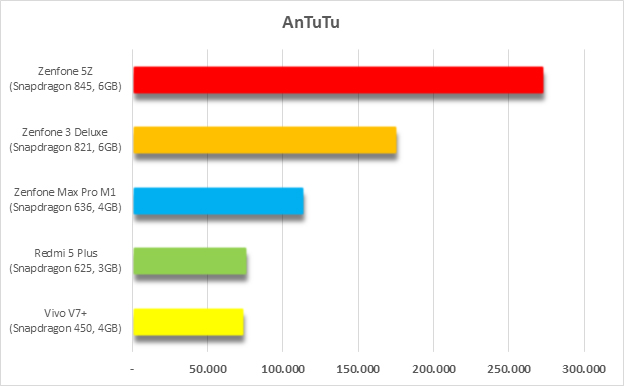 .. 0.116s
.. 0.116s
#65 linkCache_getLink using $NBC_LINKCACHE +0s … 0.116s
#66 linkCache_getLink using $NBC_LINKCACHE +0s … 0.116s
#67 linkCache_getLink using $NBC_LINKCACHE +0s … 0.116s
#68 linkCache_getLink using $NBC_LINKCACHE +0s … 0.116s
#69 linkCache_getLink using $NBC_LINKCACHE +0s … 0.116s
#70 linkCache_getLink using $NBC_LINKCACHE +0s … 0.116s
#71 linkCache_getLink using $NBC_LINKCACHE +0s … 0.117s
#72 linkCache_getLink using $NBC_LINKCACHE +0s … 0.117s
#73 linkCache_getLink using $NBC_LINKCACHE +0s … 0.117s
#74 linkCache_getLink using $NBC_LINKCACHE +0s … 0.117s
#75 linkCache_getLink using $NBC_LINKCACHE +0s … 0.117s
#76 linkCache_getLink using $NBC_LINKCACHE +0s … 0.117s
#77 linkCache_getLink using $NBC_LINKCACHE +0s … 0.117s
#78 linkCache_getLink using $NBC_LINKCACHE +0s … 0.117s
#79 linkCache_getLink using $NBC_LINKCACHE +0s . .. 0.117s
.. 0.117s
#80 linkCache_getLink using $NBC_LINKCACHE +0s … 0.117s
#81 linkCache_getLink using $NBC_LINKCACHE +0s … 0.117s
#82 linkCache_getLink using $NBC_LINKCACHE +0s … 0.117s
#83 linkCache_getLink using $NBC_LINKCACHE +0s … 0.117s
#84 linkCache_getLink using $NBC_LINKCACHE +0s … 0.117s
#85 linkCache_getLink using $NBC_LINKCACHE +0s … 0.117s
#86 linkCache_getLink using $NBC_LINKCACHE +0s … 0.117s
#87 linkCache_getLink using $NBC_LINKCACHE +0s … 0.117s
#88 linkCache_getLink using $NBC_LINKCACHE +0s … 0.117s
#89 linkCache_getLink using $NBC_LINKCACHE +0s … 0.117s
#90 linkCache_getLink using $NBC_LINKCACHE +0s … 0.117s
#91 linkCache_getLink using $NBC_LINKCACHE +0s … 0.117s
#92 linkCache_getLink using $NBC_LINKCACHE +0s … 0.117s
#93 linkCache_getLink using $NBC_LINKCACHE +0s … 0.117s
#94 linkCache_getLink using $NBC_LINKCACHE +0s . .. 0.117s
.. 0.117s
#95 linkCache_getLink using $NBC_LINKCACHE +0s … 0.117s
#96 linkCache_getLink using $NBC_LINKCACHE +0s … 0.117s
#97 linkCache_getLink using $NBC_LINKCACHE +0s … 0.117s
#98 linkCache_getLink using $NBC_LINKCACHE +0s … 0.117s
#99 linkCache_getLink using $NBC_LINKCACHE +0s … 0.117s
#100 linkCache_getLink using $NBC_LINKCACHE +0s … 0.117s
#101 linkCache_getLink using $NBC_LINKCACHE +0s … 0.117s
#102 linkCache_getLink using $NBC_LINKCACHE +0s … 0.117s
#103 linkCache_getLink using $NBC_LINKCACHE +0s … 0.117s
#104 linkCache_getLink using $NBC_LINKCACHE +0s … 0.117s
#105 linkCache_getLink using $NBC_LINKCACHE +0s … 0.117s
#106 linkCache_getLink using $NBC_LINKCACHE +0s … 0.117s
#107 linkCache_getLink using $NBC_LINKCACHE +0s … 0.117s
#108 linkCache_getLink using $NBC_LINKCACHE +0s . .. 0.117s
.. 0.117s
#109 linkCache_getLink using $NBC_LINKCACHE +0s … 0.117s
#110 linkCache_getLink using $NBC_LINKCACHE +0s … 0.117s
#111 linkCache_getLink using $NBC_LINKCACHE +0s … 0.117s
#112 linkCache_getLink using $NBC_LINKCACHE +0s … 0.117s
#113 linkCache_getLink using $NBC_LINKCACHE +0s … 0.117s
#114 linkCache_getLink using $NBC_LINKCACHE +0s … 0.117s
#115 linkCache_getLink using $NBC_LINKCACHE +0s … 0.117s
#116 linkCache_getLink using $NBC_LINKCACHE +0s … 0.117s
#117 linkCache_getLink using $NBC_LINKCACHE +0s … 0.117s
#118 linkCache_getLink using $NBC_LINKCACHE +0s … 0.117s
#119 linkCache_getLink using $NBC_LINKCACHE +0s … 0.117s
#120 linkCache_getLink using $NBC_LINKCACHE +0s … 0.117s
#121 linkCache_getLink using $NBC_LINKCACHE +0s … 0.117s
#122 linkCache_getLink using $NBC_LINKCACHE +0s . .. 0.118s
.. 0.118s
#123 linkCache_getLink using $NBC_LINKCACHE +0s … 0.118s
#124 linkCache_getLink using $NBC_LINKCACHE +0s … 0.118s
#125 linkCache_getLink using $NBC_LINKCACHE +0s … 0.118s
#126 linkCache_getLink using $NBC_LINKCACHE +0s … 0.118s
#127 linkCache_getLink using $NBC_LINKCACHE +0s … 0.118s
#128 linkCache_getLink using $NBC_LINKCACHE +0s … 0.118s
#129 linkCache_getLink using $NBC_LINKCACHE +0s … 0.118s
#130 linkCache_getLink using $NBC_LINKCACHE +0s … 0.118s
#131 linkCache_getLink using $NBC_LINKCACHE +0s … 0.118s
#132 linkCache_getLink using $NBC_LINKCACHE +0s … 0.118s
#133 linkCache_getLink using $NBC_LINKCACHE +0s … 0.118s
#134 linkCache_getLink using $NBC_LINKCACHE +0s … 0.118s
#135 linkCache_getLink using $NBC_LINKCACHE +0s … 0.118s
#136 linkCache_getLink using $NBC_LINKCACHE +0s . .. 0.118s
.. 0.118s
#137 linkCache_getLink using $NBC_LINKCACHE +0s … 0.118s
#138 linkCache_getLink using $NBC_LINKCACHE +0s … 0.119s
#139 linkCache_getLink using $NBC_LINKCACHE +0s … 0.119s
#140 linkCache_getLink using $NBC_LINKCACHE +0s … 0.119s
#141 linkCache_getLink using $NBC_LINKCACHE +0s … 0.119s
#142 linkCache_getLink using $NBC_LINKCACHE +0s … 0.119s
#143 linkCache_getLink using $NBC_LINKCACHE +0s … 0.12s
#144 linkCache_getLink using $NBC_LINKCACHE +0s … 0.12s
#145 linkCache_getLink using $NBC_LINKCACHE +0s … 0.12s
#146 linkCache_getLink using $NBC_LINKCACHE +0s … 0.12s
#147 linkCache_getLink using $NBC_LINKCACHE +0s … 0.121s
#148 linkCache_getLink using $NBC_LINKCACHE +0s … 0.121s
#149 linkCache_getLink using $NBC_LINKCACHE +0s … 0.121s
#150 linkCache_getLink using $NBC_LINKCACHE +0s . .. 0.121s
.. 0.121s
#151 linkCache_getLink using $NBC_LINKCACHE +0s … 0.121s
#152 linkCache_getLink using $NBC_LINKCACHE +0s … 0.121s
#153 linkCache_getLink using $NBC_LINKCACHE +0s … 0.122s
#154 linkCache_getLink using $NBC_LINKCACHE +0s … 0.122s
#155 linkCache_getLink no uid found +0s … 0.122s
#156 linkCache_getLink using $NBC_LINKCACHE +0s … 0.122s
#157 linkCache_getLink using $NBC_LINKCACHE +0s … 0.122s
#158 linkCache_getLink using $NBC_LINKCACHE +0s … 0.122s
#159 linkCache_getLink using $NBC_LINKCACHE +0s … 0.122s
#160 linkCache_getLink using $NBC_LINKCACHE +0s … 0.122s
#161 linkCache_getLink using $NBC_LINKCACHE +0s … 0.122s
#162 linkCache_getLink using $NBC_LINKCACHE +0s … 0.122s
#163 linkCache_getLink using $NBC_LINKCACHE +0s … 0.122s
#164 linkCache_getLink using $NBC_LINKCACHE +0s ..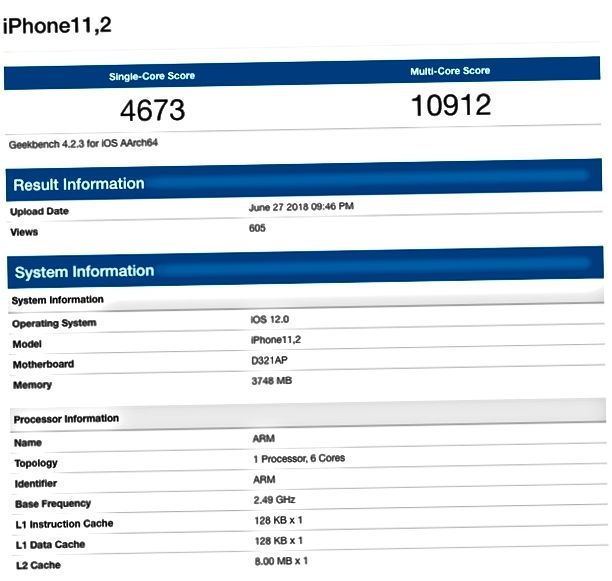 . 0.122s
. 0.122s
#165 linkCache_getLink using $NBC_LINKCACHE +0s … 0.122s
#166 linkCache_getLink using $NBC_LINKCACHE +0s … 0.122s
#167 linkCache_getLink using $NBC_LINKCACHE +0s … 0.122s
#168 linkCache_getLink using $NBC_LINKCACHE +0s … 0.122s
#169 linkCache_getLink using $NBC_LINKCACHE +0s … 0.122s
#170 linkCache_getLink using $NBC_LINKCACHE +0s … 0.122s
#171 linkCache_getLink using $NBC_LINKCACHE +0s … 0.122s
#172 linkCache_getLink using $NBC_LINKCACHE +0s … 0.122s
#173 linkCache_getLink using $NBC_LINKCACHE +0s … 0.122s
#174 linkCache_getLink using $NBC_LINKCACHE +0s … 0.122s
#175 linkCache_getLink using $NBC_LINKCACHE +0s … 0.122s
#176 linkCache_getLink using $NBC_LINKCACHE +0s … 0.122s
#177 linkCache_getLink using $NBC_LINKCACHE +0s … 0.122s
#178 linkCache_getLink using $NBC_LINKCACHE +0s . .. 0.122s
.. 0.122s
#179 linkCache_getLink using $NBC_LINKCACHE +0s … 0.122s
#180 linkCache_getLink using $NBC_LINKCACHE +0s … 0.122s
#181 linkCache_getLink no uid found +0s … 0.122s
#182 linkCache_getLink using $NBC_LINKCACHE +0s … 0.122s
#183 linkCache_getLink using $NBC_LINKCACHE +0s … 0.122s
#184 linkCache_getLink using $NBC_LINKCACHE +0s … 0.122s
#185 linkCache_getLink using $NBC_LINKCACHE +0s … 0.122s
#186 linkCache_getLink using $NBC_LINKCACHE +0s … 0.122s
#187 linkCache_getLink using $NBC_LINKCACHE +0s … 0.122s
#188 linkCache_getLink using $NBC_LINKCACHE +0s … 0.122s
#189 linkCache_getLink using $NBC_LINKCACHE +0s … 0.122s
#190 linkCache_getLink using $NBC_LINKCACHE +0s … 0.122s
#191 linkCache_getLink using $NBC_LINKCACHE +0s … 0.122s
#192 linkCache_getLink using $NBC_LINKCACHE +0s ..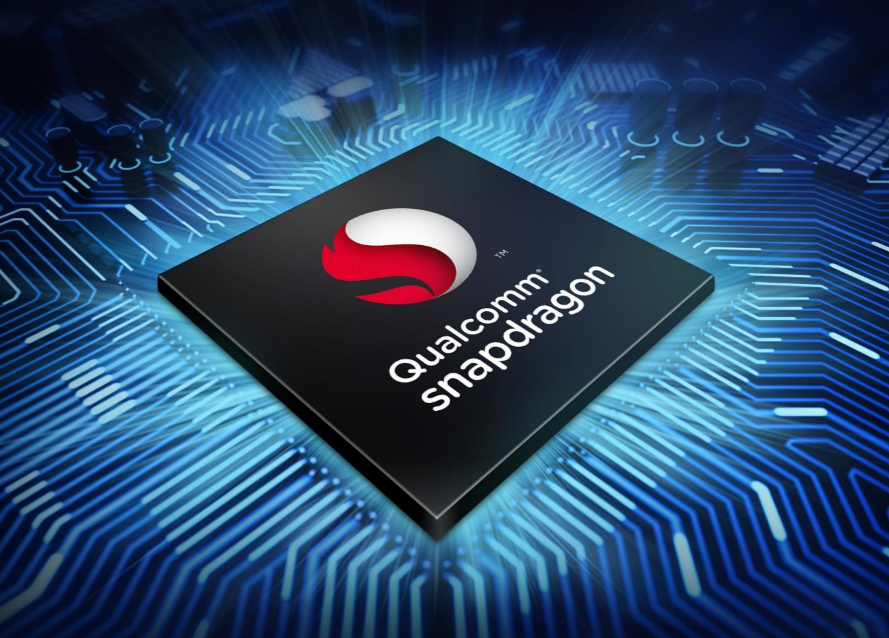 . 0.122s
. 0.122s
#193 linkCache_getLink using $NBC_LINKCACHE +0s … 0.122s
#194 linkCache_getLink using $NBC_LINKCACHE +0s … 0.122s
#195 linkCache_getLink using $NBC_LINKCACHE +0s … 0.122s
#196 linkCache_getLink using $NBC_LINKCACHE +0s … 0.122s
#197 linkCache_getLink using $NBC_LINKCACHE +0s … 0.122s
#198 linkCache_getLink using $NBC_LINKCACHE +0s … 0.122s
#199 linkCache_getLink using $NBC_LINKCACHE +0s … 0.123s
#200 linkCache_getLink using $NBC_LINKCACHE +0s … 0.123s
#201 linkCache_getLink using $NBC_LINKCACHE +0s … 0.123s
#202 linkCache_getLink using $NBC_LINKCACHE +0s … 0.123s
#203 linkCache_getLink using $NBC_LINKCACHE +0s … 0.123s
#204 linkCache_getLink using $NBC_LINKCACHE +0s … 0.123s
#205 linkCache_getLink no uid found +0s … 0.123s
#206 linkCache_getLink using $NBC_LINKCACHE +0s … 0.123s
0.123s
#207 linkCache_getLink using $NBC_LINKCACHE +0s … 0.123s
#208 linkCache_getLink using $NBC_LINKCACHE +0s … 0.123s
#209 linkCache_getLink using $NBC_LINKCACHE +0s … 0.123s
#210 linkCache_getLink using $NBC_LINKCACHE +0s … 0.123s
#211 linkCache_getLink using $NBC_LINKCACHE +0s … 0.123s
#212 linkCache_getLink using $NBC_LINKCACHE +0s … 0.123s
#213 linkCache_getLink using $NBC_LINKCACHE +0s … 0.123s
#214 linkCache_getLink using $NBC_LINKCACHE +0s … 0.123s
#215 linkCache_getLink no uid found +0s … 0.123s
#216 linkCache_getLink using $NBC_LINKCACHE +0s … 0.123s
#217 linkCache_getLink using $NBC_LINKCACHE +0s … 0.123s
#218 linkCache_getLink using $NBC_LINKCACHE +0s … 0.123s
#219 linkCache_getLink using $NBC_LINKCACHE +0s … 0.123s
#220 linkCache_getLink using $NBC_LINKCACHE +0s … 0. 123s
123s
#221 linkCache_getLink using $NBC_LINKCACHE +0s … 0.123s
#222 linkCache_getLink using $NBC_LINKCACHE +0s … 0.123s
#223 linkCache_getLink using $NBC_LINKCACHE +0s … 0.123s
#224 linkCache_getLink using $NBC_LINKCACHE +0s … 0.123s
#225 linkCache_getLink using $NBC_LINKCACHE +0s … 0.123s
#226 linkCache_getLink using $NBC_LINKCACHE +0s … 0.123s
#227 linkCache_getLink using $NBC_LINKCACHE +0s … 0.123s
#228 linkCache_getLink using $NBC_LINKCACHE +0s … 0.123s
#229 linkCache_getLink using $NBC_LINKCACHE +0s … 0.123s
#230 linkCache_getLink using $NBC_LINKCACHE +0s … 0.123s
#231 linkCache_getLink using $NBC_LINKCACHE +0s … 0.124s
#232 linkCache_getLink using $NBC_LINKCACHE +0s … 0.124s
#233 linkCache_getLink using $NBC_LINKCACHE +0s … 0.124s
#234 linkCache_getLink using $NBC_LINKCACHE +0s . .. 0.124s
.. 0.124s
#235 linkCache_getLink using $NBC_LINKCACHE +0s … 0.124s
#236 linkCache_getLink using $NBC_LINKCACHE +0s … 0.124s
#237 linkCache_getLink using $NBC_LINKCACHE +0s … 0.124s
#238 linkCache_getLink using $NBC_LINKCACHE +0s … 0.124s
#239 linkCache_getLink using $NBC_LINKCACHE +0s … 0.124s
#240 linkCache_getLink using $NBC_LINKCACHE +0s … 0.124s
#241 linkCache_getLink using $NBC_LINKCACHE +0s … 0.124s
#242 linkCache_getLink using $NBC_LINKCACHE +0s … 0.124s
#243 linkCache_getLink using $NBC_LINKCACHE +0s … 0.124s
#244 linkCache_getLink using $NBC_LINKCACHE +0s … 0.124s
#245 linkCache_getLink using $NBC_LINKCACHE +0s … 0.124s
#246 linkCache_getLink using $NBC_LINKCACHE +0s … 0.124s
#247 linkCache_getLink using $NBC_LINKCACHE +0s … 0.124s
#248 linkCache_getLink using $NBC_LINKCACHE +0s . .. 0.124s
.. 0.124s
#249 linkCache_getLink using $NBC_LINKCACHE +0s … 0.124s
#250 linkCache_getLink using $NBC_LINKCACHE +0s … 0.124s
#251 linkCache_getLink using $NBC_LINKCACHE +0s … 0.125s
#252 linkCache_getLink using $NBC_LINKCACHE +0s … 0.125s
#253 linkCache_getLink using $NBC_LINKCACHE +0s … 0.125s
#254 linkCache_getLink using $NBC_LINKCACHE +0s … 0.125s
#255 linkCache_getLink using $NBC_LINKCACHE +0s … 0.125s
#256 linkCache_getLink using $NBC_LINKCACHE +0s … 0.125s
#257 linkCache_getLink using $NBC_LINKCACHE +0s … 0.126s
#258 linkCache_getLink using $NBC_LINKCACHE +0s … 0.126s
#259 linkCache_getLink using $NBC_LINKCACHE +0s … 0.126s
#260 linkCache_getLink using $NBC_LINKCACHE +0s … 0.126s
#261 linkCache_getLink using $NBC_LINKCACHE +0s … 0.127s
#262 linkCache_getLink using $NBC_LINKCACHE +0s . .. 0.127s
.. 0.127s
#263 linkCache_getLink using $NBC_LINKCACHE +0s … 0.127s
#264 linkCache_getLink using $NBC_LINKCACHE +0s … 0.127s
#265 linkCache_getLink using $NBC_LINKCACHE +0s … 0.127s
#266 linkCache_getLink using $NBC_LINKCACHE +0s … 0.128s
#267 linkCache_getLink using $NBC_LINKCACHE +0s … 0.128s
#268 linkCache_getLink using $NBC_LINKCACHE +0s … 0.128s
#269 linkCache_getLink using $NBC_LINKCACHE +0s … 0.128s
#270 linkCache_getLink using $NBC_LINKCACHE +0s … 0.129s
#271 linkCache_getLink using $NBC_LINKCACHE +0s … 0.129s
#272 linkCache_getLink using $NBC_LINKCACHE +0s … 0.129s
#273 linkCache_getLink using $NBC_LINKCACHE +0s … 0.129s
#274 linkCache_getLink using $NBC_LINKCACHE +0s … 0.129s
#275 linkCache_getLink using $NBC_LINKCACHE +0s … 0.13s
#276 linkCache_getLink using $NBC_LINKCACHE +0s . .. 0.13s
.. 0.13s
#277 linkCache_getLink using $NBC_LINKCACHE +0s … 0.13s
#278 linkCache_getLink using $NBC_LINKCACHE +0s … 0.13s
#279 linkCache_getLink using $NBC_LINKCACHE +0s … 0.13s
#280 linkCache_getLink using $NBC_LINKCACHE +0s … 0.131s
#281 linkCache_getLink using $NBC_LINKCACHE +0s … 0.131s
#282 linkCache_getLink using $NBC_LINKCACHE +0s … 0.131s
#283 linkCache_getLink using $NBC_LINKCACHE +0s … 0.131s
#284 linkCache_getLink using $NBC_LINKCACHE +0s … 0.131s
#285 linkCache_getLink using $NBC_LINKCACHE +0s … 0.132s
#286 linkCache_getLink using $NBC_LINKCACHE +0s … 0.132s
#287 linkCache_getLink using $NBC_LINKCACHE +0s … 0.132s
#288 linkCache_getLink using $NBC_LINKCACHE +0s … 0.132s
#289 linkCache_getLink using $NBC_LINKCACHE +0s … 0.132s
#290 linkCache_getLink using $NBC_LINKCACHE +0s . .. 0.132s
.. 0.132s
#291 linkCache_getLink using $NBC_LINKCACHE +0s … 0.132s
#292 linkCache_getLink using $NBC_LINKCACHE +0s … 0.132s
#293 linkCache_getLink using $NBC_LINKCACHE +0s … 0.132s
#294 linkCache_getLink using $NBC_LINKCACHE +0s … 0.132s
#295 linkCache_getLink using $NBC_LINKCACHE +0s … 0.132s
#296 linkCache_getLink using $NBC_LINKCACHE +0s … 0.132s
#297 linkCache_getLink using $NBC_LINKCACHE +0s … 0.132s
#298 linkCache_getLink using $NBC_LINKCACHE +0s … 0.132s
#299 linkCache_getLink using $NBC_LINKCACHE +0s … 0.133s
#300 linkCache_getLink using $NBC_LINKCACHE +0s … 0.133s
#301 linkCache_getLink using $NBC_LINKCACHE +0s … 0.133s
#302 linkCache_getLink using $NBC_LINKCACHE +0s … 0.133s
#303 linkCache_getLink using $NBC_LINKCACHE +0s … 0.133s
#304 linkCache_getLink using $NBC_LINKCACHE +0s . .. 0.133s
.. 0.133s
#305 linkCache_getLink using $NBC_LINKCACHE +0s … 0.133s
#306 linkCache_getLink using $NBC_LINKCACHE +0s … 0.133s
#307 linkCache_getLink using $NBC_LINKCACHE +0s … 0.133s
#308 linkCache_getLink using $NBC_LINKCACHE +0s … 0.133s
#309 linkCache_getLink using $NBC_LINKCACHE +0s … 0.133s
#310 linkCache_getLink using $NBC_LINKCACHE +0s … 0.133s
#311 linkCache_getLink using $NBC_LINKCACHE +0s … 0.133s
#312 linkCache_getLink using $NBC_LINKCACHE +0s … 0.133s
#313 linkCache_getLink using $NBC_LINKCACHE +0s … 0.133s
#314 linkCache_getLink using $NBC_LINKCACHE +0s … 0.133s
#315 linkCache_getLink using $NBC_LINKCACHE +0s … 0.133s
#316 linkCache_getLink no uid found +0s … 0.133s
#317 linkCache_getLink using $NBC_LINKCACHE +0s … 0.133s
#318 linkCache_getLink using $NBC_LINKCACHE +0s ..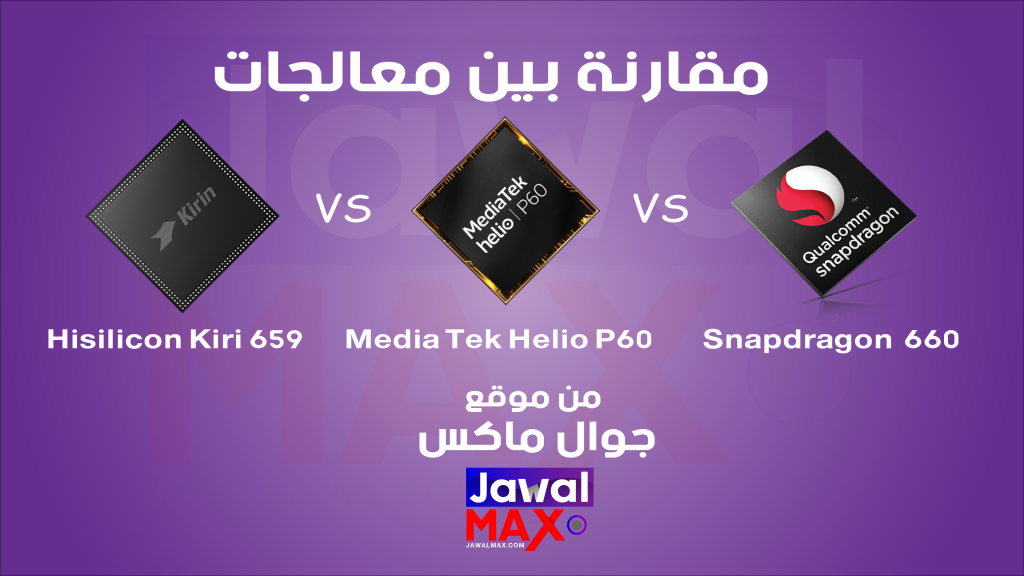 . 0.133s
. 0.133s
#319 linkCache_getLink using $NBC_LINKCACHE +0s … 0.133s
#320 linkCache_getLink using $NBC_LINKCACHE +0s … 0.133s
#321 linkCache_getLink using $NBC_LINKCACHE +0s … 0.133s
#322 linkCache_getLink using $NBC_LINKCACHE +0s … 0.133s
#323 linkCache_getLink using $NBC_LINKCACHE +0s … 0.133s
#324 linkCache_getLink using $NBC_LINKCACHE +0s … 0.133s
#325 linkCache_getLink using $NBC_LINKCACHE +0s … 0.133s
#326 linkCache_getLink using $NBC_LINKCACHE +0s … 0.133s
#327 linkCache_getLink using $NBC_LINKCACHE +0s … 0.133s
#328 linkCache_getLink using $NBC_LINKCACHE +0s … 0.133s
#329 linkCache_getLink using $NBC_LINKCACHE +0s … 0.133s
#330 linkCache_getLink using $NBC_LINKCACHE +0s … 0.133s
#331 linkCache_getLink using $NBC_LINKCACHE +0s … 0.133s
#332 linkCache_getLink using $NBC_LINKCACHE +0s .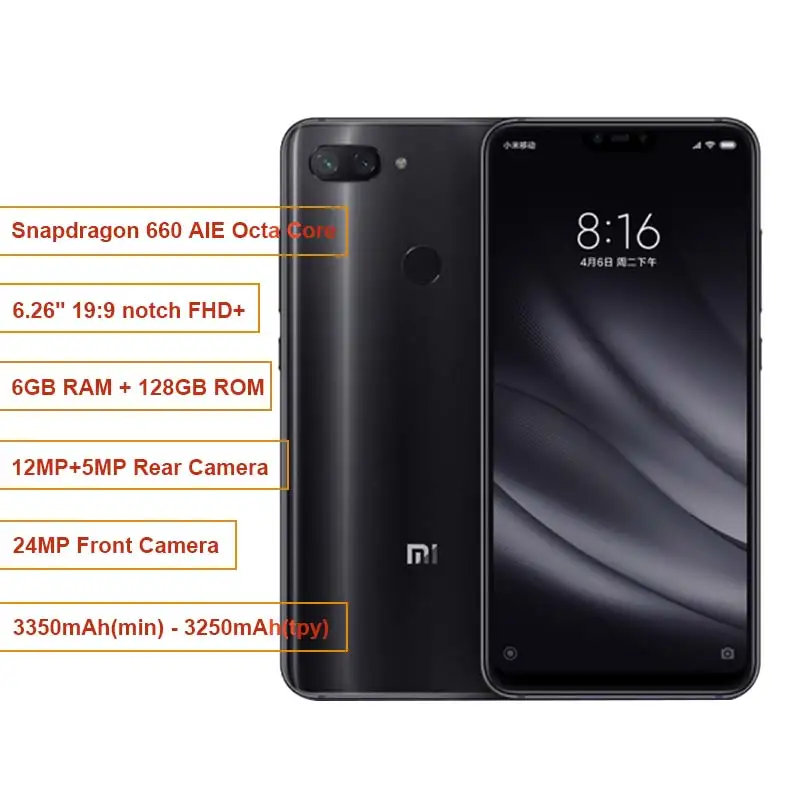 .. 0.133s
.. 0.133s
#333 linkCache_getLink using $NBC_LINKCACHE +0s … 0.133s
#334 linkCache_getLink using $NBC_LINKCACHE +0s … 0.133s
#335 linkCache_getLink using $NBC_LINKCACHE +0s … 0.133s
#336 linkCache_getLink using $NBC_LINKCACHE +0s … 0.133s
#337 linkCache_getLink using $NBC_LINKCACHE +0s … 0.133s
#338 linkCache_getLink using $NBC_LINKCACHE +0s … 0.133s
#339 linkCache_getLink using $NBC_LINKCACHE +0.001s … 0.134s
#340 linkCache_getLink no uid found +0s … 0.134s
#341 linkCache_getLink using $NBC_LINKCACHE +0s … 0.134s
#342 linkCache_getLink using $NBC_LINKCACHE +0s … 0.135s
#343 linkCache_getLink using $NBC_LINKCACHE +0s … 0.135s
#344 linkCache_getLink using $NBC_LINKCACHE +0s … 0.135s
#345 linkCache_getLink using $NBC_LINKCACHE +0s … 0.135s
#346 linkCache_getLink no uid found +0s … 0. 135s
135s
#347 linkCache_getLink using $NBC_LINKCACHE +0s … 0.135s
#348 linkCache_getLink using $NBC_LINKCACHE +0s … 0.135s
#349 linkCache_getLink using $NBC_LINKCACHE +0s … 0.135s
#350 linkCache_getLink using $NBC_LINKCACHE +0s … 0.135s
#351 linkCache_getLink using $NBC_LINKCACHE +0s … 0.135s
#352 linkCache_getLink using $NBC_LINKCACHE +0s … 0.135s
#353 linkCache_getLink using $NBC_LINKCACHE +0s … 0.135s
#354 linkCache_getLink using $NBC_LINKCACHE +0s … 0.135s
#355 linkCache_getLink using $NBC_LINKCACHE +0s … 0.135s
#356 linkCache_getLink using $NBC_LINKCACHE +0s … 0.135s
#357 linkCache_getLink using $NBC_LINKCACHE +0s … 0.135s
#358 linkCache_getLink using $NBC_LINKCACHE +0s … 0.135s
#359 linkCache_getLink using $NBC_LINKCACHE +0s … 0.135s
#360 linkCache_getLink using $NBC_LINKCACHE +0s .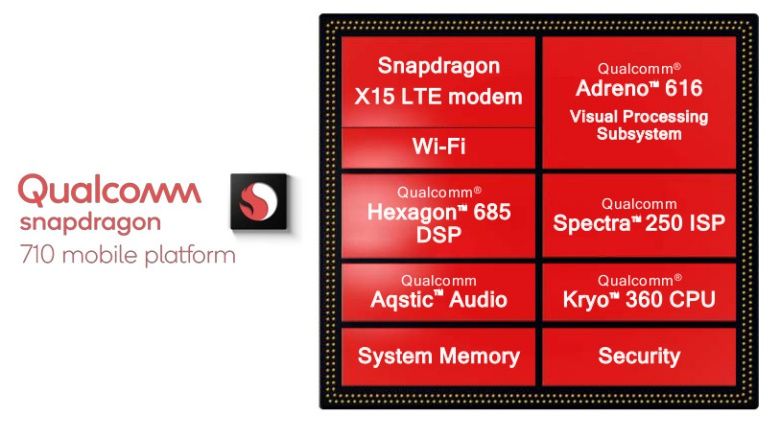 .. 0.135s
.. 0.135s
#361 linkCache_getLink using $NBC_LINKCACHE +0s … 0.135s
#362 linkCache_getLink using $NBC_LINKCACHE +0s … 0.135s
#363 linkCache_getLink using $NBC_LINKCACHE +0s … 0.136s
#364 linkCache_getLink using $NBC_LINKCACHE +0s … 0.136s
#365 linkCache_getLink using $NBC_LINKCACHE +0s … 0.136s
#366 linkCache_getLink using $NBC_LINKCACHE +0s … 0.136s
#367 linkCache_getLink no uid found +0s … 0.136s
#368 linkCache_getLink using $NBC_LINKCACHE +0s … 0.136s
#369 linkCache_getLink using $NBC_LINKCACHE +0s … 0.136s
#370 linkCache_getLink using $NBC_LINKCACHE +0s … 0.136s
#371 linkCache_getLink using $NBC_LINKCACHE +0s … 0.136s
#372 linkCache_getLink using $NBC_LINKCACHE +0s … 0.136s
#373 linkCache_getLink using $NBC_LINKCACHE +0s … 0.136s
#374 linkCache_getLink using $NBC_LINKCACHE +0s .. . 0.136s
. 0.136s
#375 linkCache_getLink using $NBC_LINKCACHE +0s … 0.136s
#376 linkCache_getLink using $NBC_LINKCACHE +0s … 0.136s
#377 linkCache_getLink using $NBC_LINKCACHE +0s … 0.136s
#378 linkCache_getLink using $NBC_LINKCACHE +0s … 0.136s
#379 linkCache_getLink using $NBC_LINKCACHE +0s … 0.136s
#380 linkCache_getLink using $NBC_LINKCACHE +0s … 0.136s
#381 linkCache_getLink using $NBC_LINKCACHE +0s … 0.136s
#382 linkCache_getLink using $NBC_LINKCACHE +0s … 0.136s
#383 linkCache_getLink using $NBC_LINKCACHE +0s … 0.136s
#384 linkCache_getLink using $NBC_LINKCACHE +0s … 0.136s
#385 linkCache_getLink using $NBC_LINKCACHE +0s … 0.136s
#386 linkCache_getLink using $NBC_LINKCACHE +0s … 0.136s
#387 linkCache_getLink using $NBC_LINKCACHE +0s … 0.136s
#388 linkCache_getLink using $NBC_LINKCACHE +0s . .. 0.136s
.. 0.136s
#389 linkCache_getLink using $NBC_LINKCACHE +0s … 0.136s
#390 linkCache_getLink using $NBC_LINKCACHE +0s … 0.136s
#391 linkCache_getLink using $NBC_LINKCACHE +0s … 0.136s
#392 linkCache_getLink using $NBC_LINKCACHE +0s … 0.136s
#393 linkCache_getLink using $NBC_LINKCACHE +0s … 0.136s
#394 linkCache_getLink using $NBC_LINKCACHE +0s … 0.136s
#395 linkCache_getLink using $NBC_LINKCACHE +0s … 0.136s
#396 linkCache_getLink using $NBC_LINKCACHE +0.001s … 0.137s
#397 linkCache_getLink using $NBC_LINKCACHE +0s … 0.137s
#398 linkCache_getLink using $NBC_LINKCACHE +0s … 0.137s
#399 linkCache_getLink using $NBC_LINKCACHE +0s … 0.137s
#400 linkCache_getLink using $NBC_LINKCACHE +0s … 0.137s
#401 linkCache_getLink using $NBC_LINKCACHE +0s … 0.137s
#402 linkCache_getLink using $NBC_LINKCACHE +0s .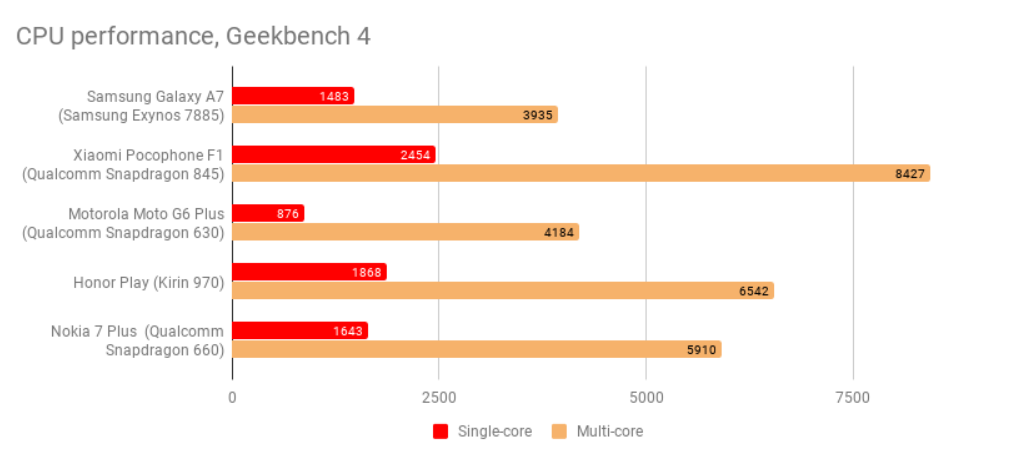 .. 0.137s
.. 0.137s
#403 linkCache_getLink using $NBC_LINKCACHE +0s … 0.137s
#404 linkCache_getLink using $NBC_LINKCACHE +0s … 0.137s
#405 linkCache_getLink using $NBC_LINKCACHE +0s … 0.137s
#406 linkCache_getLink using $NBC_LINKCACHE +0s … 0.137s
#407 linkCache_getLink using $NBC_LINKCACHE +0s … 0.137s
#408 linkCache_getLink using $NBC_LINKCACHE +0s … 0.137s
#409 linkCache_getLink using $NBC_LINKCACHE +0s … 0.137s
#410 linkCache_getLink using $NBC_LINKCACHE +0s … 0.137s
#411 linkCache_getLink using $NBC_LINKCACHE +0s … 0.137s
#412 linkCache_getLink using $NBC_LINKCACHE +0s … 0.137s
#413 linkCache_getLink using $NBC_LINKCACHE +0s … 0.137s
#414 linkCache_getLink using $NBC_LINKCACHE +0s … 0.137s
#415 linkCache_getLink using $NBC_LINKCACHE +0s … 0.137s
#416 linkCache_getLink using $NBC_LINKCACHE +0s . .. 0.137s
.. 0.137s
#417 linkCache_getLink using $NBC_LINKCACHE +0s … 0.137s
#418 linkCache_getLink using $NBC_LINKCACHE +0s … 0.137s
#419 linkCache_getLink using $NBC_LINKCACHE +0s … 0.137s
#420 linkCache_getLink using $NBC_LINKCACHE +0s … 0.137s
#421 linkCache_getLink using $NBC_LINKCACHE +0s … 0.137s
#422 linkCache_getLink using $NBC_LINKCACHE +0s … 0.137s
#423 linkCache_getLink using $NBC_LINKCACHE +0s … 0.138s
#424 linkCache_getLink using $NBC_LINKCACHE +0s … 0.138s
#425 linkCache_getLink using $NBC_LINKCACHE +0s … 0.138s
#426 linkCache_getLink using $NBC_LINKCACHE +0s … 0.138s
#427 linkCache_getLink using $NBC_LINKCACHE +0s … 0.138s
#428 linkCache_getLink using $NBC_LINKCACHE +0s … 0.138s
#429 linkCache_getLink using $NBC_LINKCACHE +0s … 0.138s
#430 linkCache_getLink using $NBC_LINKCACHE +0s . .. 0.138s
.. 0.138s
#431 linkCache_getLink using $NBC_LINKCACHE +0s … 0.138s
#432 linkCache_getLink using $NBC_LINKCACHE +0.001s … 0.138s
#433 linkCache_getLink using $NBC_LINKCACHE +0s … 0.138s
#434 linkCache_getLink using $NBC_LINKCACHE +0s … 0.138s
#435 linkCache_getLink using $NBC_LINKCACHE +0s … 0.138s
#436 linkCache_getLink using $NBC_LINKCACHE +0s … 0.138s
#437 linkCache_getLink using $NBC_LINKCACHE +0s … 0.138s
#438 linkCache_getLink using $NBC_LINKCACHE +0s … 0.138s
#439 linkCache_getLink using $NBC_LINKCACHE +0s … 0.138s
#440 linkCache_getLink no uid found +0s … 0.138s
#441 linkCache_getLink using $NBC_LINKCACHE +0s … 0.138s
#442 linkCache_getLink using $NBC_LINKCACHE +0s … 0.138s
#443 linkCache_getLink using $NBC_LINKCACHE +0.001s … 0.139s
#444 linkCache_getLink using $NBC_LINKCACHE +0s . .. 0.139s
.. 0.139s
#445 linkCache_getLink using $NBC_LINKCACHE +0s … 0.139s
#446 linkCache_getLink using $NBC_LINKCACHE +0s … 0.139s
#447 linkCache_getLink using $NBC_LINKCACHE +0s … 0.139s
#448 linkCache_getLink using $NBC_LINKCACHE +0s … 0.139s
#449 linkCache_getLink using $NBC_LINKCACHE +0s … 0.139s
#450 linkCache_getLink using $NBC_LINKCACHE +0s … 0.139s
#451 linkCache_getLink using $NBC_LINKCACHE +0s … 0.139s
#452 linkCache_getLink using $NBC_LINKCACHE +0s … 0.139s
#453 linkCache_getLink using $NBC_LINKCACHE +0s … 0.139s
#454 linkCache_getLink using $NBC_LINKCACHE +0s … 0.139s
#455 linkCache_getLink using $NBC_LINKCACHE +0s … 0.139s
#456 linkCache_getLink using $NBC_LINKCACHE +0s … 0.139s
#457 linkCache_getLink using $NBC_LINKCACHE +0s … 0.139s
#458 linkCache_getLink using $NBC_LINKCACHE +0s . .. 0.139s
.. 0.139s
#459 linkCache_getLink using $NBC_LINKCACHE +0s … 0.139s
#460 linkCache_getLink using $NBC_LINKCACHE +0s … 0.139s
#461 linkCache_getLink using $NBC_LINKCACHE +0s … 0.139s
#462 linkCache_getLink using $NBC_LINKCACHE +0s … 0.139s
#463 linkCache_getLink using $NBC_LINKCACHE +0s … 0.139s
#464 linkCache_getLink using $NBC_LINKCACHE +0s … 0.139s
#465 linkCache_getLink using $NBC_LINKCACHE +0s … 0.139s
#466 linkCache_getLink using $NBC_LINKCACHE +0s … 0.139s
#467 linkCache_getLink using $NBC_LINKCACHE +0s … 0.139s
#468 linkCache_getLink using $NBC_LINKCACHE +0s … 0.139s
#469 linkCache_getLink using $NBC_LINKCACHE +0s … 0.139s
#470 linkCache_getLink using $NBC_LINKCACHE +0s … 0.139s
#471 linkCache_getLink using $NBC_LINKCACHE +0s … 0.139s
#472 linkCache_getLink using $NBC_LINKCACHE +0s . .. 0.139s
.. 0.139s
#473 linkCache_getLink using $NBC_LINKCACHE +0s … 0.139s
#474 linkCache_getLink using $NBC_LINKCACHE +0s … 0.139s
#475 linkCache_getLink using $NBC_LINKCACHE +0s … 0.139s
#476 linkCache_getLink using $NBC_LINKCACHE +0s … 0.14s
#477 linkCache_getLink using $NBC_LINKCACHE +0s … 0.14s
#478 linkCache_getLink using $NBC_LINKCACHE +0s … 0.14s
#479 linkCache_getLink using $NBC_LINKCACHE +0s … 0.14s
#480 linkCache_getLink using $NBC_LINKCACHE +0s … 0.14s
#481 linkCache_getLink using $NBC_LINKCACHE +0s … 0.14s
#482 linkCache_getLink using $NBC_LINKCACHE +0s … 0.14s
#483 linkCache_getLink using $NBC_LINKCACHE +0s … 0.14s
#484 linkCache_getLink using $NBC_LINKCACHE +0s … 0.14s
#485 linkCache_getLink using $NBC_LINKCACHE +0s … 0.14s
#486 linkCache_getLink using $NBC_LINKCACHE +0s … 0. 14s
14s
#487 linkCache_getLink using $NBC_LINKCACHE +0s … 0.14s
#488 linkCache_getLink no uid found +0s … 0.14s
#489 linkCache_getLink using $NBC_LINKCACHE +0s … 0.14s
#490 linkCache_getLink using $NBC_LINKCACHE +0s … 0.14s
#491 linkCache_getLink using $NBC_LINKCACHE +0s … 0.14s
#492 linkCache_getLink using $NBC_LINKCACHE +0s … 0.14s
#493 linkCache_getLink using $NBC_LINKCACHE +0s … 0.14s
#494 linkCache_getLink using $NBC_LINKCACHE +0s … 0.14s
#495 linkCache_getLink using $NBC_LINKCACHE +0s … 0.14s
#496 linkCache_getLink using $NBC_LINKCACHE +0s … 0.14s
#497 linkCache_getLink using $NBC_LINKCACHE +0s … 0.14s
#498 linkCache_getLink using $NBC_LINKCACHE +0s … 0.14s
#499 linkCache_getLink using $NBC_LINKCACHE +0s … 0.14s
#500 linkCache_getLink using $NBC_LINKCACHE +0s … 0.14s
#501 linkCache_getLink using $NBC_LINKCACHE +0s . .. 0.14s
.. 0.14s
#502 linkCache_getLink using $NBC_LINKCACHE +0s … 0.14s
#503 linkCache_getLink using $NBC_LINKCACHE +0s … 0.14s
#504 linkCache_getLink using $NBC_LINKCACHE +0s … 0.14s
#505 linkCache_getLink using $NBC_LINKCACHE +0s … 0.14s
#506 linkCache_getLink using $NBC_LINKCACHE +0s … 0.14s
#507 linkCache_getLink using $NBC_LINKCACHE +0s … 0.14s
#508 linkCache_getLink using $NBC_LINKCACHE +0s … 0.14s
#509 linkCache_getLink using $NBC_LINKCACHE +0s … 0.14s
#510 linkCache_getLink using $NBC_LINKCACHE +0s … 0.14s
#511 linkCache_getLink using $NBC_LINKCACHE +0s … 0.14s
#512 linkCache_getLink using $NBC_LINKCACHE +0s … 0.14s
#513 linkCache_getLink using $NBC_LINKCACHE +0s … 0.141s
#514 linkCache_getLink using $NBC_LINKCACHE +0s … 0.141s
#515 linkCache_getLink using $NBC_LINKCACHE +0s … 0.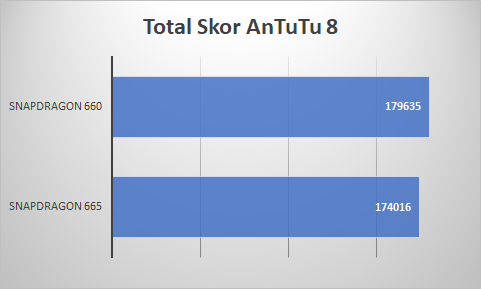 141s
141s
#516 linkCache_getLink using $NBC_LINKCACHE +0s … 0.141s
#517 linkCache_getLink using $NBC_LINKCACHE +0s … 0.141s
#518 linkCache_getLink using $NBC_LINKCACHE +0s … 0.141s
#519 linkCache_getLink using $NBC_LINKCACHE +0s … 0.141s
#520 linkCache_getLink using $NBC_LINKCACHE +0s … 0.141s
#521 linkCache_getLink using $NBC_LINKCACHE +0s … 0.141s
#522 linkCache_getLink using $NBC_LINKCACHE +0s … 0.141s
#523 linkCache_getLink using $NBC_LINKCACHE +0s … 0.141s
#524 linkCache_getLink using $NBC_LINKCACHE +0s … 0.141s
#525 linkCache_getLink using $NBC_LINKCACHE +0s … 0.141s
#526 linkCache_getLink using $NBC_LINKCACHE +0s … 0.141s
#527 linkCache_getLink using $NBC_LINKCACHE +0s … 0.141s
#528 linkCache_getLink using $NBC_LINKCACHE +0s … 0.141s
#529 linkCache_getLink using $NBC_LINKCACHE +0s . .. 0.141s
.. 0.141s
#530 linkCache_getLink using $NBC_LINKCACHE +0s … 0.141s
#531 linkCache_getLink using $NBC_LINKCACHE +0s … 0.141s
#532 linkCache_getLink using $NBC_LINKCACHE +0s … 0.141s
#533 linkCache_getLink using $NBC_LINKCACHE +0s … 0.141s
#534 linkCache_getLink using $NBC_LINKCACHE +0s … 0.142s
#535 linkCache_getLink using $NBC_LINKCACHE +0s … 0.142s
#536 linkCache_getLink using $NBC_LINKCACHE +0s … 0.142s
#537 linkCache_getLink using $NBC_LINKCACHE +0s … 0.142s
#538 linkCache_getLink using $NBC_LINKCACHE +0s … 0.142s
#539 linkCache_getLink using $NBC_LINKCACHE +0s … 0.142s
#540 linkCache_getLink using $NBC_LINKCACHE +0s … 0.142s
#541 linkCache_getLink using $NBC_LINKCACHE +0s … 0.142s
#542 linkCache_getLink using $NBC_LINKCACHE +0s … 0.142s
#543 linkCache_getLink using $NBC_LINKCACHE +0s . .. 0.142s
.. 0.142s
#544 linkCache_getLink using $NBC_LINKCACHE +0s … 0.142s
#545 linkCache_getLink using $NBC_LINKCACHE +0s … 0.142s
#546 linkCache_getLink using $NBC_LINKCACHE +0s … 0.142s
#547 linkCache_getLink no uid found +0s … 0.142s
#548 linkCache_getLink using $NBC_LINKCACHE +0s … 0.142s
#549 linkCache_getLink using $NBC_LINKCACHE +0s … 0.142s
#550 linkCache_getLink using $NBC_LINKCACHE +0s … 0.142s
#551 linkCache_getLink using $NBC_LINKCACHE +0s … 0.142s
#552 linkCache_getLink using $NBC_LINKCACHE +0s … 0.142s
#553 linkCache_getLink using $NBC_LINKCACHE +0s … 0.142s
#554 linkCache_getLink using $NBC_LINKCACHE +0s … 0.142s
#555 linkCache_getLink using $NBC_LINKCACHE +0s … 0.142s
#556 linkCache_getLink using $NBC_LINKCACHE +0s … 0.142s
#557 linkCache_getLink using $NBC_LINKCACHE +0s .. . 0.142s
. 0.142s
#558 linkCache_getLink using $NBC_LINKCACHE +0s … 0.142s
#559 linkCache_getLink using $NBC_LINKCACHE +0s … 0.142s
#560 linkCache_getLink using $NBC_LINKCACHE +0s … 0.142s
#561 linkCache_getLink using $NBC_LINKCACHE +0s … 0.142s
#562 linkCache_getLink using $NBC_LINKCACHE +0s … 0.142s
#563 linkCache_getLink using $NBC_LINKCACHE +0s … 0.142s
#564 linkCache_getLink using $NBC_LINKCACHE +0s … 0.142s
#565 linkCache_getLink using $NBC_LINKCACHE +0s … 0.142s
#566 linkCache_getLink using $NBC_LINKCACHE +0s … 0.142s
#567 linkCache_getLink using $NBC_LINKCACHE +0s … 0.142s
#568 linkCache_getLink using $NBC_LINKCACHE +0s … 0.142s
#569 linkCache_getLink using $NBC_LINKCACHE +0s … 0.142s
#570 linkCache_getLink using $NBC_LINKCACHE +0s … 0.142s
#571 linkCache_getLink using $NBC_LINKCACHE +0. 001s … 0.143s
001s … 0.143s
#572 linkCache_getLink using $NBC_LINKCACHE +0s … 0.143s
#573 linkCache_getLink using $NBC_LINKCACHE +0s … 0.143s
#574 linkCache_getLink using $NBC_LINKCACHE +0s … 0.143s
#575 linkCache_getLink using $NBC_LINKCACHE +0s … 0.143s
#576 linkCache_getLink using $NBC_LINKCACHE +0s … 0.143s
#577 linkCache_getLink using $NBC_LINKCACHE +0s … 0.143s
#578 linkCache_getLink using $NBC_LINKCACHE +0s … 0.143s
#579 linkCache_getLink using $NBC_LINKCACHE +0s … 0.143s
#580 linkCache_getLink using $NBC_LINKCACHE +0s … 0.143s
#581 linkCache_getLink using $NBC_LINKCACHE +0s … 0.143s
#582 linkCache_getLink using $NBC_LINKCACHE +0s … 0.143s
#583 linkCache_getLink using $NBC_LINKCACHE +0s … 0.143s
#584 linkCache_getLink using $NBC_LINKCACHE +0s … 0.143s
#585 linkCache_getLink using $NBC_LINKCACHE +0s .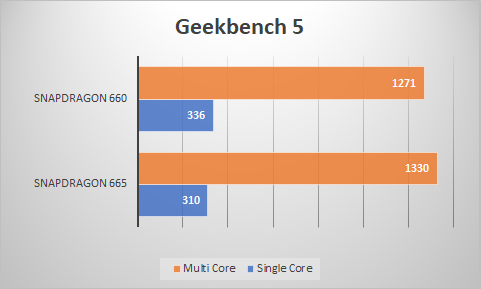 .. 0.143s
.. 0.143s
#586 linkCache_getLink using $NBC_LINKCACHE +0s … 0.143s
#587 linkCache_getLink using $NBC_LINKCACHE +0s … 0.143s
#588 linkCache_getLink using $NBC_LINKCACHE +0s … 0.143s
#589 linkCache_getLink no uid found +0s … 0.143s
#590 linkCache_getLink using $NBC_LINKCACHE +0s … 0.143s
#591 linkCache_getLink using $NBC_LINKCACHE +0s … 0.143s
#592 linkCache_getLink using $NBC_LINKCACHE +0s … 0.143s
#593 linkCache_getLink using $NBC_LINKCACHE +0s … 0.143s
#594 linkCache_getLink using $NBC_LINKCACHE +0s … 0.143s
#595 linkCache_getLink using $NBC_LINKCACHE +0s … 0.143s
#596 linkCache_getLink using $NBC_LINKCACHE +0s … 0.143s
#597 linkCache_getLink using $NBC_LINKCACHE +0s … 0.143s
#598 linkCache_getLink using $NBC_LINKCACHE +0s … 0.143s
#599 linkCache_getLink using $NBC_LINKCACHE +0s ..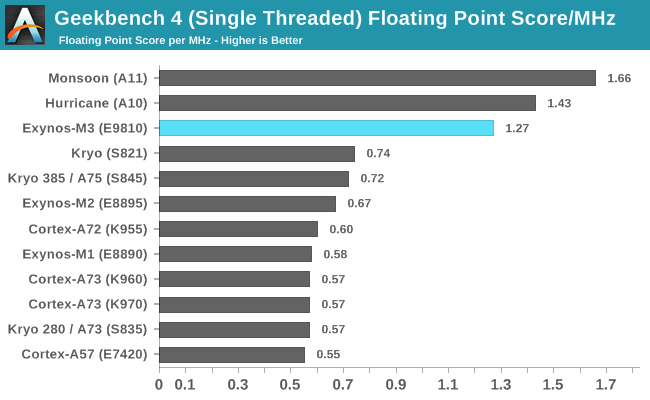 . 0.143s
. 0.143s
#600 linkCache_getLink using $NBC_LINKCACHE +0s … 0.143s
#601 linkCache_getLink using $NBC_LINKCACHE +0s … 0.143s
#602 linkCache_getLink using $NBC_LINKCACHE +0s … 0.143s
#603 linkCache_getLink using $NBC_LINKCACHE +0s … 0.143s
#604 linkCache_getLink using $NBC_LINKCACHE +0s … 0.143s
#605 linkCache_getLink using $NBC_LINKCACHE +0s … 0.143s
#606 linkCache_getLink using $NBC_LINKCACHE +0s … 0.143s
#607 linkCache_getLink using $NBC_LINKCACHE +0s … 0.143s
#608 linkCache_getLink using $NBC_LINKCACHE +0s … 0.143s
#609 linkCache_getLink using $NBC_LINKCACHE +0s … 0.143s
#610 linkCache_getLink using $NBC_LINKCACHE +0s … 0.143s
#611 linkCache_getLink using $NBC_LINKCACHE +0s … 0.143s
#612 linkCache_getLink using $NBC_LINKCACHE +0s … 0.143s
#613 linkCache_getLink using $NBC_LINKCACHE +0s . .. 0.143s
.. 0.143s
#614 linkCache_getLink using $NBC_LINKCACHE +0s … 0.143s
#615 linkCache_getLink using $NBC_LINKCACHE +0s … 0.143s
#616 linkCache_getLink using $NBC_LINKCACHE +0s … 0.143s
#617 linkCache_getLink using $NBC_LINKCACHE +0s … 0.143s
#618 linkCache_getLink using $NBC_LINKCACHE +0s … 0.143s
#619 linkCache_getLink using $NBC_LINKCACHE +0.001s … 0.144s
#620 linkCache_getLink using $NBC_LINKCACHE +0s … 0.144s
#621 linkCache_getLink using $NBC_LINKCACHE +0s … 0.144s
#622 linkCache_getLink using $NBC_LINKCACHE +0s … 0.144s
#623 linkCache_getLink using $NBC_LINKCACHE +0s … 0.144s
#624 linkCache_getLink using $NBC_LINKCACHE +0s … 0.144s
#625 linkCache_getLink using $NBC_LINKCACHE +0s … 0.144s
#626 linkCache_getLink using $NBC_LINKCACHE +0s … 0.144s
#627 linkCache_getLink using $NBC_LINKCACHE +0s . .. 0.144s
.. 0.144s
#628 linkCache_getLink using $NBC_LINKCACHE +0s … 0.144s
#629 linkCache_getLink using $NBC_LINKCACHE +0s … 0.144s
#630 linkCache_getLink using $NBC_LINKCACHE +0s … 0.144s
#631 linkCache_getLink using $NBC_LINKCACHE +0s … 0.144s
#632 linkCache_getLink using $NBC_LINKCACHE +0s … 0.144s
#633 linkCache_getLink using $NBC_LINKCACHE +0s … 0.144s
#634 linkCache_getLink using $NBC_LINKCACHE +0s … 0.144s
#635 linkCache_getLink using $NBC_LINKCACHE +0s … 0.144s
#636 linkCache_getLink using $NBC_LINKCACHE +0s … 0.144s
#637 linkCache_getLink using $NBC_LINKCACHE +0s … 0.144s
#638 linkCache_getLink using $NBC_LINKCACHE +0s … 0.144s
#639 linkCache_getLink using $NBC_LINKCACHE +0s … 0.144s
#640 linkCache_getLink using $NBC_LINKCACHE +0s … 0.144s
#641 linkCache_getLink using $NBC_LINKCACHE +0s .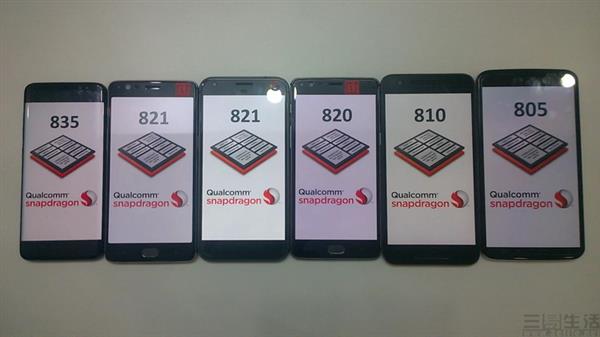 .. 0.144s
.. 0.144s
#642 linkCache_getLink using $NBC_LINKCACHE +0s … 0.144s
#643 linkCache_getLink using $NBC_LINKCACHE +0s … 0.144s
#644 linkCache_getLink using $NBC_LINKCACHE +0s … 0.144s
#645 linkCache_getLink using $NBC_LINKCACHE +0s … 0.144s
#646 linkCache_getLink using $NBC_LINKCACHE +0s … 0.144s
#647 linkCache_getLink using $NBC_LINKCACHE +0s … 0.144s
#648 linkCache_getLink no uid found +0s … 0.145s
#649 linkCache_getLink using $NBC_LINKCACHE +0s … 0.145s
#650 linkCache_getLink using $NBC_LINKCACHE +0s … 0.145s
#651 linkCache_getLink using $NBC_LINKCACHE +0s … 0.145s
#652 linkCache_getLink using $NBC_LINKCACHE +0s … 0.145s
#653 linkCache_getLink using $NBC_LINKCACHE +0s … 0.145s
#654 linkCache_getLink using $NBC_LINKCACHE +0s … 0.145s
#655 linkCache_getLink using $NBC_LINKCACHE +0s .. . 0.145s
. 0.145s
#656 linkCache_getLink using $NBC_LINKCACHE +0s … 0.145s
#657 linkCache_getLink using $NBC_LINKCACHE +0s … 0.145s
#658 linkCache_getLink using $NBC_LINKCACHE +0s … 0.145s
#659 linkCache_getLink using $NBC_LINKCACHE +0s … 0.145s
#660 linkCache_getLink using $NBC_LINKCACHE +0s … 0.145s
#661 linkCache_getLink using $NBC_LINKCACHE +0s … 0.145s
#662 linkCache_getLink using $NBC_LINKCACHE +0s … 0.145s
#663 linkCache_getLink using $NBC_LINKCACHE +0s … 0.145s
#664 linkCache_getLink using $NBC_LINKCACHE +0s … 0.145s
#665 linkCache_getLink using $NBC_LINKCACHE +0s … 0.145s
#666 linkCache_getLink using $NBC_LINKCACHE +0s … 0.145s
#667 linkCache_getLink using $NBC_LINKCACHE +0.001s … 0.145s
#668 linkCache_getLink using $NBC_LINKCACHE +0s … 0.145s
#669 linkCache_getLink using $NBC_LINKCACHE +0s .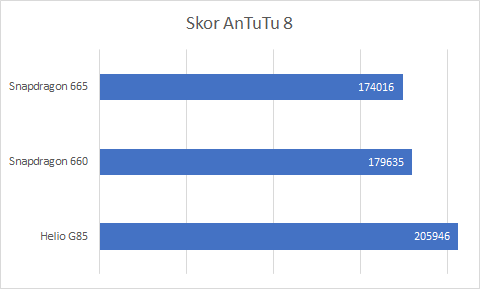 .. 0.145s
.. 0.145s
#670 linkCache_getLink using $NBC_LINKCACHE +0s … 0.145s
#671 linkCache_getLink using $NBC_LINKCACHE +0s … 0.145s
#672 linkCache_getLink using $NBC_LINKCACHE +0s … 0.145s
#673 linkCache_getLink using $NBC_LINKCACHE +0s … 0.145s
#674 linkCache_getLink using $NBC_LINKCACHE +0s … 0.145s
#675 linkCache_getLink using $NBC_LINKCACHE +0s … 0.145s
#676 linkCache_getLink using $NBC_LINKCACHE +0s … 0.145s
#677 linkCache_getLink using $NBC_LINKCACHE +0s … 0.146s
#678 linkCache_getLink using $NBC_LINKCACHE +0s … 0.146s
#679 linkCache_getLink using $NBC_LINKCACHE +0s … 0.146s
#680 linkCache_getLink using $NBC_LINKCACHE +0s … 0.146s
#681 linkCache_getLink no uid found +0s … 0.146s
#682 linkCache_getLink using $NBC_LINKCACHE +0s … 0.146s
#683 linkCache_getLink using $NBC_LINKCACHE +0s ..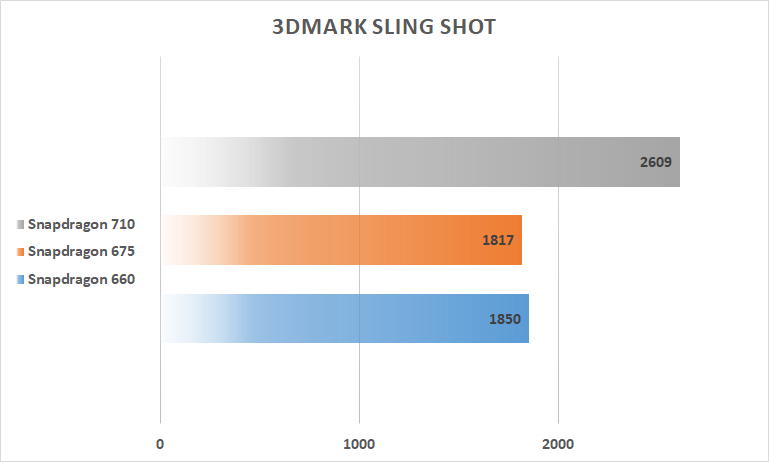 . 0.146s
. 0.146s
#684 linkCache_getLink using $NBC_LINKCACHE +0s … 0.146s
#685 linkCache_getLink using $NBC_LINKCACHE +0s … 0.146s
#686 linkCache_getLink using $NBC_LINKCACHE +0s … 0.146s
#687 linkCache_getLink using $NBC_LINKCACHE +0s … 0.146s
#688 linkCache_getLink using $NBC_LINKCACHE +0s … 0.146s
#689 linkCache_getLink using $NBC_LINKCACHE +0s … 0.146s
#690 linkCache_getLink using $NBC_LINKCACHE +0s … 0.146s
#691 linkCache_getLink using $NBC_LINKCACHE +0s … 0.146s
#692 linkCache_getLink using $NBC_LINKCACHE +0s … 0.146s
#693 linkCache_getLink using $NBC_LINKCACHE +0s … 0.146s
#694 linkCache_getLink using $NBC_LINKCACHE +0s … 0.146s
#695 linkCache_getLink using $NBC_LINKCACHE +0s … 0.146s
#696 linkCache_getLink using $NBC_LINKCACHE +0s … 0.146s
#697 linkCache_getLink using $NBC_LINKCACHE +0s . .. 0.146s
.. 0.146s
#698 linkCache_getLink using $NBC_LINKCACHE +0s … 0.146s
#699 linkCache_getLink using $NBC_LINKCACHE +0s … 0.146s
#700 linkCache_getLink using $NBC_LINKCACHE +0s … 0.146s
#701 linkCache_getLink using $NBC_LINKCACHE +0s … 0.146s
#702 linkCache_getLink using $NBC_LINKCACHE +0s … 0.146s
#703 linkCache_getLink using $NBC_LINKCACHE +0s … 0.146s
#704 linkCache_getLink using $NBC_LINKCACHE +0s … 0.146s
#705 linkCache_getLink using $NBC_LINKCACHE +0s … 0.146s
#706 linkCache_getLink using $NBC_LINKCACHE +0s … 0.146s
#707 linkCache_getLink using $NBC_LINKCACHE +0s … 0.146s
#708 linkCache_getLink using $NBC_LINKCACHE +0s … 0.146s
#709 linkCache_getLink using $NBC_LINKCACHE +0s … 0.146s
#710 linkCache_getLink using $NBC_LINKCACHE +0s … 0.146s
#711 linkCache_getLink using $NBC_LINKCACHE +0s . .. 0.146s
.. 0.146s
#712 linkCache_getLink using $NBC_LINKCACHE +0s … 0.146s
#713 linkCache_getLink using $NBC_LINKCACHE +0s … 0.146s
#714 linkCache_getLink using $NBC_LINKCACHE +0s … 0.146s
#715 linkCache_getLink using $NBC_LINKCACHE +0.001s … 0.147s
#716 linkCache_getLink using $NBC_LINKCACHE +0s … 0.147s
#717 linkCache_getLink using $NBC_LINKCACHE +0s … 0.147s
#718 linkCache_getLink using $NBC_LINKCACHE +0s … 0.147s
#719 linkCache_getLink using $NBC_LINKCACHE +0s … 0.147s
#720 linkCache_getLink using $NBC_LINKCACHE +0.001s … 0.148s
#721 linkCache_getLink using $NBC_LINKCACHE +0s … 0.148s
#722 linkCache_getLink using $NBC_LINKCACHE +0s … 0.148s
#723 linkCache_getLink using $NBC_LINKCACHE +0s … 0.148s
#724 linkCache_getLink using $NBC_LINKCACHE +0s … 0.148s
#725 linkCache_getLink using $NBC_LINKCACHE +0.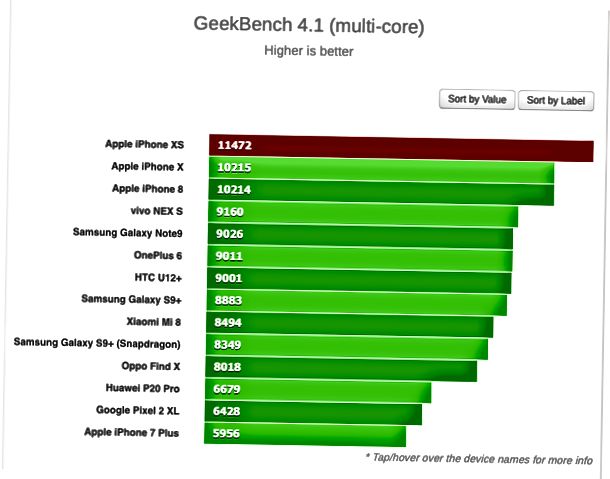 001s … 0.149s
001s … 0.149s
#726 linkCache_getLink using $NBC_LINKCACHE +0s … 0.149s
#727 linkCache_getLink using $NBC_LINKCACHE +0s … 0.149s
#728 linkCache_getLink using $NBC_LINKCACHE +0s … 0.149s
#729 linkCache_getLink using $NBC_LINKCACHE +0s … 0.149s
#730 linkCache_getLink using $NBC_LINKCACHE +0.001s … 0.15s
#731 linkCache_getLink using $NBC_LINKCACHE +0s … 0.15s
#732 linkCache_getLink using $NBC_LINKCACHE +0s … 0.15s
#733 linkCache_getLink using $NBC_LINKCACHE +0s … 0.15s
#734 linkCache_getLink using $NBC_LINKCACHE +0s … 0.15s
#735 linkCache_getLink using $NBC_LINKCACHE +0.001s … 0.151s
#736 linkCache_getLink using $NBC_LINKCACHE +0s … 0.151s
#737 linkCache_getLink using $NBC_LINKCACHE +0s … 0.151s
#738 linkCache_getLink using $NBC_LINKCACHE +0s … 0.151s
#739 linkCache_getLink using $NBC_LINKCACHE +0s . .. 0.151s
.. 0.151s
#740 linkCache_getLink using $NBC_LINKCACHE +0.001s … 0.152s
#741 linkCache_getLink using $NBC_LINKCACHE +0.001s … 0.153s
#742 linkCache_getLink using $NBC_LINKCACHE +0.001s … 0.154s
#743 linkCache_getLink using $NBC_LINKCACHE +0s … 0.154s
#744 linkCache_getLink using $NBC_LINKCACHE +0s … 0.154s
#745 linkCache_getLink using $NBC_LINKCACHE +0s … 0.154s
#746 linkCache_getLink using $NBC_LINKCACHE +0s … 0.154s
#747 linkCache_getLink using $NBC_LINKCACHE +0s … 0.155s
#748 linkCache_getLink using $NBC_LINKCACHE +0s … 0.155s
#749 linkCache_getLink using $NBC_LINKCACHE +0.001s … 0.155s
#750 linkCache_getLink using $NBC_LINKCACHE +0.001s … 0.156s
#751 linkCache_getLink using $NBC_LINKCACHE +0s … 0.156s
#752 linkCache_getLink using $NBC_LINKCACHE +0s … 0.156s
#753 linkCache_getLink using $NBC_LINKCACHE +0s . .. 0.156s
.. 0.156s
#754 linkCache_getLink using $NBC_LINKCACHE +0s … 0.156s
#755 linkCache_getLink using $NBC_LINKCACHE +0s … 0.156s
#756 linkCache_getLink using $NBC_LINKCACHE +0s … 0.156s
#757 linkCache_getLink using $NBC_LINKCACHE +0s … 0.156s
#758 linkCache_getLink using $NBC_LINKCACHE +0s … 0.156s
#759 linkCache_getLink using $NBC_LINKCACHE +0s … 0.156s
#760 linkCache_getLink using $NBC_LINKCACHE +0s … 0.156s
#761 linkCache_getLink using $NBC_LINKCACHE +0s … 0.156s
#762 linkCache_getLink using $NBC_LINKCACHE +0s … 0.156s
#763 linkCache_getLink using $NBC_LINKCACHE +0s … 0.156s
#764 linkCache_getLink using $NBC_LINKCACHE +0s … 0.156s
#765 linkCache_getLink using $NBC_LINKCACHE +0s … 0.156s
#766 linkCache_getLink using $NBC_LINKCACHE +0s … 0.156s
#767 linkCache_getLink using $NBC_LINKCACHE +0s . .. 0.156s
.. 0.156s
#768 linkCache_getLink using $NBC_LINKCACHE +0s … 0.156s
#769 linkCache_getLink using $NBC_LINKCACHE +0s … 0.156s
#770 linkCache_getLink using $NBC_LINKCACHE +0s … 0.156s
#771 linkCache_getLink using $NBC_LINKCACHE +0s … 0.156s
#772 linkCache_getLink using $NBC_LINKCACHE +0s … 0.156s
#773 linkCache_getLink using $NBC_LINKCACHE +0s … 0.156s
#774 linkCache_getLink using $NBC_LINKCACHE +0s … 0.156s
#775 linkCache_getLink using $NBC_LINKCACHE +0.001s … 0.157s
#776 linkCache_getLink using $NBC_LINKCACHE +0s … 0.157s
#777 linkCache_getLink using $NBC_LINKCACHE +0s … 0.157s
#778 linkCache_getLink using $NBC_LINKCACHE +0s … 0.157s
#779 linkCache_getLink using $NBC_LINKCACHE +0s … 0.157s
#780 linkCache_getLink using $NBC_LINKCACHE +0s … 0.157s
#781 linkCache_getLink using $NBC_LINKCACHE +0s . .. 0.157s
.. 0.157s
#782 linkCache_getLink using $NBC_LINKCACHE +0s … 0.157s
#783 linkCache_getLink using $NBC_LINKCACHE +0s … 0.157s
#784 linkCache_getLink using $NBC_LINKCACHE +0s … 0.157s
#785 linkCache_getLink using $NBC_LINKCACHE +0s … 0.157s
#786 linkCache_getLink using $NBC_LINKCACHE +0s … 0.157s
#787 linkCache_getLink using $NBC_LINKCACHE +0s … 0.157s
#788 linkCache_getLink using $NBC_LINKCACHE +0s … 0.157s
#789 linkCache_getLink using $NBC_LINKCACHE +0s … 0.157s
#790 linkCache_getLink using $NBC_LINKCACHE +0s … 0.157s
#791 linkCache_getLink using $NBC_LINKCACHE +0s … 0.157s
#792 linkCache_getLink using $NBC_LINKCACHE +0s … 0.157s
#793 linkCache_getLink using $NBC_LINKCACHE +0s … 0.157s
#794 linkCache_getLink using $NBC_LINKCACHE +0s … 0.157s
#795 linkCache_getLink using $NBC_LINKCACHE +0s .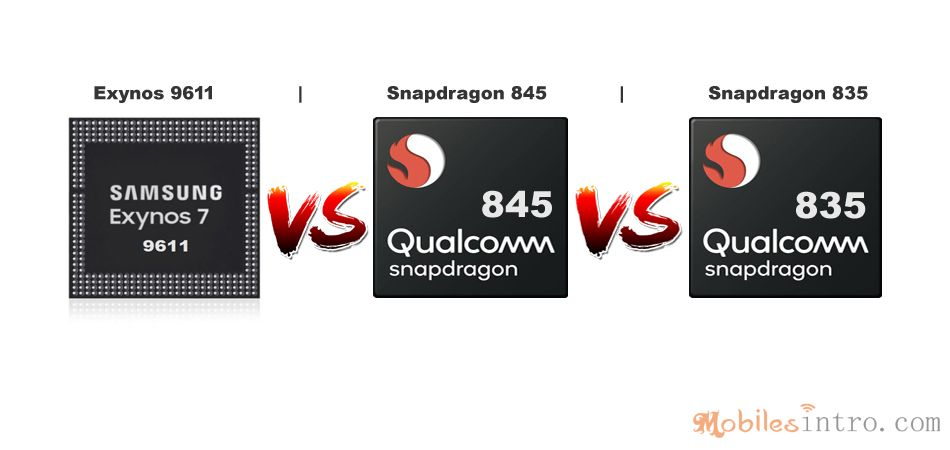 .. 0.157s
.. 0.157s
#796 linkCache_getLink using $NBC_LINKCACHE +0s … 0.158s
#797 linkCache_getLink using $NBC_LINKCACHE +0s … 0.158s
#798 linkCache_getLink using $NBC_LINKCACHE +0s … 0.158s
#799 linkCache_getLink using $NBC_LINKCACHE +0s … 0.158s
#800 linkCache_getLink using $NBC_LINKCACHE +0.001s … 0.158s
#801 linkCache_getLink using $NBC_LINKCACHE +0s … 0.158s
#802 linkCache_getLink using $NBC_LINKCACHE +0s … 0.158s
#803 linkCache_getLink using $NBC_LINKCACHE +0s … 0.158s
#804 linkCache_getLink using $NBC_LINKCACHE +0s … 0.158s
#805 linkCache_getLink using $NBC_LINKCACHE +0s … 0.158s
#806 linkCache_getLink using $NBC_LINKCACHE +0s … 0.158s
#807 linkCache_getLink using $NBC_LINKCACHE +0s … 0.158s
#808 linkCache_getLink using $NBC_LINKCACHE +0s … 0.158s
#809 linkCache_getLink using $NBC_LINKCACHE +0s . .. 0.158s
.. 0.158s
#810 linkCache_getLink using $NBC_LINKCACHE +0s … 0.158s
#811 linkCache_getLink using $NBC_LINKCACHE +0s … 0.158s
#812 linkCache_getLink using $NBC_LINKCACHE +0s … 0.158s
#813 linkCache_getLink using $NBC_LINKCACHE +0s … 0.159s
#814 linkCache_getLink using $NBC_LINKCACHE +0s … 0.159s
#815 linkCache_getLink using $NBC_LINKCACHE +0s … 0.159s
#816 linkCache_getLink using $NBC_LINKCACHE +0s … 0.159s
#817 linkCache_getLink using $NBC_LINKCACHE +0s … 0.159s
#818 linkCache_getLink using $NBC_LINKCACHE +0s … 0.159s
#819 linkCache_getLink using $NBC_LINKCACHE +0s … 0.159s
#820 linkCache_getLink using $NBC_LINKCACHE +0s … 0.159s
#821 linkCache_getLink using $NBC_LINKCACHE +0s … 0.159s
#822 linkCache_getLink using $NBC_LINKCACHE +0s … 0.159s
#823 linkCache_getLink using $NBC_LINKCACHE +0s . .. 0.159s
.. 0.159s
#824 linkCache_getLink using $NBC_LINKCACHE +0s … 0.159s
#825 linkCache_getLink using $NBC_LINKCACHE +0s … 0.159s
#826 linkCache_getLink using $NBC_LINKCACHE +0s … 0.159s
#827 linkCache_getLink using $NBC_LINKCACHE +0s … 0.159s
#828 linkCache_getLink using $NBC_LINKCACHE +0s … 0.159s
#829 linkCache_getLink no uid found +0s … 0.159s
#830 linkCache_getLink using $NBC_LINKCACHE +0s … 0.159s
#831 linkCache_getLink using $NBC_LINKCACHE +0s … 0.159s
#832 linkCache_getLink using $NBC_LINKCACHE +0s … 0.159s
#833 linkCache_getLink using $NBC_LINKCACHE +0s … 0.159s
#834 linkCache_getLink using $NBC_LINKCACHE +0s … 0.159s
#835 linkCache_getLink using $NBC_LINKCACHE +0s … 0.159s
#836 linkCache_getLink using $NBC_LINKCACHE +0s … 0.159s
#837 linkCache_getLink using $NBC_LINKCACHE +0s ..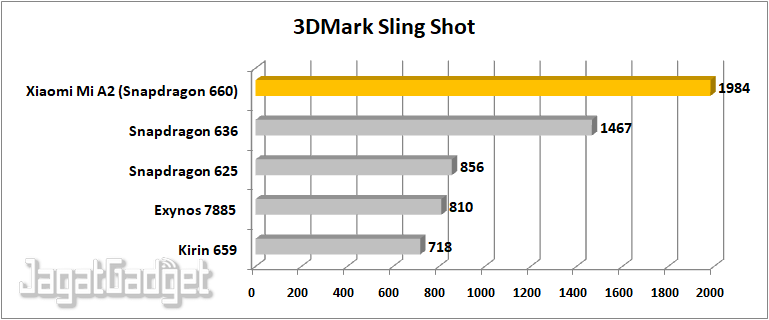 . 0.159s
. 0.159s
#838 linkCache_getLink using $NBC_LINKCACHE +0s … 0.159s
#839 linkCache_getLink using $NBC_LINKCACHE +0s … 0.159s
#840 linkCache_getLink using $NBC_LINKCACHE +0s … 0.159s
#841 linkCache_getLink using $NBC_LINKCACHE +0s … 0.159s
#842 linkCache_getLink using $NBC_LINKCACHE +0s … 0.159s
#843 linkCache_getLink using $NBC_LINKCACHE +0s … 0.159s
#844 linkCache_getLink using $NBC_LINKCACHE +0s … 0.159s
#845 linkCache_getLink using $NBC_LINKCACHE +0s … 0.159s
#846 linkCache_getLink using $NBC_LINKCACHE +0s … 0.159s
#847 linkCache_getLink using $NBC_LINKCACHE +0s … 0.159s
#848 linkCache_getLink using $NBC_LINKCACHE +0s … 0.159s
#849 linkCache_getLink using $NBC_LINKCACHE +0s … 0.159s
#850 linkCache_getLink using $NBC_LINKCACHE +0s … 0.159s
#851 linkCache_getLink using $NBC_LINKCACHE +0s . .. 0.159s
.. 0.159s
#852 linkCache_getLink using $NBC_LINKCACHE +0s … 0.159s
#853 linkCache_getLink using $NBC_LINKCACHE +0.001s … 0.16s
#854 linkCache_getLink using $NBC_LINKCACHE +0s … 0.16s
#855 linkCache_getLink using $NBC_LINKCACHE +0s … 0.16s
#856 linkCache_getLink using $NBC_LINKCACHE +0s … 0.16s
#857 linkCache_getLink using $NBC_LINKCACHE +0s … 0.16s
#858 linkCache_getLink using $NBC_LINKCACHE +0s … 0.16s
#859 linkCache_getLink using $NBC_LINKCACHE +0s … 0.16s
#860 linkCache_getLink using $NBC_LINKCACHE +0s … 0.16s
#861 linkCache_getLink using $NBC_LINKCACHE +0s … 0.16s
#862 linkCache_getLink using $NBC_LINKCACHE +0s … 0.16s
#863 linkCache_getLink using $NBC_LINKCACHE +0s … 0.16s
#864 linkCache_getLink using $NBC_LINKCACHE +0s … 0.16s
#865 linkCache_getLink using $NBC_LINKCACHE +0s .. . 0.16s
. 0.16s
#866 linkCache_getLink using $NBC_LINKCACHE +0s … 0.16s
#867 linkCache_getLink using $NBC_LINKCACHE +0s … 0.16s
#868 linkCache_getLink using $NBC_LINKCACHE +0s … 0.16s
#869 linkCache_getLink using $NBC_LINKCACHE +0s … 0.16s
#870 linkCache_getLink using $NBC_LINKCACHE +0s … 0.16s
#871 linkCache_getLink using $NBC_LINKCACHE +0s … 0.16s
#872 linkCache_getLink using $NBC_LINKCACHE +0s … 0.16s
#873 linkCache_getLink using $NBC_LINKCACHE +0s … 0.16s
#874 linkCache_getLink using $NBC_LINKCACHE +0s … 0.16s
#875 linkCache_getLink using $NBC_LINKCACHE +0s … 0.16s
#876 linkCache_getLink using $NBC_LINKCACHE +0s … 0.16s
#877 linkCache_getLink using $NBC_LINKCACHE +0s … 0.16s
#878 linkCache_getLink using $NBC_LINKCACHE +0s … 0.16s
#879 linkCache_getLink using $NBC_LINKCACHE +0s … 0.16s
#880 linkCache_getLink using $NBC_LINKCACHE +0s .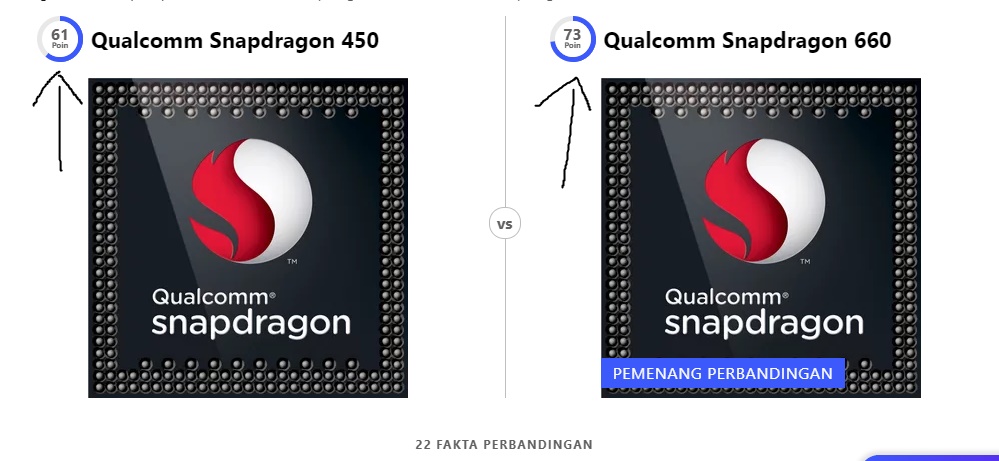 .. 0.16s
.. 0.16s
#881 linkCache_getLink using $NBC_LINKCACHE +0s … 0.16s
#882 linkCache_getLink using $NBC_LINKCACHE +0s … 0.16s
#883 linkCache_getLink using $NBC_LINKCACHE +0s … 0.16s
#884 linkCache_getLink using $NBC_LINKCACHE +0s … 0.16s
#885 linkCache_getLink using $NBC_LINKCACHE +0s … 0.16s
#886 linkCache_getLink using $NBC_LINKCACHE +0s … 0.16s
#887 linkCache_getLink using $NBC_LINKCACHE +0s … 0.161s
#888 linkCache_getLink using $NBC_LINKCACHE +0s … 0.161s
#889 linkCache_getLink using $NBC_LINKCACHE +0s … 0.161s
#890 linkCache_getLink using $NBC_LINKCACHE +0s … 0.161s
#891 linkCache_getLink using $NBC_LINKCACHE +0s … 0.161s
#892 linkCache_getLink using $NBC_LINKCACHE +0s … 0.161s
#893 linkCache_getLink using $NBC_LINKCACHE +0s … 0.161s
#894 linkCache_getLink using $NBC_LINKCACHE +0s . .. 0.161s
.. 0.161s
#895 linkCache_getLink using $NBC_LINKCACHE +0s … 0.161s
#896 linkCache_getLink using $NBC_LINKCACHE +0s … 0.161s
#897 linkCache_getLink using $NBC_LINKCACHE +0s … 0.161s
#898 linkCache_getLink using $NBC_LINKCACHE +0s … 0.161s
#899 linkCache_getLink using $NBC_LINKCACHE +0s … 0.161s
#900 linkCache_getLink using $NBC_LINKCACHE +0s … 0.161s
#901 min, max, avg, median took s +0.001s … 0.161s
#902 return log +0s … 0.162s
Compare Qualcomm Snapdragon 660 vs Qualcomm Snapdragon 845
Mobiles›
Compare Mobile Processors›
Compare Qualcomm Snapdragon 660 vs Qualcomm Snapdragon 845
Jump To
- General
- Performance (CPU)
- Graphics (GPU)
- Memory
- Connectivity
- Multimedia
- AI
- Benchmark
- Gaming Performance
vs
Qualcomm Snapdragon 660
Qualcomm Snapdragon 845
Qualcomm Snapdragon 660 vs Qualcomm Snapdragon 845 — which chip or processor is better? should you buy mobile phones having Qualcomm Snapdragon 660 or should go for the Qualcomm Snapdragon 845? Here you will find detailed information about technical specs and benchmarks tests for each chipset.
General
| Brand | Qualcomm | Qualcomm |
|---|---|---|
| Platform | Smartphones | Smartphones |
| Generation | N/A | 2nd |
| Release Date | May 2017 | Dec 2017 |
Performance (CPU)
| Cores | 8 | 8 |
|---|---|---|
| Architecture | 64 bit | 64 bit |
| Frequency (Clock Speed) | 2200 MHz | 2800 MHz |
| Instruction Set | ARMv8-A | ARMv8. 2-A 2-A |
| L1 Cache | N/A | 256 KB |
| L2 Cache | 2 MB | 1 MB |
| L3 Cache | N/A | 2 MB |
Graphics (GPU)
| GPU Name | Adreno 512 | Adreno 630 |
|---|---|---|
| Frequency (Clock Speed) | 850 MHz | 710 MHz |
| Execution Units | 1 | 2 |
| Shading Units | 128 | 256 |
| Vulkan Version | 1.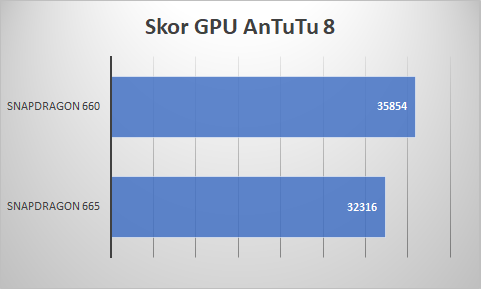 0 0 |
1.0 |
| OpenCL Version | 2.0 | 2.0 |
| DirectX Version | 12 | 12 |
Memory
| Type | N/A | LPDDR4X |
|---|---|---|
| Frequency | 1866 MHz | 1866 MHz |
| Bus | 2×32 Bit | 4×16 Bit |
| Max Memory Capacity | 8 GB | 8 GB |
Connectivity
| Modem | Snapdragon X12 LTE | N/A |
|---|---|---|
| 5G Support | No | No |
| 4G Support | Yes | Yes |
| Download Speed | 600 Mbps | 1. 2 Gbps 2 Gbps |
| Upload Speed | 150 Mbps | 150 Mbps |
| Wi-Fi Version | 5 | 5 |
| Bluetooth Version | 5.0 | 5.0 |
| GPS | Yes | Yes |
Multimedia
| Neural Processor (NPU) | Hexagon 680 | Hexagon 685 |
|---|---|---|
| Storage | UFS 2.1 | UFS 2.1 |
| Max Screen Resolution | 1600 x 2560 | 2160 x 3840 |
| Max Camera Resolution | 48 | 32 |
| Video Record | 4K @ 30FPS | 4K @ 60FPS |
| Video Playback | 4K @ 30FPS | 4K @ 120FPS |
| Video Codec Support | H. 264, H.265, VP8, VP9 264, H.265, VP8, VP9 |
H.264, H.265, VP9 |
| Audio Codec Support | AAC LC, MP3, HE-AACv1, HE-AACv2, FLAC | DSD 32 |
AI
| CPU | N/A | Yes |
|---|---|---|
| GPU | Adreno 512 | Adreno 630 |
Gaming Performance
| PUBG Mobile | N/A | 53 FPS [Ultra] |
|---|---|---|
| Call of Duty: Mobile | N/A | 55 FPS [High] |
| Fortnite | N/A | 28 FPS [Ultra] |
| World of Tanks Blitz | N/A | 60 FPS [Ultra] |
| Mobile Legends: Bang Bang | N/A | 56 FPS [Ultra] |
| Video Playback | 4K @ 30FPS | 4K @ 120FPS |
| Device | N/A | POCO F1 |
Phones with Qualcomm Snapdragon 660
Phones with Qualcomm Snapdragon 845
Qualcomm SDM845 Snapdragon 845 vs Qualcomm SDM660 Snapdragon 660
|
|
|
|
|
Qualcomm SDM845 Snapdragon 845 vs Qualcomm SDM660 Snapdragon 660
Comparison of the technical characteristics between the processors, with the Qualcomm SDM845 Snapdragon 845 on one side and the Qualcomm SDM660 Snapdragon 660 on the other side. The first is dedicated to the smartphone sector, It has 8 cores, 8 threads, a maximum frequency of 2,8GHz. The second is used on the smartphone segment, it has a total of 8 cores, 8 threads, its turbo frequency is set to 2,2 GHz. The following table also compares the lithography, the number of transistors (if indicated), the amount of cache memory, the maximum RAM memory capacity, the type of memory accepted, the release date, the maximum number of PCIe lanes, the values obtained in Geekbench 4 and Cinebench R15.
The first is dedicated to the smartphone sector, It has 8 cores, 8 threads, a maximum frequency of 2,8GHz. The second is used on the smartphone segment, it has a total of 8 cores, 8 threads, its turbo frequency is set to 2,2 GHz. The following table also compares the lithography, the number of transistors (if indicated), the amount of cache memory, the maximum RAM memory capacity, the type of memory accepted, the release date, the maximum number of PCIe lanes, the values obtained in Geekbench 4 and Cinebench R15.
Note: Commissions may be earned from the links above.
This page contains references to products from one or more of our advertisers. We may receive compensation when you click on links to those products. For an explanation of our advertising policy, please visit this page.
Specifications:
| Processor | Qualcomm SDM845 Snapdragon 845 | Qualcomm SDM660 Snapdragon 660 | ||||||
| Market (main) | Smartphone | Smartphone | ||||||
| ISA | ARMv8. 2-A (64-bit) 2-A (64-bit) |
ARMv8-A (64-bit) | ||||||
| Microarchitecture | Cortex-A75, Cortex-A55 | Cortex-A73, Cortex-A53 | ||||||
| Core name | Cortex-A75, Cortex-A55 | Kryo 260 Gold, Kryo 260 Silver | ||||||
| Family | Snapdragon 800 | Snapdragon 600 | ||||||
| Part number(s), S-Spec | SDM845, Qualcomm Napali | MSM8976 Plus, SDM660 | ||||||
| Release date | Q1 2018 | Q2 2017 | ||||||
| Lithography | 10 nm FinFET LPP | 14 nm LPP | ||||||
| Transistors | 5.300.000. 000 000 |
— | ||||||
| Cores | 8 | 8 | ||||||
| Threads | 8 | 8 | ||||||
| Base frequency | 1,9 GHz | 1,8 GHz | ||||||
| Turbo frequency | 2,8 GHz | 2,2 GHz | ||||||
| Energy cores | 4x ARM Cortex-A55 @ 1,9 GHz | 4x Qualcomm Kryo 260 Silver @ 1,84 GHz | ||||||
| High performance cores | 4x ARM Cortex-A75 @ 2,8 GHz | 4x Qualcomm Kryo 260 Gold @ 2,2 GHz | ||||||
| Cache memory | 2 MB | 1 MB | ||||||
| Max memory capacity | 6 GB | 6 GB | ||||||
| Memory types | LPDDR4X-1866 | LPDDR4-1866 | ||||||
| Max # of memory channels | 4 | 2 | ||||||
| Max memory bandwidth | 29,9 GB/s | 29,86 GB/s | ||||||
| TDP | 9 W | 9 W | ||||||
| GPU integrated graphics | Qualcomm Adreno 630 | Qualcomm Adreno 512 | ||||||
| GPU execution units | 2 | 1 | ||||||
| GPU shading units | 256 | 128 | ||||||
| GPU clock | 710 MHz | 650 MHz | ||||||
| GPU FP32 floating point | 737 GFLOPS | 217,6 GFLOPS | ||||||
| Socket | SoC | SoC | ||||||
| AnTuTu | 276. 473 473 |
136.026 | ||||||
| (Android) PassMark CPU Mark |
3.014 | 2.549 | ||||||
| (Android 64-bit) Geekbench 4 single core |
2.337 | 1.377 | ||||||
| (Android 64-bit) Geekbench 4 multi-core |
8.483 | 5.050 | ||||||
| (SGEMM) GFLOPS performance |
66,8 GFLOPS | 40,9 GFLOPS | ||||||
| (Multi-core / watt performance) Performance / watt ratio |
943 pts / W | 561 pts / W | ||||||
| Amazon | ||||||||
| eBay |
Note: Commissions may be earned from the links above.
We can better compare what are the technical differences between the two processors.
Price: For technical reasons, we cannot currently display a price less than 24 hours, or a real-time price. This is why we prefer for the moment not to show a price. You should refer to the respective online stores for the latest price, as well as availability.
We see that the two processors have an equivalent number of cores, the maximum frequency of Qualcomm SDM845 Snapdragon 845 is greater, that their respective TDP are of the same order. The Qualcomm SDM845 Snapdragon 845 was designed earlier.
Performances :
Performance comparison between the two processors, for this we consider the results generated on benchmark software such as Geekbench 4.
| AnTuTu — Total score | |
|---|---|
| Qualcomm SDM845 Snapdragon 845 |
276.  473 473 |
| Qualcomm SDM660 Snapdragon 660 |
136.026 |
The difference is 103%.
Note: Commissions may be earned from the links above. These scores are only an
average of the performances got with these processors, you may get different results.
AnTuTu is one of the most popular apps in the world to evaluate and compare the power of a mobile device with the competition. It tests above all the power of calculation, the display of Web pages, the modeling of decorations in 3D, the management of the memory, the transfer of data.
| Android PassMark — CPU Mark | |
|---|---|
| Qualcomm SDM845 Snapdragon 845 |
3.014 |
| Qualcomm SDM660 Snapdragon 660 |
2.549 |
The difference in performance is 18%.
Note: Commissions may be earned from the links above. These scores are only an
average of the performances got with these processors, you may get different results.
PassMark is a benchmarking software that performs several performance tests including prime numbers, integers, floating point, compression, physics, extended instructions, encoding, sorting. The higher the score is, the higher is the device capacity.
On Android 64-bit:
| Geekbench 4 — Multi-core & single core score — Android 64-bit | |
|---|---|
| Qualcomm SDM845 Snapdragon 845 |
2.337 8.483 |
| Qualcomm SDM660 Snapdragon 660 |
1.377 5.050 |
In single core, the difference is 70%. In multi-core, the differential gap is 68%.
Note: Commissions may be earned from the links above. These scores are only an
average of the performances got with these processors, you may get different results.
Geekbench 4 is a complete benchmark platform with several types of tests, including data compression, images, AES encryption, SQL encoding, HTML, PDF file rendering, matrix computation, Fast Fourier Transform, 3D object simulation, photo editing, memory testing. This allows us to better visualize the respective power of these devices. For each result, we took an average of 250 values on the famous benchmark software.
Equivalence:
Qualcomm SDM845 Snapdragon 845 Intel equivalentQualcomm SDM845 Snapdragon 845 AMD equivalentQualcomm SDM660 Snapdragon 660 Intel equivalentQualcomm SDM660 Snapdragon 660 AMD equivalent
Smartphones with the processor Qualcomm SDM845 Snapdragon 845:
Asus ROG Phone ZS600KLAsus ZenFone 5z ZS620KLGoogle Pixel 3Google Pixel 3 XLLG G7 ThinQLG V30S ThinQLG V35 ThinQLG V40 ThinQLG VelvetNokia 9 PureViewOnePlus 6OnePlus 6TOppo Find XRazer Phone 2Samsung Galaxy Note9 SD845Samsung Galaxy S9 SD845Samsung Galaxy S9+ SD845Sharp Aquos R2Sharp Aquos R2 CompactSony Xperia XZ2Sony Xperia XZ2 CompactSony Xperia XZ2 PremiumSony Xperia XZ3Xiaomi Black SharkXiaomi Black Shark HeloXiaomi Mi 8Xiaomi Mi 8 ProXiaomi Mi Mix 2SXiaomi Mi Mix 3Xiaomi Pocophone F1ZTE nubia Red Magic 2ZTE nubia Red Magic Mars
Smartphones with the processor Qualcomm SDM660 Snapdragon 660:
Asus ZenFone 4 ZE554KLAsus ZenFone Max Pro M2BlackBerry KEY2Honor 8X MaxNokia 7 PlusNokia 7. 2Oppo R15 ProOppo R15xRealme 2 ProSamsung Galaxy A6sSamsung Galaxy A8 StarSamsung Galaxy A9 (2018)Vivo V11Vivo V11 ProXiaomi Mi 8 LiteXiaomi Mi A2Xiaomi Redmi Note 7Xiaomi Redmi Note 7S
2Oppo R15 ProOppo R15xRealme 2 ProSamsung Galaxy A6sSamsung Galaxy A8 StarSamsung Galaxy A9 (2018)Vivo V11Vivo V11 ProXiaomi Mi 8 LiteXiaomi Mi A2Xiaomi Redmi Note 7Xiaomi Redmi Note 7S
Snapdragon 845 vs Snapdragon 660:
benchmarks and specs
VS
Snapdragon 845
Snapdragon 660
We compared two 8-core processors: Qualcomm Snapdragon 845 (with Adreno 630 graphics) and Snapdragon 660 (Adreno 512). See the table of characteristics, the advantages of each of the chips, as well as the results of testing benchmarks AnTuTu and Geekbench.
- Overview
- Differences
- Benchmarks
- AnTuTu v9
- GeekBench 5
- Games
- Features
- Comments
Overview
Comparison of performance and energy consumption scores (from 1 to 100)
CPU performance
CPU speed
Snapdragon 845
47
Snapdragon 660
27
Gaming performance
2 Gaming graphics tests0003
Benefits of Qualcomm Snapdragon 845
- Shows 3.
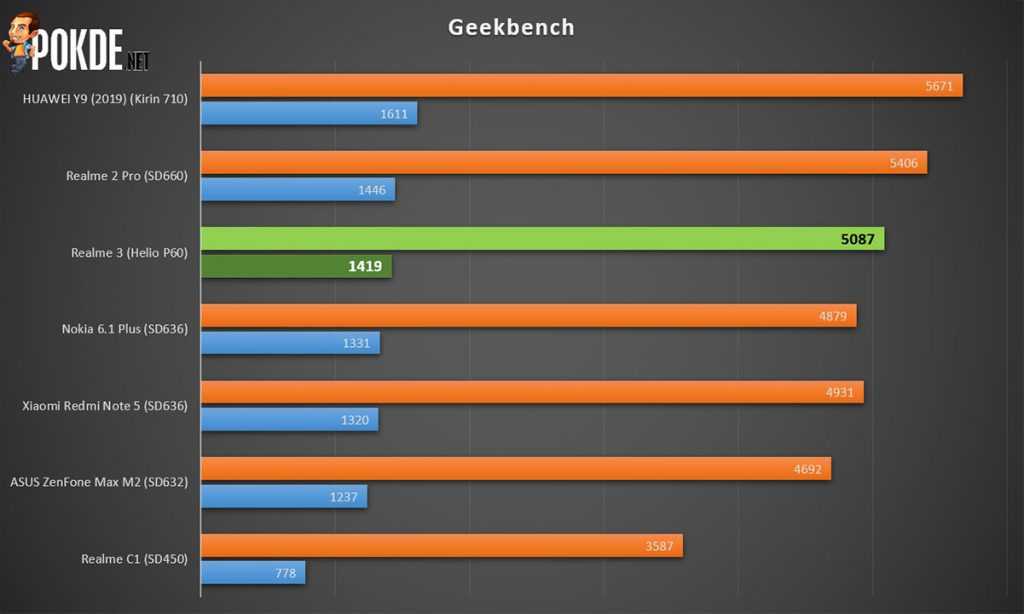 4 times better floating point performance
4 times better floating point performance - 2.1 times higher memory bandwidth (29.8 vs. 13.9 Gbps) 9 – 408K vs 209K
- Smaller transistor size (10 vs 14nm)
- 27% higher CPU frequency (2800 vs 2200MHz)
- Newer — released 7 months later
- Best instruction set architecture
Benefits of Qualcomm Snapdragon 660
- Higher GPU frequency (by 20%)
Benchmark tests
Test results in Geekbench, AnTuTu and other benchmarks
Chip:
Snapdragon 845
vs
Snapdragon 660
AnTuTu 9
AnTuTu Benchmark measures the speed of CPU, GPU, memory and other system components
Snapdragon 845
+95%
408507
Snapdragon 660
209331
| CPU | 102046 | 72014 |
| GPU | 154472 | 35497 |
| Memory | 63407 | 41094 |
| UX | 87601 | 59683 |
| Total score | 408507 | 209331 |
▶️ Add your AnTuTu test result
GeekBench 5
GeekBench shows single-threaded and multi-threaded CPU performance
Single-Core Score
Snapdragon 845
+51%
509
Snapdragon 660
337
Multi-Core Score
Snapdragon 845
+67%
2216
Snapdragon 660
1327
| Image compression | 128.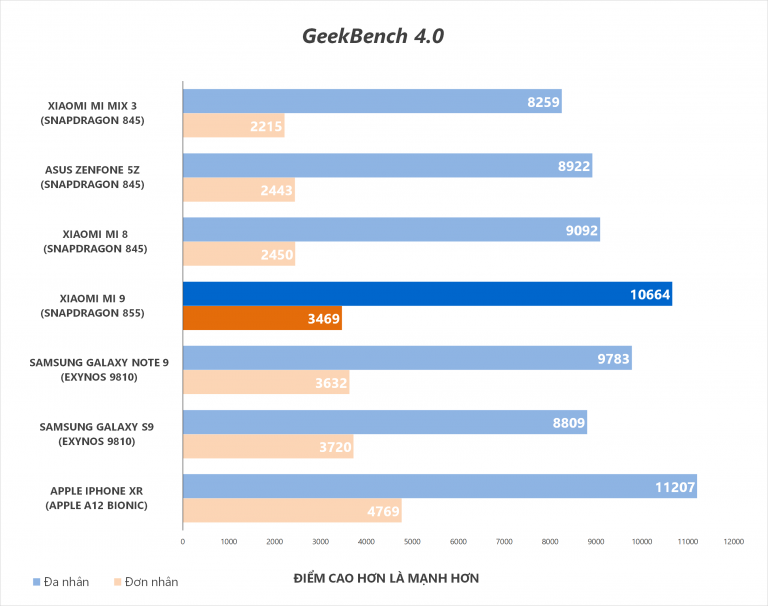 5 Mpixels/s 5 Mpixels/s |
88.7 Mpixels/s |
| Face detection | 20.4 images/s | 12 images/s |
| Speech recognition | 37.8 words/s | 24.1 words/s |
| Machine learning | 35.8 images/s | 18.3 images/s |
| Camera shooting | 19.4 images/s | 11 images/s |
| HTML 5 | 2.62 Mnodes/s | 1.76 Mnodes/s |
| SQLite | 686.3 Krows/s | 487.4 Krows/s |
3DMark
Cross-platform benchmark that evaluates graphics performance in Vulkan (Metal).
3DMark Wild Life Performance
Snapdragon 845
+284%
1436
Snapdragon 660
374
| Stability | 80% | 96% |
| Graphics test | 8 FPS | 2 FPS |
| Score | 1436 | 374 |
Games
Average FPS and graphics settings in mobile games
| PUBG Mobile | 53 FPS [Ultra] |
— |
| Call of Duty: Mobile | 55 FPS [High] |
— |
| Fortnite | 28 FPS [Ultra] |
— |
| Shadowgun Legends | 48 FPS [High] |
— |
| World of Tanks Blitz | 60 FPS [Ultra] |
— |
| Mobile Legends: Bang Bang | 56 FPS [Ultra] |
— |
| Smartphone | Xiaomi Pocophone F1 1080 x 2246 |
— |
FPS may vary by game version, operating system and other variables.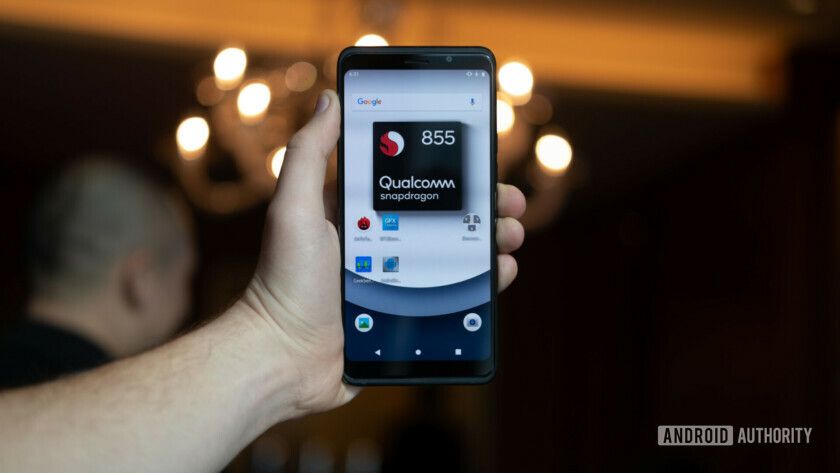
Specifications
Snapdragon 845 vs Snapdragon 660 performance comparison chart
CPU
| Architecture | 4x 2.8 GHz — Kryo 385 Gold (Cortex-A75) 4x 1.5 GHz — Kryo 385 Silver (Cortex-A55) |
4x 2.2 GHz — Kryo 260 Gold (Cortex-A73) 4x 1.84 GHz — Kryo 260 Silver (Cortex-A53) |
| Number of cores | 8 | 8 |
| Frequency | 2800 MHz | 2200 MHz |
| Instruction set | ARMv8.2-A | ARMv8-A |
| L1 cache | 256 KB | — |
| L2 cache | 1.5 MB | 2 MB |
| L3 cache | 2 MB | — |
| Process | 10 nm | 14 nm |
| Number of transistors | 3 billion | 1.75 billion |
| TDP | 9W | 9W |
GPU
| GPU | Adreno 630 | Adreno 512 |
| Architecture | Adreno 600 | Adreno 500 |
| GPU frequency | 710 MHz | 850 MHz |
| Computer units | 2 | 1 |
| Shader units | 256 | 128 |
| FLOPS | 727 Gflops | 217 Gflops |
| Vulcan version | 1.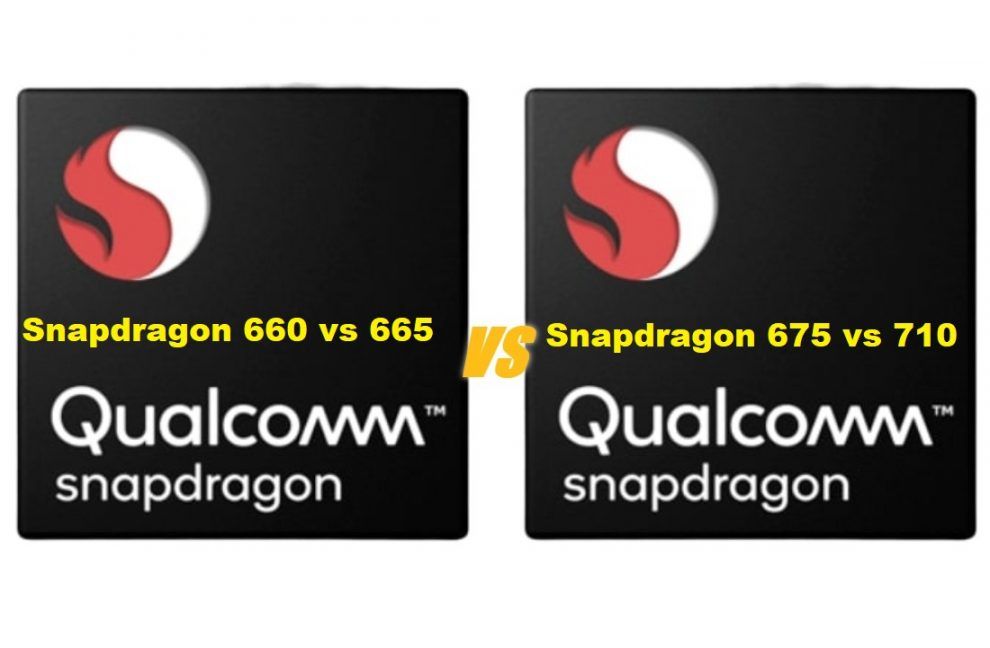 0 0 |
1.1 |
| OpenCL Version | 2.0 | 2.0 |
| DirectX Version | 12 | 12 |
RAM
| Memory type | LPDDR4X | LPDDR4X |
| Memory frequency | 1866 MHz | 1866 MHz |
| Tire | 2x 32 Bit | 2x 16 Bit |
| Capacity | Up to 29.8 Gbps | Up to 13.9 Gbps |
| Volume | Up to 8 GB | Up to 8 GB |
Multimedia (ISP)
| Neural processor | Hexagon 685 | Hexagon 680 |
| Accumulator type | UFS 2.1 | eMMC 5.1, UFS 2.1 |
| Max. display resolution | 3840 x 2160 | 2560×1600 |
| Max. camera resolution | 1x 32MP, 2x 16MP | 1x 48MP, 2x 16MP |
| Video recording | 4K @ 60FPS | 4K @ 30FPS |
| Video playback | 4K @ 120FPS | 4K @ 30FPS |
| Codec support | H. 264, H.265, VP9 264, H.265, VP9 |
H.264, H.265, VP8, VP9 |
| Audio | AAC, AIFF, CAF, MP3, MP4, WAV | AAC LC, MP3, HE-AACv1, HE-AACv2, FLAC |
Communications and networks
| Modem | X20 LTE | X12 |
| 4G support | LTE Cat. 18 | LTE Cat. 12 |
| 5G support | No | No |
| Download speed | Up to 1200 Mbps | Up to 600 Mbps |
| Download speed | Up to 150 Mbps | Up to 150 Mbps |
| WiFi | 5 | 5 |
| Bluetooth | 5.0 | 5.0 |
| Navigation | GPS, GLONASS, Beidou, Galileo, QZSS, SBAS | GPS, GLONASS, Beidou, Galileo, QZSS, SBAS, NAVIC |
General information
| Announcement date | December 2017 | May 2017 |
| Grade | Flagship | Middle class |
| Model number | SDM845 | SM6115 |
| Official website | Qualcomm Snapdragon 845 website | Qualcomm Snapdragon 660 website |
Poll
Smartphone on which of the chips would you prefer?
Snapdragon 845
121 (89%)
Snapdragon 660
15 (11%)
Total votes: 136
Competitive comparisons
1.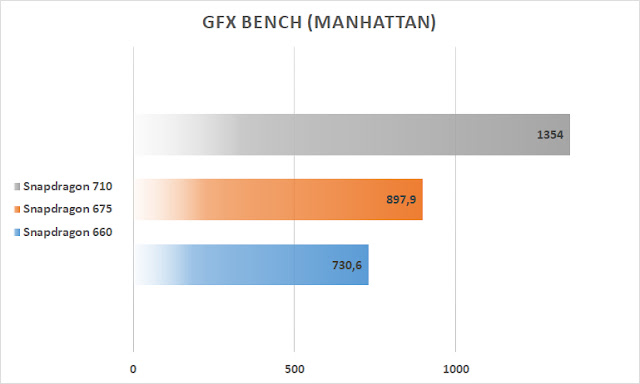
Snapdragon 778G or Snapdragon 845
2.
Snapdragon 750G or Snapdragon 845
3.
Google Tensor or Snapdragon 845
4.
Exynos 1280 or Snapdragon 845
5.
Snapdragon 480 or Snapdragon 660
6.
Exynos 850 or Snapdragon 660
▶️ Compare other SoCs
Qualcomm Snapdragon 660 vs Qualcomm Snapdragon 845: What is the difference?
vs 4 x 2.2GHz & 4 x 1.84GHz
10nm vs 14nm
710MHz vs 650MHz
1200MBits/s vs 600MBits/s
29.9GB/s vs 14.9GB/s
4 vs 2
710MHz vs 600MHz
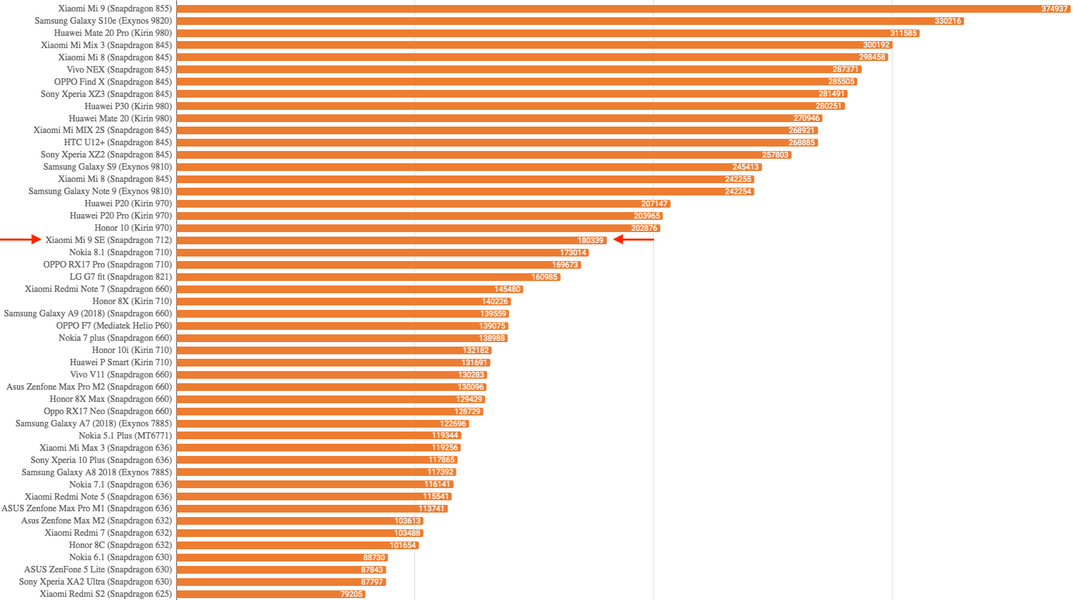 6 newer eMMC version?
6 newer eMMC version? 5.1 vs 4.5
Which comparisons are the most popular?
Qualcomm Snapdragon 660
vs
MediaTek Helio P35
Qualcomm Snapdragon 845
vs
MediaTek Helio G90T
Qualcomm 60 030002 vs
MediaTek Helio P60
Qualcomm Snapdragon 845
vs
MediaTek Dimensity 8100
Qualcomm Snapdragon 660
vs
MediaTek Helio G25
Qualcomm Snapdragon 845
vs
Mediatek Helio G95
Qualcomm Snapdragon 660
vs
HiSilicon Kirin 710
Qualcomm Snapdragon 845
vs
Qualcomm Snapdragon 778G 5G
Qualcomm Snapdragon 660
vs
Qualcomm Snapdragon 665
Qualcomm Snapdragon 845
vs
Samsung Exynos 9810
Qualcomm Snapdragon 660
vs
MediaTek Helio G37
Qualcomm Snapdragon 845
vs
Unisoc T606
Qualcomm Snapdragon 660
vs
Samsung Exynos 7885
Qualcomm Snapdragon 845
vs
MediaTek Dimensity 810
Qualcomm Snapdragon 660
vs
Qualcomm Snapdragon 460
Qualcomm Snapdragon 845
vs
Huawei Kirin 980
Qualcomm Snapdragon 660
vs
Samsung Exynos 7904
Qualcomm Snapdragon 845
vs
MediaTek Dimensity 1200
Qualcomm Snapdragon 660
vs
MediaTek Helio G80
Qualcomm Snapdragon 845
vs
Qualcomm Snapdragon 732G
Price Comparison
5 Votes
9. 5 /10
5 /10
Votes
performance
9.2 /10
5 Votes
9.5 /10
Votes 9000
4 x 2.2GHz & 4 x 1.84GHz
4 x 2.8GHz & 4 x 1.77GHz
CPU speed indicates how many processing cycles per second a processor can perform, given all its cores (processors). It is calculated by adding the clock speeds of each core or, in the case of multi-core processors, each group of cores.
2nd processor thread
More threads result in better performance and better multitasking.
3. Uses big.LITTLE technology
✔Qualcomm Snapdragon 660
✔Qualcomm Snapdragon 845
Using big.LITTLE technology, the chip can switch between two sets of processors to ensure maximum performance and battery life. For example, while gaming, a more powerful processor will be used to improve performance, while checking email will use a less powerful processor to extend battery life.
4. Uses HMP
✔Qualcomm Snapdragon 660
✔Qualcomm Snapdragon 845
HMP is a more advanced version of big.LITTLE technology. In this configuration, the processor can use all cores at the same time, or only one core for low-intensity tasks. This can provide high performance and longer battery life respectively.
5. turbo clock speed
Unknown. Help us offer a price. (Qualcomm Snapdragon 660)
Unknown. Help us offer a price. (Qualcomm Snapdragon 845)
When the processor is running below its limits, it can jump to a higher clock speed to increase performance.
6.L2 cache
Unknown. Help us offer a price. (Qualcomm Snapdragon 660)
More L2 flash memory results in faster results in CPU and system performance tuning.
7.L1 cache
Unknown. Help us offer a price. (Qualcomm Snapdragon 660)
More L1 flash memory results in faster results in CPU and system performance tuning.
8.hour multiplier
Unknown. Help us offer a price. (Qualcomm Snapdragon 660)
Unknown. Help us offer a price. (Qualcomm Snapdragon 845)
The hour multiplier controls the processor speed.
9.L3 cache
Unknown. Help us offer a price. (Qualcomm Snapdragon 660)
More L3 flash memory results in faster results in CPU and system performance tuning.
Memory
1.RAM speed
1866MHz
1866MHz
Can support faster memory which speeds up system performance.
DDR 9 version 20003
Unknown. Help us offer a price. (Qualcomm Snapdragon 660)
DDR (Double Data Rate Synchronous Dynamic Random Access Memory) is the most common type of RAM. New versions of DDR memory support higher maximum speeds and are more energy efficient.
3.maximum memory capacity
Maximum memory capacity (RAM).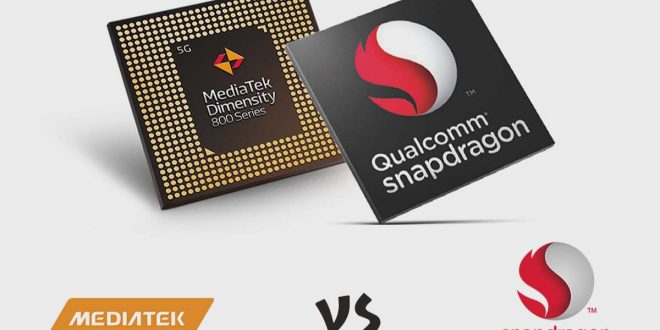
4.Max memory bandwidth
14.9GB/s
29.9GB/s
This is the maximum rate at which data can be read from or stored in memory.
5.memory channels
More memory channels increase the speed of data transfer between memory and processor.
6. eMMC version
Newer version of eMMC — built-in flash memory card — speeds up the memory interface, has a positive effect on device performance, for example, when transferring files from a computer to internal memory via USB.
7. Supports memory troubleshooting code
✖Qualcomm Snapdragon 660
✖Qualcomm Snapdragon 845
Memory troubleshooting code can detect and fix data corruption. It is used when necessary to avoid distortion, such as in scientific computing or when starting a server.
Features
1. Has built-in LTE
Has built-in LTE
✔Qualcomm Snapdragon 660
✔Qualcomm Snapdragon 845
System on a Chip (SoC) has a built-in LTE cellular chip. LTE can download at higher speeds than older 3G technologies.
2.download speed
600MBits/s
1200MBits/s
Upload speed is a measurement of internet connection bandwidth that represents the maximum data transfer rate at which a device can access online content.
3.download speed
150MBits/s
150MBits/s
Upload speed is a measure of the bandwidth of an Internet connection, representing the maximum data transfer rate at which a device can send information to a server or other device.
4. TrustZone enabled
✔Qualcomm Snapdragon 660 (ARM Cortex-A53)
✔Qualcomm Snapdragon 845 (Qualcomm Kryo)
using Digital Rights Management (DRM) technology.
5. uses multithreading
uses multithreading
✖Qualcomm Snapdragon 660
✖Qualcomm Snapdragon 845
also known as threads. Thus, each core can run two instruction streams at the same time.
6. Has NX bit
✔Qualcomm Snapdragon 660 (ARM Cortex-A53)
✔Qualcomm Snapdragon 845 (Qualcomm Kryo)
NX bit helps protect your computer from virus attacks.
7 bits transmitted at the same time
128 (ARM Cortex-A53)
128 (Qualcomm Kryo)
NEON provides faster processing of multimedia data such as MP3 listening.
8.Has AES
✔Qualcomm Snapdragon 660 (ARM Cortex-A53)
✔Qualcomm Snapdragon 845 (Qualcomm Kryo)
AES is used to speed up encryption and decryption.
9.VFP version
4 (ARM Cortex-A53)
4 (Qualcomm Kryo)
The floating point vector (VFP) is used by the processor to provide enhanced performance in areas such as digital imaging.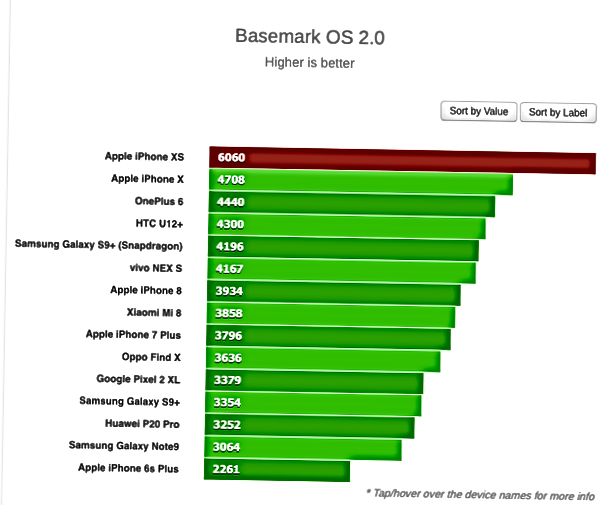
Geotagging
1.Geekbench 5 result (single core)
Unknown. Help us offer a price. (Qualcomm Snapdragon 660)
Geekbench 5 is a cross-platform benchmark that measures the single-core performance of a processor. (Source: Primate Labs, 2022)
2.Geekbench 5 result (multi-core)
Unknown. Help us offer a price. (Qualcomm Snapdragon 660)
Geekbench 5 is a cross-platform benchmark that measures the performance of a multi-core processor. (Source: Primate Labs, 2022)
3. PassMark result
Unknown. Help us offer a price. (Qualcomm Snapdragon 660)
Unknown. Help us offer a price. (Qualcomm Snapdragon 845)
This benchmark measures CPU performance using multithreading.
4. PassMark result (single)
Unknown. Help us offer a price. (Qualcomm Snapdragon 660)
Unknown. Help us offer a price.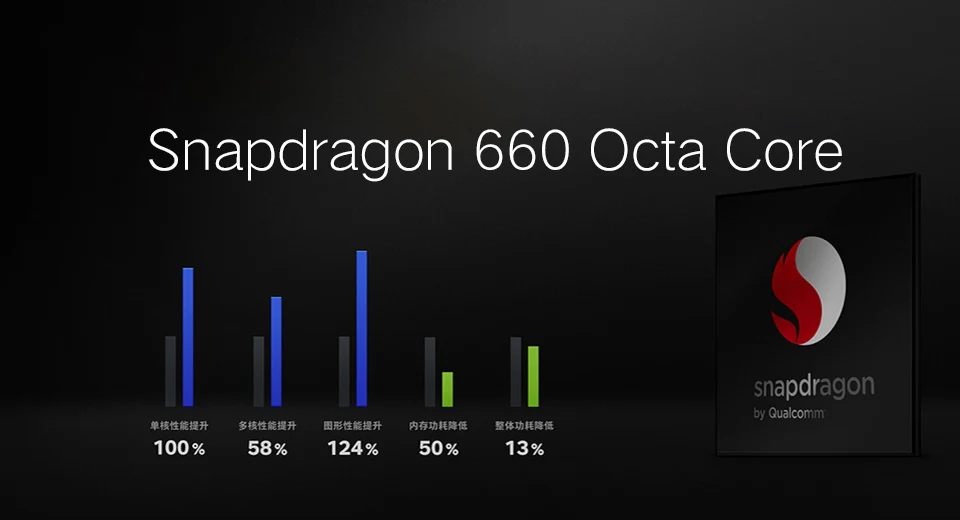 (Qualcomm Snapdragon 845)
(Qualcomm Snapdragon 845)
This benchmark measures processor performance using a thread of execution.
5. PassMark result (overclocked)
Unknown. Help us offer a price. (Qualcomm Snapdragon 660)
Unknown. Help us offer a price. (Qualcomm Snapdragon 845)
This test measures the performance of the processor while it is overclocked.
Other
Bluetooth 1st version
Unknown. Help us offer a price.
Bluetooth is a wireless technology standard that allows you to transfer data between devices in close proximity using shortwave radio waves. Newer versions provide faster data transfer.
Price comparison
Cancel
Which mobile chipsets are better?
Samsung exynos 7904 vs Snapdragon 636: which processor is better
When it comes to powering Android smartphones, Qualcomm’s Snapdragon processor lineup is the default choice for most phone manufacturers.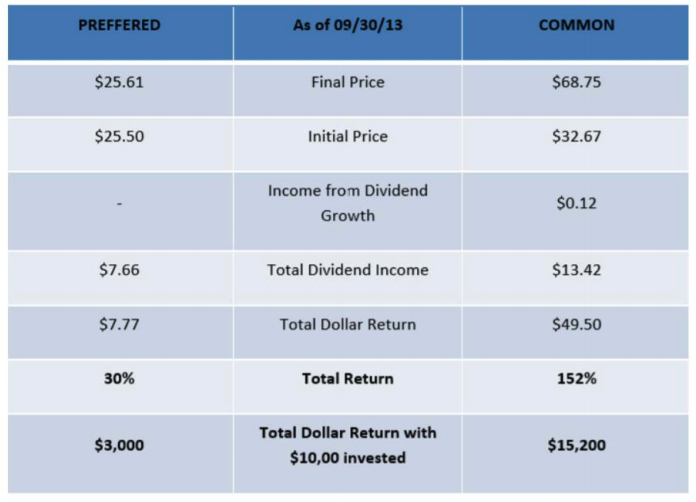 Apart from Huawei (Kirin SoCs) and sometimes Samsung (Exynos), most mid-range and flagship Android devices have Snapdragon chips.
Apart from Huawei (Kirin SoCs) and sometimes Samsung (Exynos), most mid-range and flagship Android devices have Snapdragon chips.
Last week, in a bid to take back India, Samsung announced the Galaxy M20 based on what the company claims is India’s most advanced mid-range mobile chipset, the Exynos 7904. We weren’t sure how it would fare with the Snapdragon 600 series. and, most importantly, expensive for many mid-rangers, Snapdragon 636.
Both chipsets are based on 14nm process technology, but with different microarchitecture, task processing and camera capabilities. Let’s dive into the comparison.
Note: comparison of both chipsets based on specs is our prima facie approach, while actual performance is a completely different scenario and highly subjective. Besides the capabilities of the chipset, other factors such as software optimizations, UI changes, and hardware also affect day-to-day usage.
Specifications that matter
| Chipset | Exynos 7904 | Snapdragon 636 |
|---|---|---|
| Chipset | Exynos 7904 | |
| Manufacturing process | 14nm | 14nm |
| Architecture | 64-bit | 64-bit |
| CPU | 2 x ARM Cortex-A73, 6 x ARM Cortex-A53 | 8 cores Kryo 260 based semi-custom ARM Cortex-A53 |
| GPU | Mali-G71 MP2 | Adreno 509 |
| Memory / Drives | LPDDR4X, eMMC 5.1 | LPDDR4X, UFS 2.0 |
| camera | to 32MP lens | up to 24MP single lens |
| video | 4K@30fps, FHD@120fps | 4K@30fps, FHD@120fps |
| Charging | Adaptive Fast Charging | Quick Charge 4.0 |
| Modem | Upload 600 Mbps, Upload 150 Mbps | Upload 600 Mbps, Upload 150 Mbps |
Processor performance
Both Exynos 7904 and Snapdragon 636 are 64-bit octa-core processors manufactured using a 14nm process node.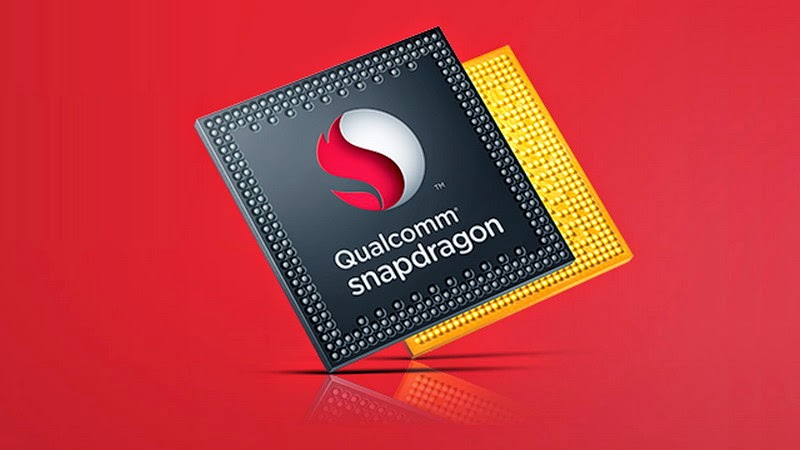 And that’s where their similarities end.
And that’s where their similarities end.
The Exynos 7904 octa-core processing cluster uses two high-performance ARM Cortex-A73 cores clocked at 1.8 GHz for heavy duty intensive tasks. While six high-performance ARM Cortex-A53 cores clocked at 1.6GHz are designed for less demanding tasks.
On the other hand, the Snapdragon 636 octa-core setup includes eight Kryo 260 cores based on semi-custom high-performance ARM Cortex-A53 cores clocked at 1.8GHz — faster than the Exynos 7904.
Purely in terms of octa-core setup, the Snapdragon 636 seems to have the upper hand in the CPU department. However, the Exynos 7904 should perform better on battery with six high-performance cores and only two dedicated cores for heavy tasks.
Also on
Comparison of Qualcomm Snapdragon 636 and 660: how different are they?
GPU Performance
The Snapdragon 636 SoC integrates a 14nm Adreno 509 GPU clocked at around 720MHz. This GPU has proven itself by delivering excellent gaming performance in mid-range Android smartphones in 2018.
This GPU has proven itself by delivering excellent gaming performance in mid-range Android smartphones in 2018.
Mali-G71 MP2 Exynos 7904 was introduced back in 2016 and built on 16nm architecture. Clock speeds hover around 770MHz and should provide competitive gaming performance. However, the real difference will only be noticeable when you play demanding 3D games on your phone.
RAM and storage support
The Snapdragon 636 receives a cookie when it comes to memory support. Both chipsets support LPDDR4X RAM. However, when it comes to storage, Exynos is limited to eMMC type and Snapdragon 636 has UFS (Universal Flash Storage) support. This is because UFS provides better read and write speeds than eMMC type storage.
However, the lack of UFS storage means we won’t see Exynos 7904 in the Galaxy A series (middle premium segment). EMMC may not provide pleasant performance at slow read/write speeds and may result in a slightly sluggish experience down the road.
Note . We have yet to see a working Snapdragon 636 phone with UFS storage.
Landmarks
| name | Exynos 7904 | Snapdragon 636 |
|---|---|---|
| Chipset | Exynos 7904 | |
| Antutu Total score | 108290 | 115095 |
| Antutu CPU score | 47076 | 56169 |
| Antutu GPU Score | 21088 | 20865 |
| Geekbench (single core) | 1319 | 1342 |
| Geekbench (multi-core) | 4119 | 4914 |
| 3DMark (Sling Shot Extreme — OpenGL) | 580 | 930 |
| 3DMark (Sling Shot Extreme — Volcano) | 1097 | 756 |
Also on
#snapdragon
Click here to see our Snapdragon articles page
Display support
Exynos 7904 supports FHD+ display panel up to 2400 x 1080 resolution and 20:9 aspect ratio. It can play Full HD video at 120 fps (frames per second) and Ultra HD video at 30 fps. The
It can play Full HD video at 120 fps (frames per second) and Ultra HD video at 30 fps. The
Snapdragon 636 supports Full HD+ displays with 2160 x 1080 resolution and 18:9 aspect ratio. Even this chipset can play up to 4K Ultra HD videos.
Camera and AI
Looking at the specification, Samsung put a lot of emphasis on the camera department. The Exynos 7904 supports resolutions up to 32MP in single lens, 16MP + 16MP dual lens, and even in triple lens setup with telephoto and wide angle. The chip can handle a 32MP selfie shooter on the front.
Snapdragon 636 can contain up to 24MP single lens or 16MP + 16MP dual lens.
Video recording capabilities on both chipsets remain the same: 4K at 30fps and FHD at 120fps.
Samsung does not advertise any AI capabilities in the Exynos 7904, while the Snapdragon 636 includes the Qualcomm Neural Processing Engine (NPE) SDK to support quite a few AI-centric features. It works with many popular AI frameworks such as Caffe/Caffe2 and Google TensorFlow.
Charging technology
The Snapdragon 636 supports Quick Charge 4.0, the latest charging technology currently available. The company says it provides five hours of battery life with a five-minute charge.
The Exynos 7904 supports Samsung’s adaptive fast charging based on the legacy Quick Charge 2.0 standard.
Although several companies have released phones with the Snapdragon 636 chip, none of them are equipped with a Quick Charge 4.0 adapter. These companies mainly provide a certified Quick Charge 3.0 adapter in retail packaging. You can always buy a certified Quick Charge 4.0 adapter separately and take full advantage of faster charging speeds.
Also on
Apple A12 Bionic vs Snapdragon 845: what are the differences?
So similar, but Poles apart
It’s complicated. Both chipsets look the same on paper, but the devil is in the details. The Snapdragon 636 has the upper hand in the CPU, storage and charging department. The Exynos 7904 strikes back with a 32MP single lens, triple camera support and power efficiency.
The Exynos 7904 strikes back with a 32MP single lens, triple camera support and power efficiency.
One can foresee Samsung’s intentions to play with the camera more than anything else. However, it is worth noting how Samsung plans to use the Exynos chip. So far, this applies to Samsung Galaxy M.9 series phones0003
Next: The MediaTek Helio P60 processor is also a powerful mid-range processor. Read our comparison to see how the Qualcomm Snapdragon 636 processor fares.
Qualcomm Snapdragon 670 VS Snapdragon 710 — what’s the difference?
The Qualcomm Snapdragon 660 released last year was a very powerful SoC that brought many of the flagship features of the 800 series to intercoms. The chip hasn’t seen much use for most of this year, but is now available in a few decent midrange options.
More recently, Qualcomm also introduced its next level Snapdragon 700, which was designed to be a brand that provides better fairness to «sub-premium» phones than the 600 series. 710. However, given the current market situation, both of these chipsets will end up competing in almost the same budget.
710. However, given the current market situation, both of these chipsets will end up competing in almost the same budget.
Let’s compare them to see how they differ.
We have updated the list of Snapdragon 670 mobile platform phones below:
1.7GHz Kryo 360 (Cortex-A55 based) x 6
1.7GHz Kryo 360 (Cortex-A55 based) x 6
14.9 GB/s
14.9 GB/s
Download speed: 600 Mbps
25 MP single / 16 MP double
32 MP single / 20 MP double
H. 264 and H.265
264 and H.265
H.264 and H.265
10-bit display pipeline for HDR recording
Snapdragon 670 VS Snapdragon 710: 6 Differences
As you can see, both of these chipsets are based on a power efficient 10nm process node (same as Snapdragon 845) and have a lot in common, including the same basic core configuration (2 + 6, probably the DynamIQ architecture).
In fact, both the Snapdragon 660 and Snapdragon 710 are pin and software compatible, meaning that OEMs can choose or switch between the two with little effort.
They still have some notable differences.
- To maximum clock speed Kryo 360 (Cortex-A75 based) core performance is slightly slower than SD 670. Since the power cores are clocked the same (1.7 GHz) for both sets of circuits, there shouldn’t be a noticeable difference in real performance.
- These are the only two mid-sized mobile platforms to run the Adreno 600 series.
 GPUs. The GPU on the SD 670 is outnumbered by the Adreno 616 on the SD 710. What’s the difference? According to Qualcomm, the Snapdragon 710 offers a 35% improvement in graphics performance over the 660, and the Snapdragon 670 delivers a 25% performance improvement over the Snapdragon 660.
GPUs. The GPU on the SD 670 is outnumbered by the Adreno 616 on the SD 710. What’s the difference? According to Qualcomm, the Snapdragon 710 offers a 35% improvement in graphics performance over the 660, and the Snapdragon 670 delivers a 25% performance improvement over the Snapdragon 660. - Then Display control on Snapdragon 670 can only run FHD+ resolution, while Snapdragon 710 can support screens up to QHD+.
- Unlike the Snapdragon 670, the Snapdragon 710 has a 10-bit display and supports HDR recording.
- The DSP and provider is the same on both the Snapdragon 670 and Snapdragon 710, but they run at a lower clock speed compared to the previous one, which supports a lower maximum camera resolution.
- Then used modem on two SoCs are different. The Snapdragon 670 supports download speeds up to 600 Mbps, which is slower than the 800 Mbps on the Snapdragon 710.

List of phones with Snapdragon 670:
Despite all these differences, both these mobile platforms are surprisingly close in terms of positioning and function settings. Qualcomm could probably label the SD 670 as a 700-series chip as well.
However, OEMs may choose to support Snapdragon 710 as an added brand benefit. If this happens, the SD 670 could be hooked, as it was with the SD 660 early in its life cycle.
Here is a list of Snapdragon 670 phones.
Oppo R17
Just a week after the Snapdragon 670 was officially announced, Oppo announced a phone that uses its services.
The Oppo R17, which also has a waterdrop slot, has an SD 670 paired with 8GB of RAM and 128GB of internal storage. The phone also has an in-display fingerprint sensor, a 16MP rear camera, and a 25MP selfie camera. A 3500mAh battery with VOOC fast charging powers all the equipment.
2. Vivo X23
The Vivo X23 is similar to the Snapdragon 660 based V11 Pro that Vivo released in India. The phone has the same dual rear cameras (12MP + 5MP), is powered by a Snapdragon 670 octa-core processor, and has a 12MP bottom selfie sensor on the front.
The phone has the same dual rear cameras (12MP + 5MP), is powered by a Snapdragon 670 octa-core processor, and has a 12MP bottom selfie sensor on the front.
The Vivo X23 comes with 8GB of RAM and 128GB of internal storage. Other features include an in-screen fingerprint sensor, IR face lock, a 3400mAh battery, and dual 4G VoLTE.
3. Vivo Z3 V1813BA
Vivo may confuse people with their naming conventions, but they are quite clear that they will use competent chipsets in the future. This year, Vivo was one of the first OEMs to launch the new Snapdragon 600 and 700 series chipsets.
The Vivo Z3 V1813BA is the second Snapdragon 670 platform phone. The SoC is supported by 4GB of RAM and connects to 64GB of internal storage. Vivo ships it with a 6.3-inch Full HD + IPS screen, 12MP selfie camera and 16MP + 2MP rear camera.
And that’s it. We will add more SD 670 phones to the list when they become available.
Xiaomi Mi Pad 4: the first confirmations appear on the technical sheet
Although it was up in the air, it was of course a surprise the publication of the first posters dedicated to Redmi 6 Pro and — above all — al We Xiaomi Pad 4 , New The company’s tablet has been waiting for some time now, and Mi fans will surely be excited about the idea of getting this new product. Xiaomi 0815 , At the same time, the first confirmations regarding the data sheet of the device arrive.
Xiaomi 0815 , At the same time, the first confirmations regarding the data sheet of the device arrive.
Xiaomi Mi 4 Pad coming soon with Snapdragon 660 | badass
Lo We Xiaomi Pad 4 next will officially debut in China 25 June . They separate us in a few days from the launch, but of course we breathe a certain enthusiasm around this tablet. According to yesterday’s posterity, which may have shown us part of the design, the device will arrive with a display of 8 Full HD Thumbs .
The new teaser published today on the web page of the Weibo brand continues to provide us with information about tab Tecnica . Apparently, under the body we will find the processor Snapdragon 660 , therefore with an Adreno 512 GPU ; it is a solution of octa-core to 2.2 GHz , which is often used in mobile devices and is evaluated for its relationship between performance and consumption. A big step forward from the previous generation!
A big step forward from the previous generation!
In addition, some optimizations related to the game are expected, probably due to the presence of software Game Boost optimized for the best.
Xiaomi Mi Pad 4: here are the rumors so far
As for the rumors that have appeared to date, it seems that the tablet can rely on a colossal battery from 6000 mAh with charging from 5V2A. At the software level, we expect MIUI 10 based on Android 8.1 Oreo , while the main camera (also seen in yesterday’s teaser) should be mega-pixels .
Xiaomi Mi A1 Smartphone from 5.5 inches Full HD, Snapdragon 625 2 GHz, 4GB RAM, 64 GB ROM, Dual …
Xiaomi Mi A1 Smartphone from 5.5 inches Full HD, Snapdragon 625 2 GHz, 4GB RAM, 64 GB ROM, Dual … €
as of 30 09:2022
Xiaomi Mi8 Mi 8 Explorer Edition 6.21 inch 8GB RAM 128GB ROM Snapdragon 845 Octa Core 4G Smartphone
Xiaomi Mi8 Mi 8 Explorer Edition 6.21 inch 8GB RAM 128GB ROM Snapdragon 845 Octa Core 4G Smartphone
not available
Buy now
Banggood.com
Xiaomi Mi8 Mi 8 6.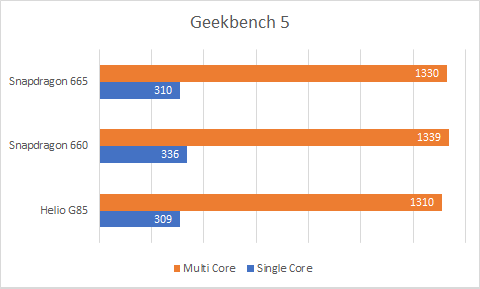 21 inch 6GB RAM 64GB ROM Snapdragon 845 Octa core 4G Smartphone
21 inch 6GB RAM 64GB ROM Snapdragon 845 Octa core 4G Smartphone
Xiaomi Mi8 Mi 8 6.21 inch 6GB RAM 64GB ROM Snapdragon 845 Octa core 4G Smartphone
440.84€
affordable
Buy now
banggood.com
Xiaomi Mi MIX 2 Special Edition 5.99 inch 8GB RAM 128GB ROM Snapdragon 835 Octa core 4G Smartphone
Xiaomi Mi MIX 2 Special Edition 5.99 inch 8GB RAM 128GB ROM Snapdragon 835 Octa core 4G Smartphone
Unavailable
Buy now
Banggood.com
Discuss with us the article and about this Xiaomi in 9 groups1351 Telegram e Facebook Dedicated!
Don’t miss any news, offers or reviews published on our website!
Follow us on social media to stay updated in real time thanks to:
Suggestion channel, News channel, Telegram group, Facebook page, YouTube channel and Forum.
Qualcomm Snapdragon Processor Manual: Features and Functions Comparison
Snapdragon 800 series — Premium
Snapdragon 700 series — Bridging the gap
Notable Phones Snapdragon 710, 712, 720G, 730/G, 765/G, 768G
Snapdragon 600 series — Value for money
Snapdragon 400 series — entry level
Qualcomm Snapdragon processors are the most common SoCs in the world of Android smartphones. Samsung uses Snapdragon for its Galaxy S line in the US and Korea, and supports devices from LG, OnePlus, and pretty much every flagship phone OEM that doesn’t make their own silicon chips either. There is a very good chance that you are currently reading this on a device with a Qualcomm Snapdragon processor.
However, Snapdragon chips can be found not only in expensive flagship smartphones. There is a whole portfolio of processors for phones of different price categories. The performance and features vary quite a bit between these models, so let’s take a look at how the company’s latest SoCs compare and what features you should expect.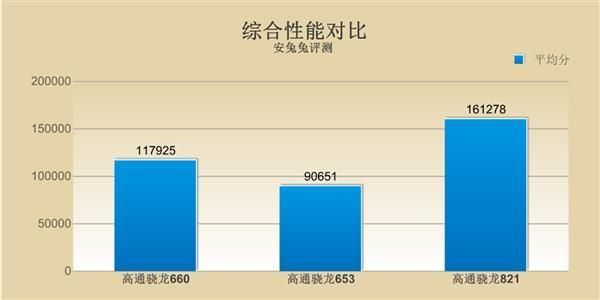
Snapdragon 800 series Premium
Looking for the best processor for Qualcomm smartphones? Then you need the Snapdragon 865 and Snapdragon 865 Plus, the company’s latest and most powerful chipsets.
The standard Snapdragon 865 is equipped with a tri-cluster semi-custom processor that includes one powerful Cortex-A77 core at 2.84 GHz, three less powerful but still very powerful Cortex-A77 cores at 2.4 GHz, and four low-power but efficient Cortex-A55 cores. Qualcomm Adreno graphics hardware also tends to lead the industry in terms of sheer power and features, and the Adreno 650 865 continues this trend.
Meanwhile, the Snapdragon 865 Plus differs from the vanilla chipset in that it offers a 3.1GHz Prime CPU core while the other seven CPU cores remain unchanged. The Plus variant also has a 10% increase in graphics rendering, presumably due to the increase in clock speed. The 865 Plus also supports Wi-Fi 6E and Bluetooth 5.2, as opposed to Wi-Fi 6 and Bluetooth 5.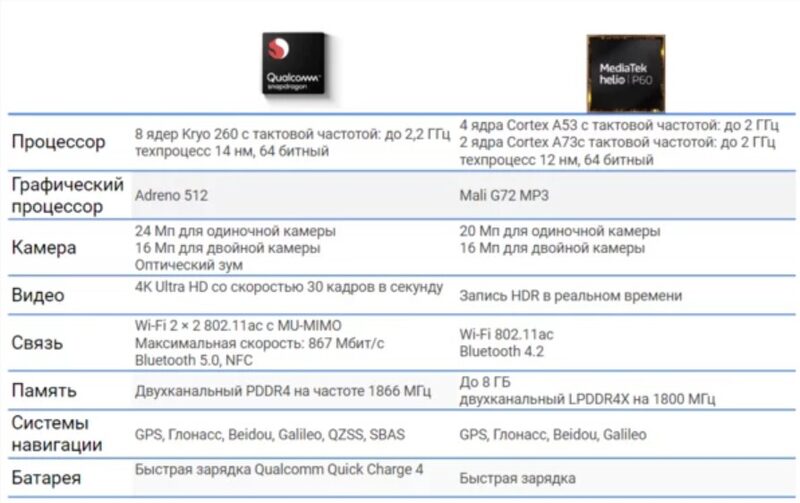 1 on vanilla silicon.
1 on vanilla silicon.
| Snapdragon 865 Plus | Snapdragon 865 | Snapdragon 855 plus | Snapdragon 855 | |
|---|---|---|---|---|
| CPU | 1x 3.1 GHz Kryo 585 (Cortex A77) |
3x 2.4GHz Kryo 585 (Cortex A77)
4x 1.8GHz Kryo 585 (Cortex-A55) | 1x 2.84 GHz Kryo 585 (Cortex A77)
3x 2.4 GHz Kryo 585 (Cortex A77)
4x 1.8 GHz Kryo 585 (Cortex-A55) | 1x 2.96 GHz Kryo 485 (Cortex A76)
3x 2.42 GHz Kryo 485 (Cortex A76)
4x 1.8 GHz Kryo 485 (Cortex-A55) | 1x 2.84 GHz Kryo 485 (Cortex A76)
3x 2.42 GHz Kryo 485 (Cortex A76)
4x 1.8 GHz Kryo 485 (Cortex-A55) |
| GPU | Adreno 650 | Adreno 650 | Adreno 640 | Adreno 640 |
| DSP | Hexagon 698 | Hexagon 698 | Hexagon 690 | Hexagon 690 |
| Modem | X55 5G and RF system
7500Mbps down
3000Mbps up | X55 5G and RF system
7500Mbps down
3000Mbps up | X24 LTE
2000 Mbps down
316 Mbps up | X24 LTE
2000Mbps down
316Mbps up |
| cameras | 200MP Single / 64MP Single Zero Lag 24MP
Dual Camera with
Hybrid AF, HDR Video, Multi Frame Noise Reduction | 200MP Single / 64MP Single Zero Lag 24MP
Dual Camera with
Hybrid AF, HDR Video, Multi Frame Noise Reduction | 48 MP single / 24 MP dual
hybrid autofocus, HDR movie, multi-frame noise reduction
192 MP still image | 48 MP single / 24 MP dual
hybrid AF, HDR video, multi-frame noise reduction
192 MP still image |
| Fast charging | 4+ | 4+ | 4+ | 4+ |
| bluetooth | 5. 2 | 5.1 | 5.1 | 5.1 |
2 | 5.1 | 5.1 | 5.1 |
| Process | 7nm FinFET | 7nm FinFET | 7nm FinFET | 7nm FinFET |
The 800 series is the flagship of Qualcomm, and before the 2018 Snapdragon 845, it used a cluster of powerful cores and a cluster of energy-saving cores. But Snapdragon 855 2019 seriesyear was the first time we saw a three-tier system of heavy/medium/light CPU cores. Qualcomm also offered highly customizable CPU cores up to the Snapdragon 821 back in 2016. But these days, she uses Arm Cortex cores and makes a few tweaks to them instead.
However, the company has invested heavily in other chips in its chipsets, such as GPUs, modems, and image signal processors for cameras. Speaking of camera technology, these are the first Qualcomm chipsets to support 8K video recording and join the Exynos 9 series.82X from Samsung and Exynos 990.
Read: Qualcomm Snapdragon 865 vs Kirin 990 vs Exynos 990 – how do they compare?
The industry’s move to on-device machine learning has also led Qualcomm to adapt with its flagship SoCs.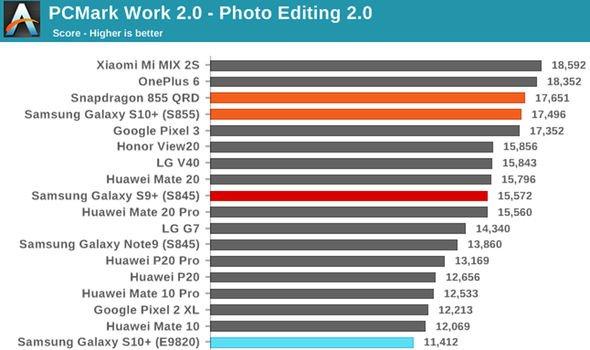 It uses the top-end Hexagon digital signal processor for these tasks, and the Snapdragon 865 Duo Hexagon 698 processor also features an upgraded «tensor» accelerator that is 35% more power efficient than the ML-focused Snapdragon 855 silicon.
It uses the top-end Hexagon digital signal processor for these tasks, and the Snapdragon 865 Duo Hexagon 698 processor also features an upgraded «tensor» accelerator that is 35% more power efficient than the ML-focused Snapdragon 855 silicon.
In simple terms, this means that machine learning tasks such as face detection, image recognition, natural language processing, and other activities should consume much less power. In fact, Qualcomm also stated that the Snapdragon 865 series can perform voice translation on the device.
The Snapdragon 865 series also supports 5G, supporting both mmWave and below 6Ghz standards. This isn’t the brand’s first flagship 5G chipset, as last year’s Snapdragon 855 series also offered next-gen connectivity. However, both the 855 series and the 865 duo offer external 5G modems, unlike some competitors. This usually means more power consumption compared to a processor with a built-in 5G modem.
Qualcomm isn’t the only company making flagship processors, with competing chipsets including the Samsung Exynos 990, Huawei HiSilicon Kirin 990, and MediaTek’s Dimensity 1000.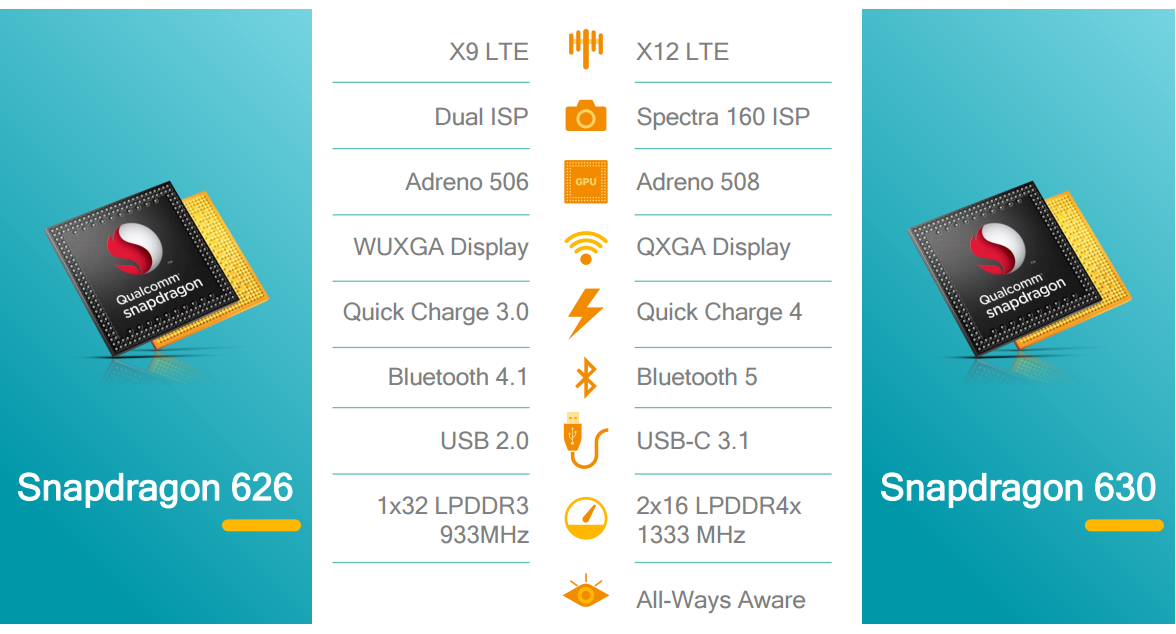 But it is generally considered the best in terms of performance and branding, although other competitors have something to offer too.
But it is generally considered the best in terms of performance and branding, although other competitors have something to offer too.
Famous phones Snapdragon 865 / Plus
- Samsung Galaxy S20 (USA, Korea)
- Phone Asus ROG 3
- Xiaomi Mi 10 Series
- LG V60
- Sony Xperia 1 II
Snapdragon 700 series — Bridging the gap
The Qualcomm Snapdragon 700 series is not as simple as its flagship 800 series.
| Snapdragon 768G | Snapdragon 720G | |||
|---|---|---|---|---|
| CPU | 1x 2.8 GHz Kryo 475 (Cortex-A76) |
1x 2.2 GHz Kryo 475 (Cortex-A76)
6x 1.8 GHz Kryo 475 (Cortex-A55) | 1x 2.3Ghz Kryo 475 (Cortex-A76)
1x 2.2Ghz Kryo 475 (Cortex-A76)
6x 1.8Ghz Kryo 475 (Cortex-A55) | 2x 2.2 GHz Kryo 360 (Cortex-A76)
6x 1. 7 GHz Kryo 360 (Cortex-A55) | 2x 2.3 GHz Kryo 465 (Cortex-A76)
7 GHz Kryo 360 (Cortex-A55) | 2x 2.3 GHz Kryo 465 (Cortex-A76)
6x 1.8 GHz Kryo 465 (Cortex-A55) |
| GPU | Adreno 620 | Adreno 620 | Adreno 618 | Adreno 618 |
| DSP | Hexagon 696 | Hexagon 696 | Hexagon 688 | Hexagon 692 |
| Modem | Snapdragon X52 5G/LTE
5G – 3700Mbps down, 1600Mbps up | Snapdragon X52 5G/LTE
5G – 3700Mbps down, 1600Mbps up | Snapdragon X15 LTE:
800Mbps down, 150Mbps up | Snapdragon X15 LTE:
800Mbps down, 150Mbps up |
| cameras | 32MP single or 22MP dual
192MP snapshot | 32MP Single or 22MP Dual
192 megapixel shot | 48 MP single or 22 MP dual
snapshot 192 MP | Snapshot 192MP |
| Fast charging | 4+ | 4+ | 4+ | 4 |
| bluetooth | 5.2 | 5.0 | 5.0 | 5.1 |
| Process | 7nm FinFET | 7nm FinFET | 8nm FinFET | 8nm FinFET |
The Snapdragon 700 series is essentially a mid-range processor family, with the Snapdragon 765 series being the most popular. This is the first midrange 5G family from Qualcomm, supporting both mmWave and sub-6GHz 5G variants.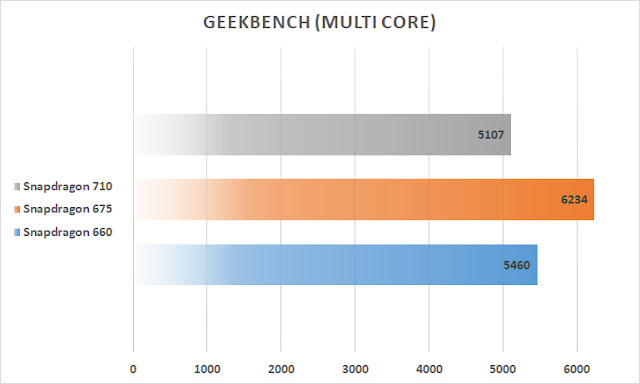 It also offers the same triple power CPU design as flagship processors, albeit in a 1+1+6 layout rather than the 1+3+4 found on flagship SoCs.
It also offers the same triple power CPU design as flagship processors, albeit in a 1+1+6 layout rather than the 1+3+4 found on flagship SoCs.
In addition to adding 5G and an improved CPU layout, the Snapdragon 765 series also stands out from other 700 series processors with its more powerful Adreno 620 GPU. The 765 family also features a tiny 7nm manufacturing process, on par with flagship chipsets. A smaller manufacturing process usually means a more energy efficient design, all other things being equal.
Qualcomm has since released the Snapdragon 768G, which is essentially an overclocked version of the Snapdragon 765G. The most powerful CPU core gets a boost in clock speed from 2.4GHz to 2.8GHz, the Adreno 620 GPU gets a 15% speed boost, and you also get Bluetooth 5.2 support. The only phone currently using this chipset is the Redmi K30 Racing Edition.
The Snapdragon 765 and Snapdragon 768G series still share a few similarities with the Snapdragon 730 and Snapdragon 720G series, which are next on the totem pole in terms of power and features. We have octa-core processors with two powerful Cortex-A76 and six Cortex-A55 cores, as well as powerful Spectra image signal processors for high resolution image processing.
We have octa-core processors with two powerful Cortex-A76 and six Cortex-A55 cores, as well as powerful Spectra image signal processors for high resolution image processing.
The Snapdragon 700 series is ideal for those who need power and features on a budget.
These are not the only Snapdragon 700 series chips as the series debuted with Snapdragon 710 in 2018 (Snapdragon 712 is a minor upgrade). These two chips still offer a 2+6 CPU core layout but use older Cortex-A75 cores instead of Cortex-A76 found in newer 700 series SoCs. So expect the newer chipsets to outperform these when it comes to single core performance, but you still get good performance.
The Snapdragon 712 and 710 also offer worse GPUs compared to the aforementioned stable version mates, so gaming performance won’t be as smooth. However, these GPUs are quite powerful and should handle most advanced games quite well.
The Snapdragon 700 line may lack the CPU and GPU power of the flagship Snapdragon 800 family, but it still shares a few features with top silicon. You still get powerful Hexagon DSPs for better machine learning, 9 refresh rate support0Hz or 120Hz, Quick Charge 4 or 4+ support, and Bluetooth 5.X capabilities.
You still get powerful Hexagon DSPs for better machine learning, 9 refresh rate support0Hz or 120Hz, Quick Charge 4 or 4+ support, and Bluetooth 5.X capabilities.
Also, all of these above chipsets support 192MP snapshots, although they have much lower resolution for multi-frame processing (eg HDR, night mode). You won’t get 4K/60fps or 8K here, but 4K at 30fps is basically guaranteed at this level.
Famous Phones Snapdragon 710, 712, 720G, 730/G, 765/G, 768G
- Xiaomi Mi Note 10
- OnePlus North
- Xiaomi Redmi K30 Racing Edition
- Small X2
- Realme 6 Pro
- Realme X2
- Motorola Razr
Snapdragon 600 series – Value for money
If the Snapdragon 700 series is trying to bridge the gap between mid-range and flagship, the Snapdragon 600 series is mainly targeted at the ~$300 and below segment. We say «mostly» because the recently announced Snapdragon 690 actually looks like it could beat it with the Snapdragon 765 series.
The 8nm Snapdragon 690 is the first Snapdragon 600 series processor to support 5G, though it only seems to offer sub-6GHz 5G as well not mmWave like on more expensive Qualcomm 5G chips. However, it uses a powerful octa-core processor (2x Cortex-A77 and 6x Cortex-A55) and a powerful Adreno 619L GPU. In fact, Qualcomm says you can expect 20% and 60% CPU and GPU gains, respectively, over the Snapdragon 675.
Other notable features include 4K HDR video, a first for Snapdragon 600 series, proprietary Tensor Accelerator machine learning chip, HEIF/HEVC photo and video capture for smaller files, and Wi-Fi 6 connectivity.
Move down a notch and you’ll find Snapdragon 675 and Snapdragon 670. These two SoCs have a lot in common with the first Snapdragon 700-series processors (such as the Snapdragon 710). The Snapdragon 670 and 675 offer powerful Cortex-A75 and A76 processor cores, respectively, paired with low-power Cortex-A55 cores. You can also expect solid GPUs (albeit inferior to the 700 series), Bluetooth 5 support, and Quick Charge 4+ capabilities. The 670 and 675 models also provide support for the 700 family of features such as 4K recording, snapshots at 192 MP and 48 MP photos with multi-frame processing.
The 670 and 675 models also provide support for the 700 family of features such as 4K recording, snapshots at 192 MP and 48 MP photos with multi-frame processing.
Read: How to Understand Kryo CPU Numbering on Qualcomm Snapdragon
Processors
Going down even further, you get the Snapdragon 665, which is a slight improvement over the 2017 Snapdragon 660. Both of these chips use much older CPU cores (four Cortex-A73 paired with four Cortex-A53 cores) and less powerful GPUs on paper. So expect overall performance, gaming performance, and camera to lag behind Snapdragon 670 and 675. In fact, Snapdragon 665 and 660 have maximum support for 48MP snapshots (i.e. without multi-frame processing like HDR), so don’t hold your breath for 64MP or 108MP cameras with these processors.
Qualcomm also recently released the Snapdragon 662, which is essentially a clone of the Snapdragon 665 with Bluetooth 5.1 capabilities and HEIF support. The latter means better images with no increase in file size compared to previous formats, or the same quality at half the file size.
Otherwise, the bread and butter of Qualcomm’s 600-series are the Snapdragon 636 and 632. These processors aim at a lower price point than the previously mentioned 600-series silicon blocks and also offer larger cores (four Cortex-A73 and four Cortex- A53). The 636 still offers the fast tethering and Quick Charge 4 that the Snapdragon 632 does not. Either way, both of these chips use Adreno 500-series GPUs, making them less suitable for gaming than the more recent Snapdragon 600-series chips.0003
| Snapdragon 690 | Snapdragon 636 | Snapdragon 632 | Snapdragon 439 | |
|---|---|---|---|---|
| CPU | 2x Kryo 560 (Cortex-A77) | |||
| 6x Kryo 560 (Cortex-A55) | 4x 1.8 GHz Kryo 260 (Cortex-A73) | |||
| 4x 1.6 GHz Kryo 260 (Cortex-A53) | 4x 1.8 GHz Kryo 250 (Cortex-A73) | |||
| 4x 1.8 GHz Kryo 250 (Cortex-A53) | 4x 1.95GHz Cortex-A53 | |||
4x 1.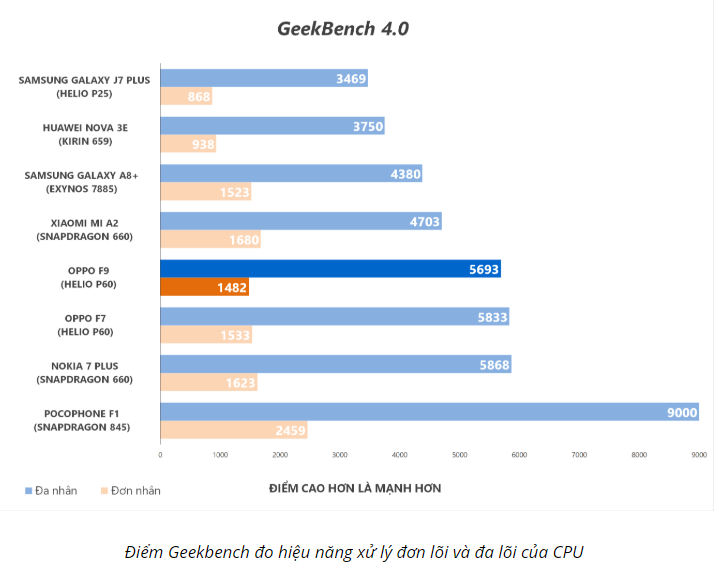 45GHz Cortex-A53 45GHz Cortex-A53 |
||||
| GPU | Adreno 619L | Adreno 509 | Adreno 506 | Adreno 505 |
| RAM | LPDDR4X | LPDDR4X @ 1333MHz | LPDDR3 | LPDDR3 |
| DSP | Hexagon 692 | |||
| Hexagon Tensor Accelerator | Hexagon 680 | Hexagon 546 | Hexagon 536 | |
| Modem | X51 5G |
2.500 Mbps down
900 Mbps up | X12 LTE
600
Mbps down 150Mbps up | X9 LTE
300
Mbps down 150Mbps up | X6 LTE
150Mbps down
75Mbps up |
| cameras | 32 MP single or 16 MP dual
(192 MP shot) | 25 MP single or 16 MP dual | 24 MP single or 13 MP dual | 12 MP single or 8 MP dual |
| Fast charging | 4+ | 4.0 | 3.0 | 3.0 |
| bluetooth | 5.1 | 5.0 | 5.0 | 5.0 |
| Process | 8nm FinFET | 14nm FinFET | 14nm FinFET | 12nm FinFET |
The Snapdragon 636 and 632 chipsets really mark the transition point between mid and low capabilities. But they are still equipped with those all important large CPU cores, which means overall performance (like navigating the system, launching/loading apps) shouldn’t be an issue.
But they are still equipped with those all important large CPU cores, which means overall performance (like navigating the system, launching/loading apps) shouldn’t be an issue.
Famous Snapdragon 600 series phones
- Google Pixel 3a
- Redmi Note 8
- Motorola Moto G8
- Samsung Galaxy A70
Snapdragon 400 series — entry-level
Now we come to the lowest performing Snapdragon series (besides the dormant Snapdragon 200 family) aimed at entry-level smartphones. But there is some good news too, as the latest Snapdragon 400 chipset is actually a massive improvement.
The new Snapdragon 460 shares many similarities with the Snapdragon 662, including heavy CPU cores (four Cortex-A73 and four Cortex-A53), the same GPU, support for HEIF, Bluetooth 5.1, and even 48MP multi-frame capture capabilities. The only real downside is that it’s expected to hit phones in late 2020 rather than being available now.
Otherwise, the Snapdragon 450 and 439 are the main 400-series chips you’ll find in phones today. They offer octa-core designs based on low-power Cortex-A53 cores, very modest LTE speeds, and stealthy Adreno 500 series GPUs. In other words, phones powered by these chips are more likely to struggle with advanced gaming and day-to-day system performance. Their main advantage is that they are quite energy efficient thanks to the 14nm and 12nm manufacturing processes respectively.
| Snapdragon 460 | Snapdragon 450 | Snapdragon 439 | Snapdragon 429 | |
|---|---|---|---|---|
| CPU | 4x Kryo 240 (Cortex-A73) | |||
| 4x Kryo 240 (Cortex-A53) | 8x 1.8GHz Cortex-A53 | 4x 1.95GHz Cortex-A53 | ||
| 4x 1.45GHz Cortex-A53 | 4x 1.95GHz Cortex-A53 | |||
| GPU | Adreno 610 | Adreno 506 | Adreno 505 | Adreno 504 |
| DSP | Hexagon 683 | Hexagon 546 | Hexagon 536 | Hexagon 536 |
| Modem | Snapdragon X11 LTE |
390
Mbps down, 150 Mbps up | Snapdragon X9 LTE
300Mbps down, 150Mbps up | Snapdragon X6 LTE
150Mbps down, 75Mbps up | Snapdragon X6 LTE
150Mbps down, 75Mbps up |
| cameras | 32MP single or 22MP dual
192MP snapshot | 48 MP single or 22 MP dual
snapshot 192 MP | 21 MP single or 8 MP dual | 16 MP single or 8 MP dual
|
| Fast charging | 3.
